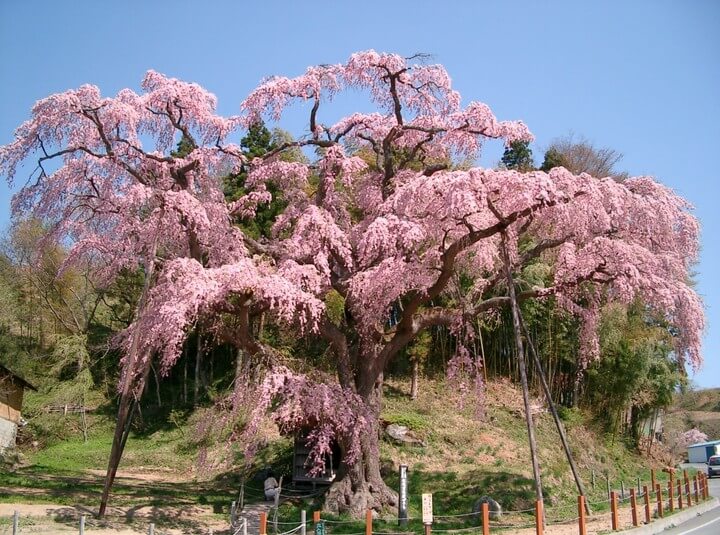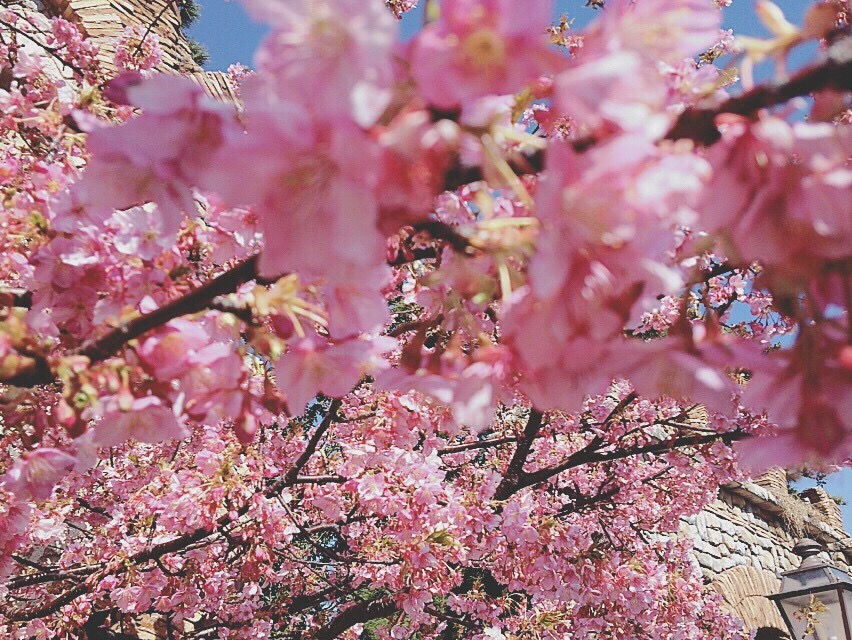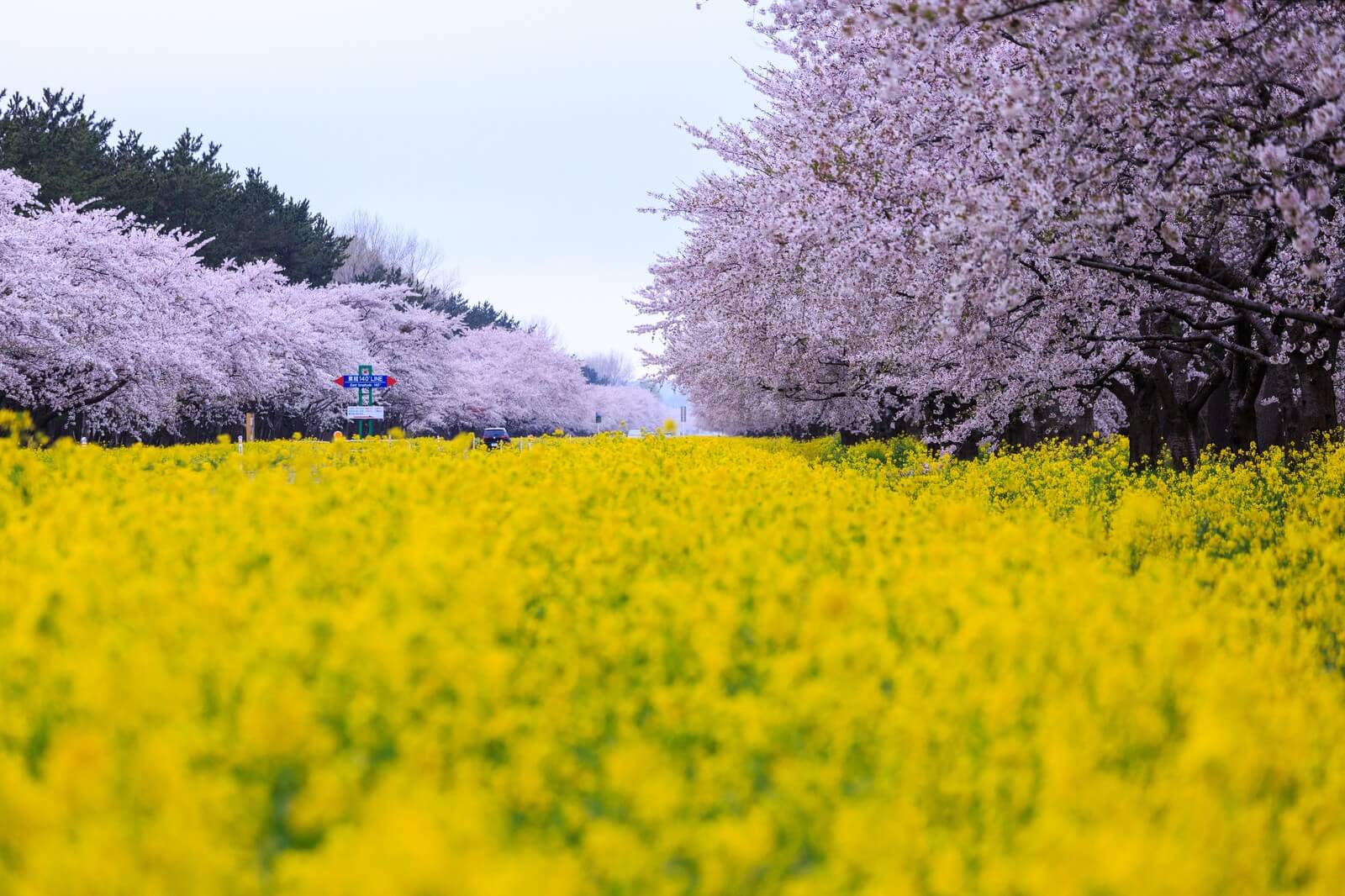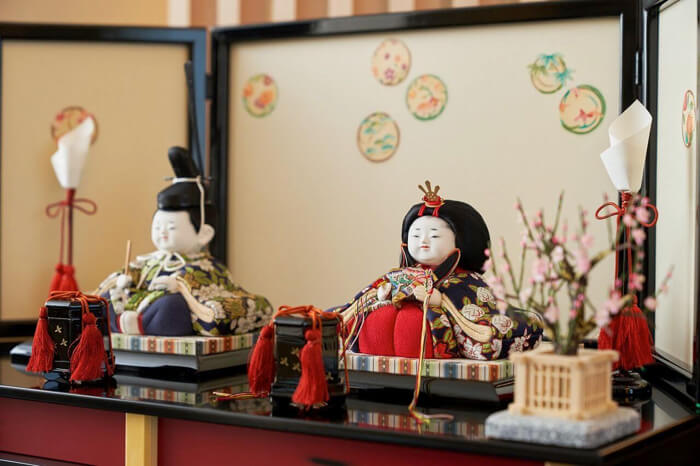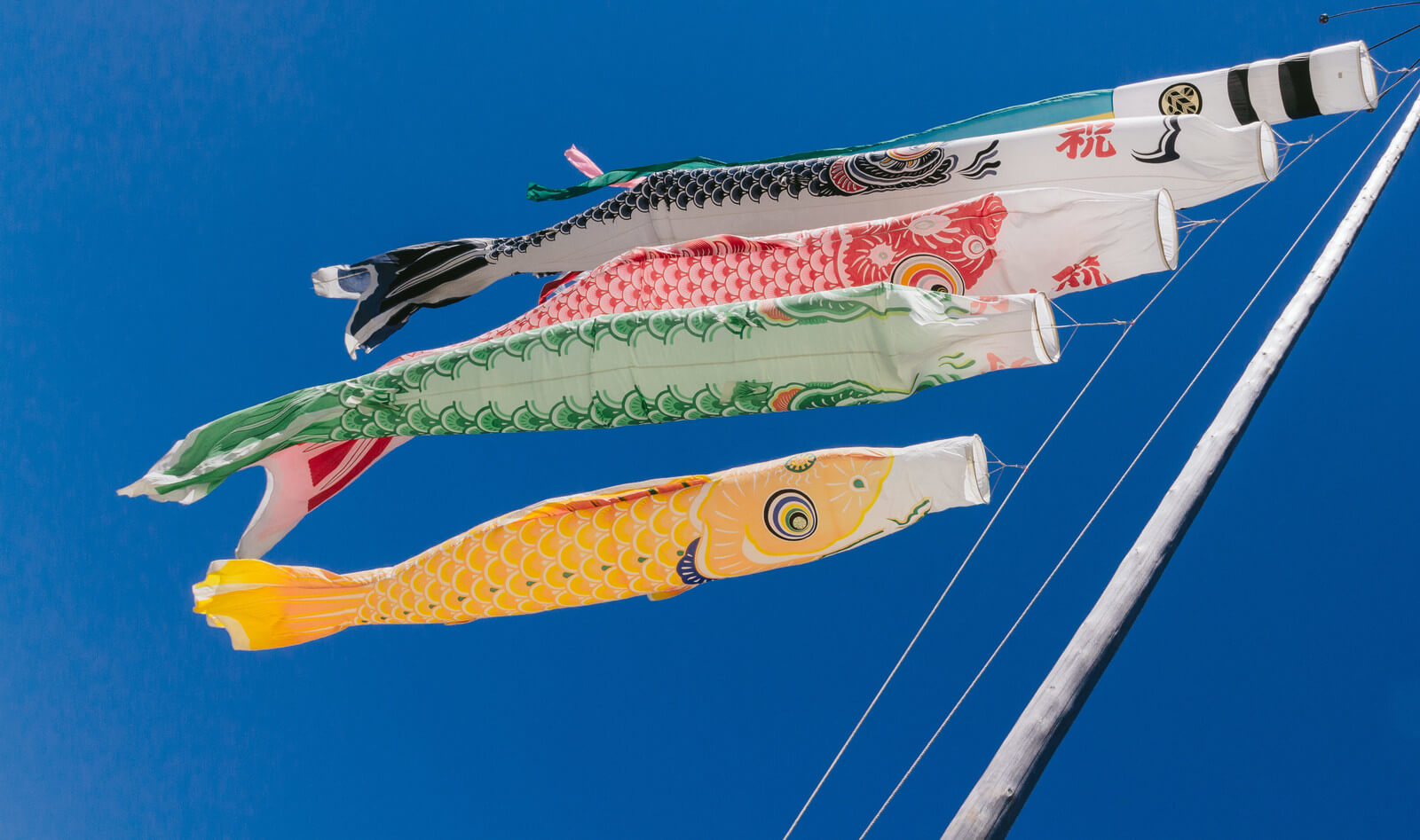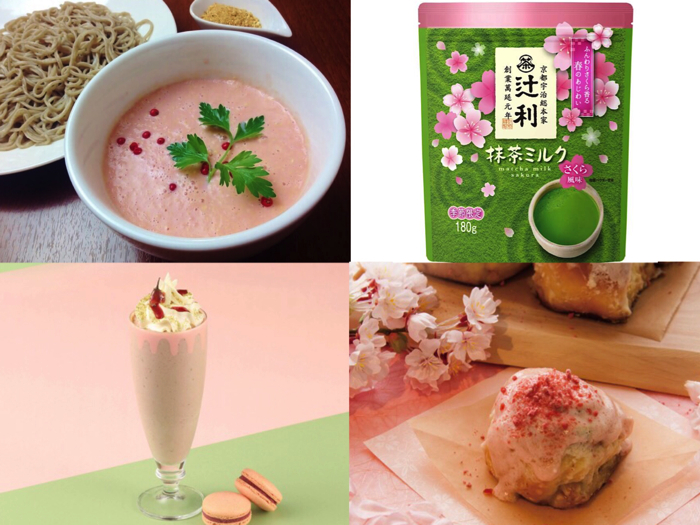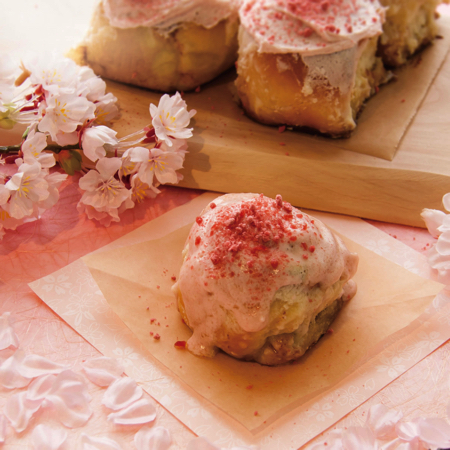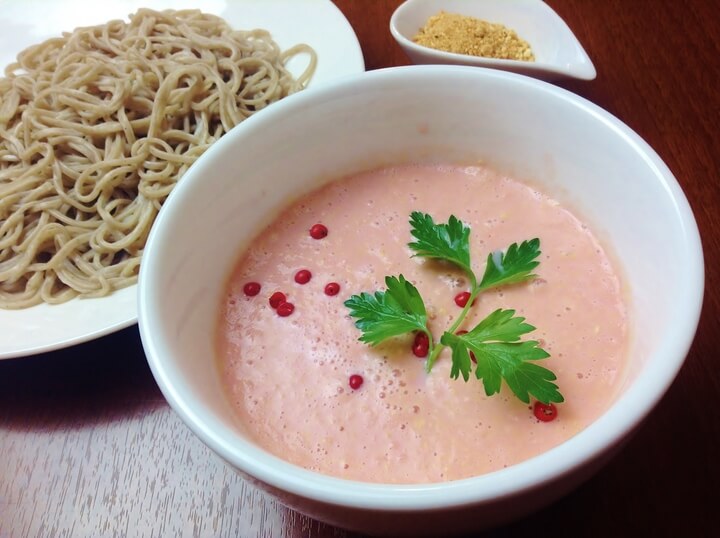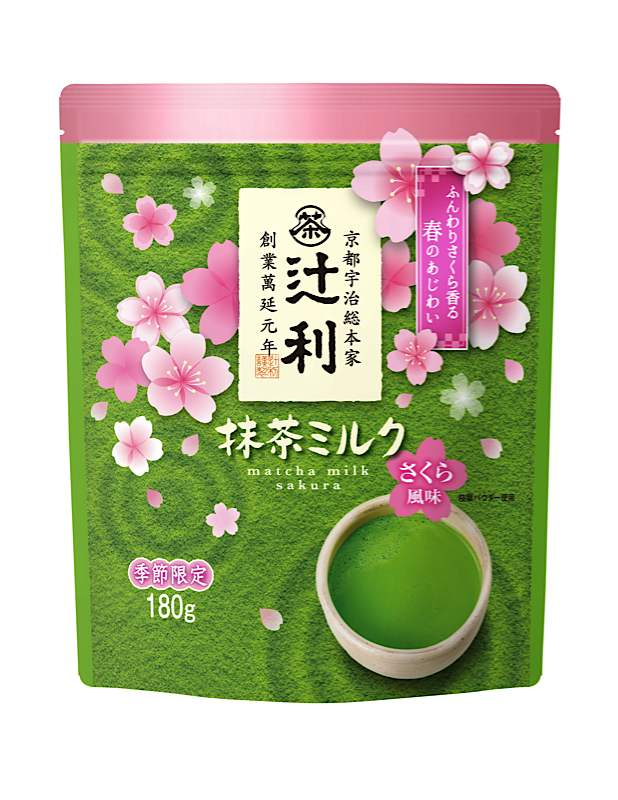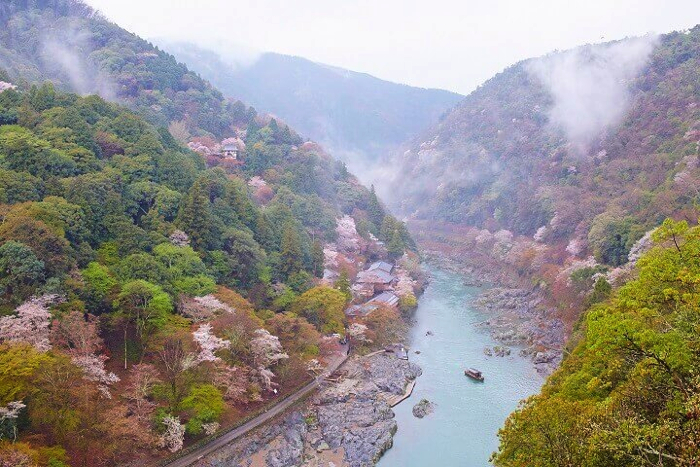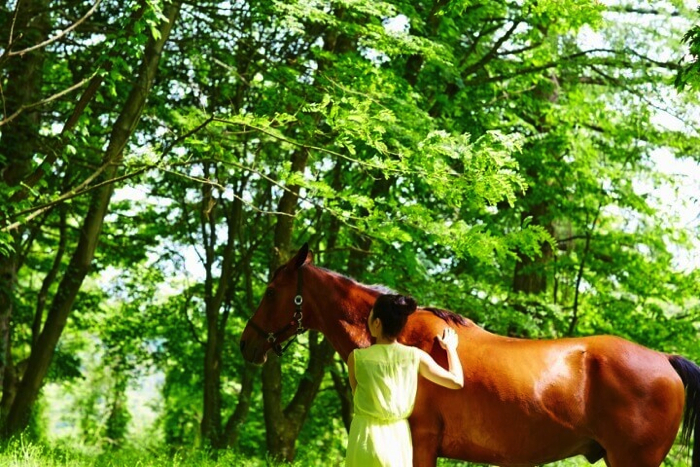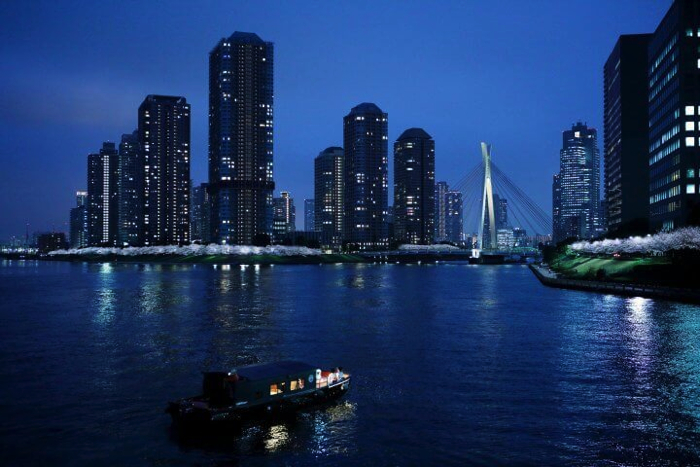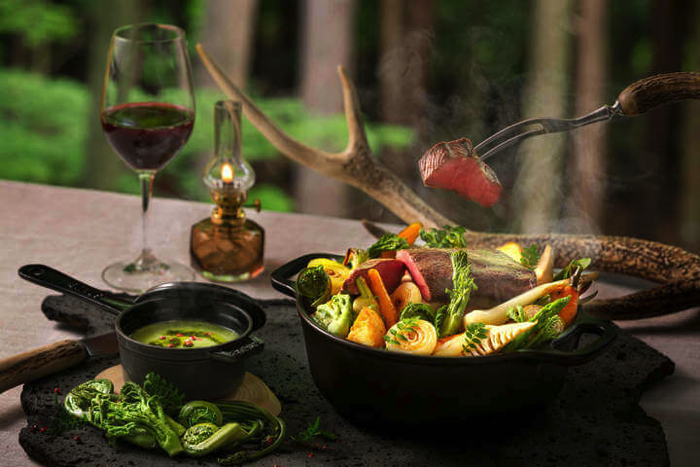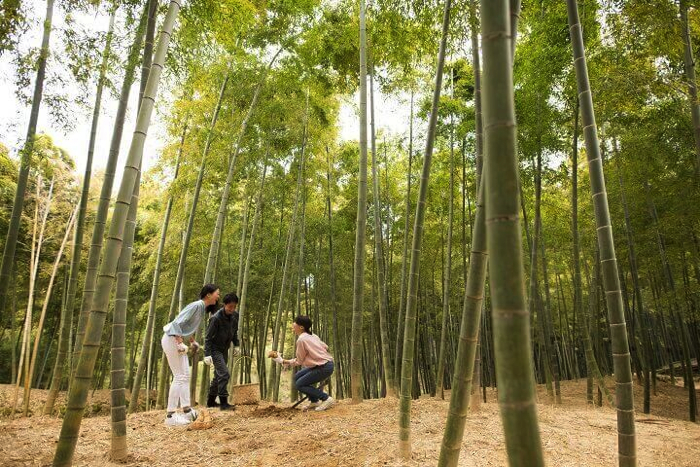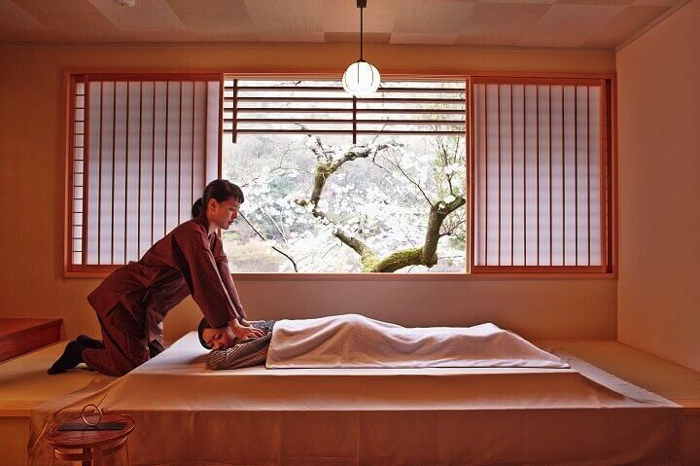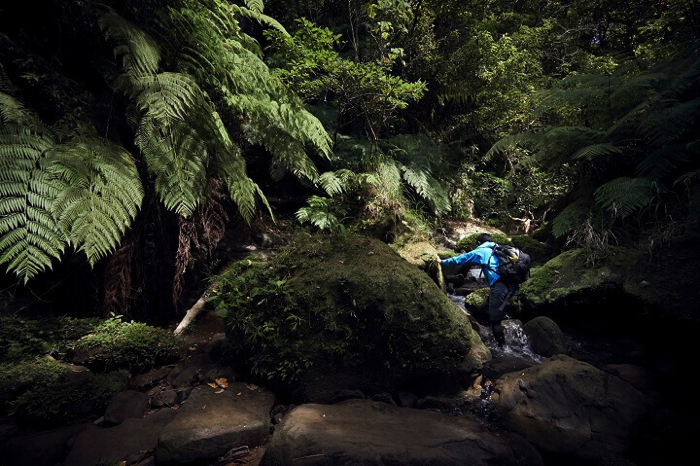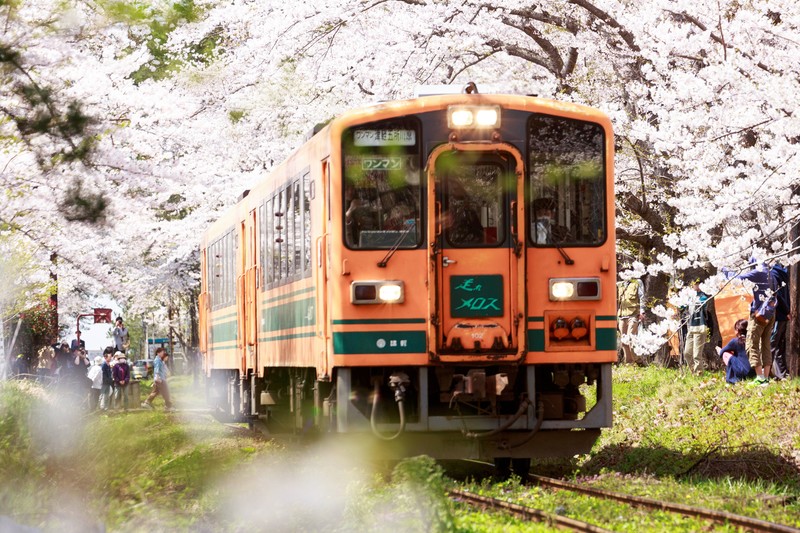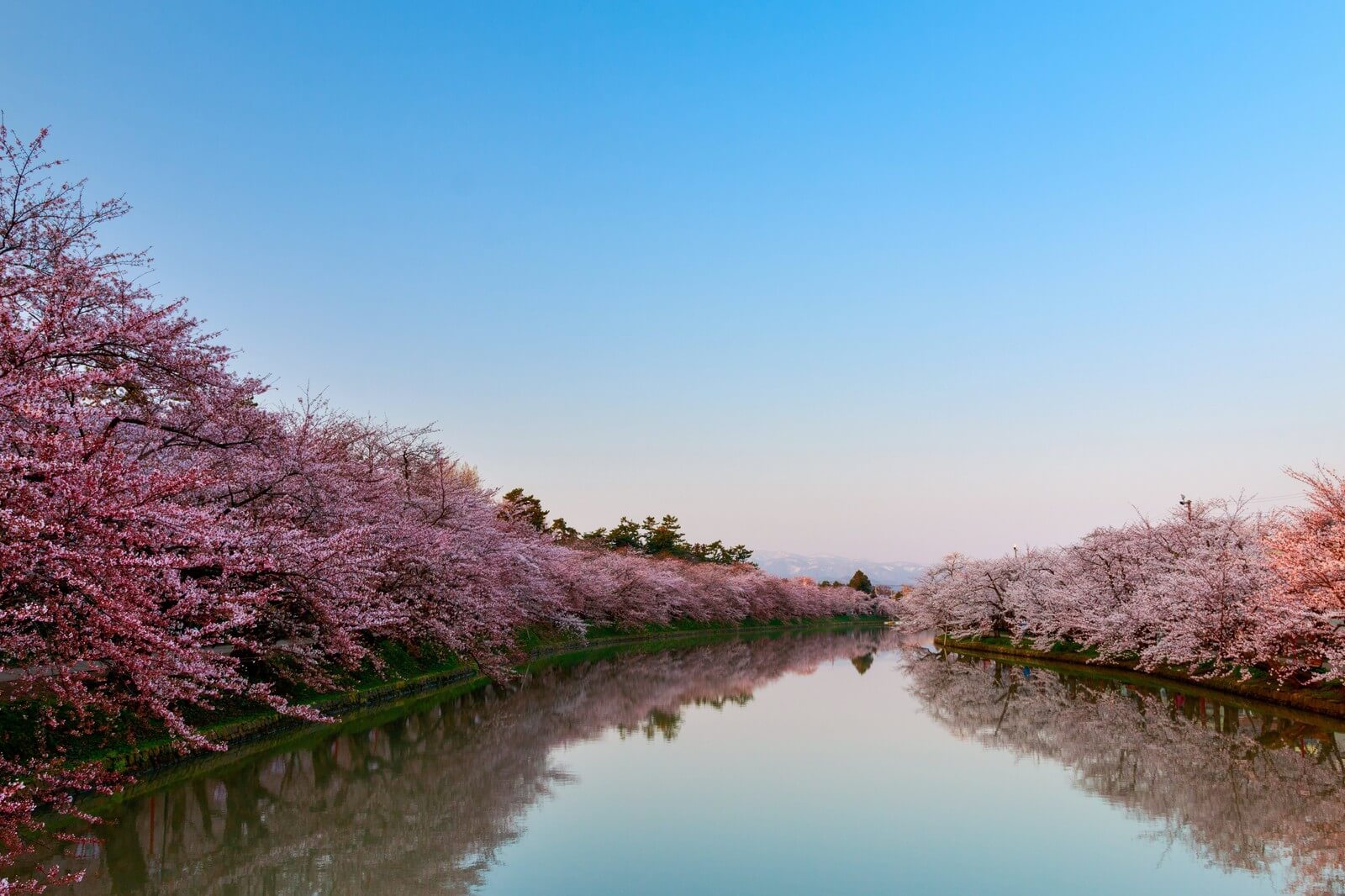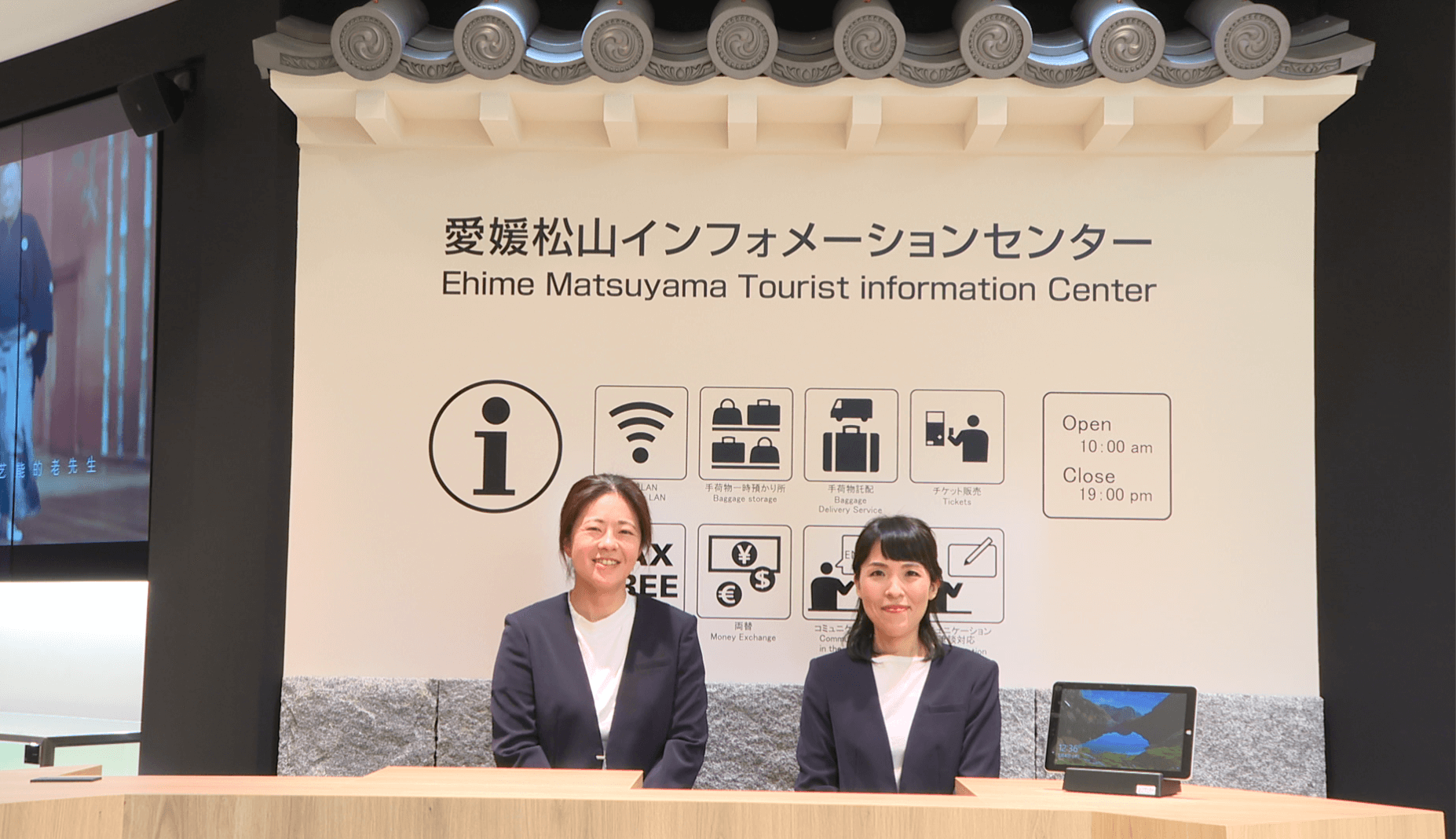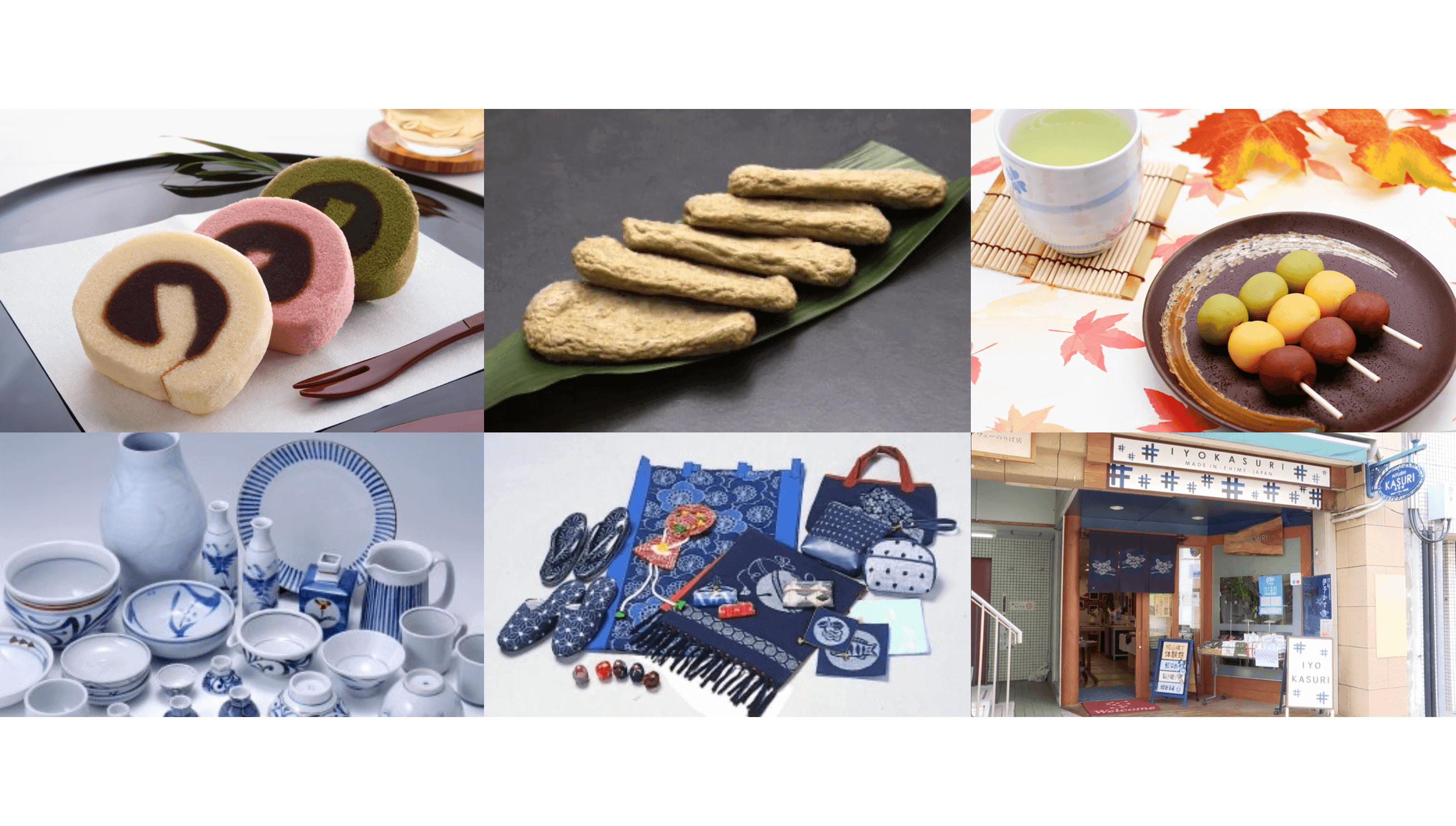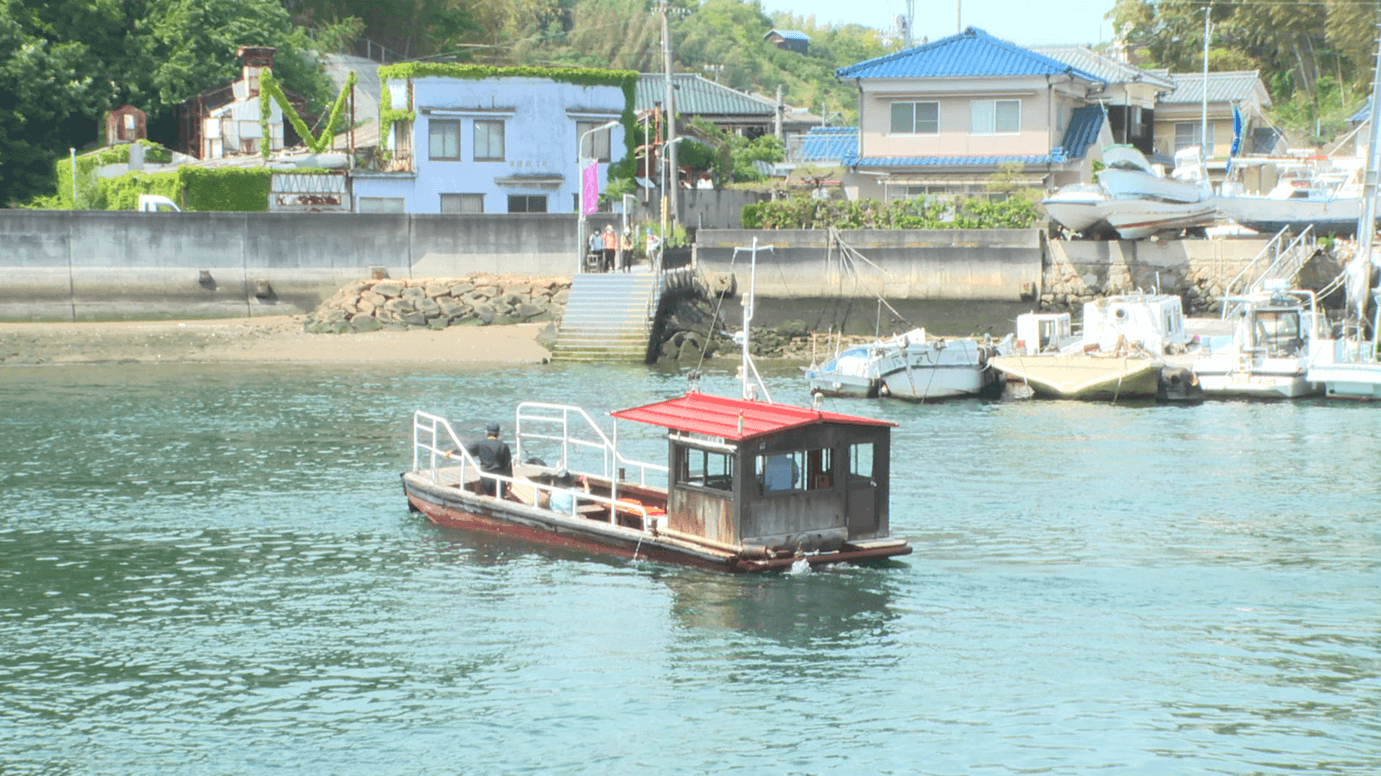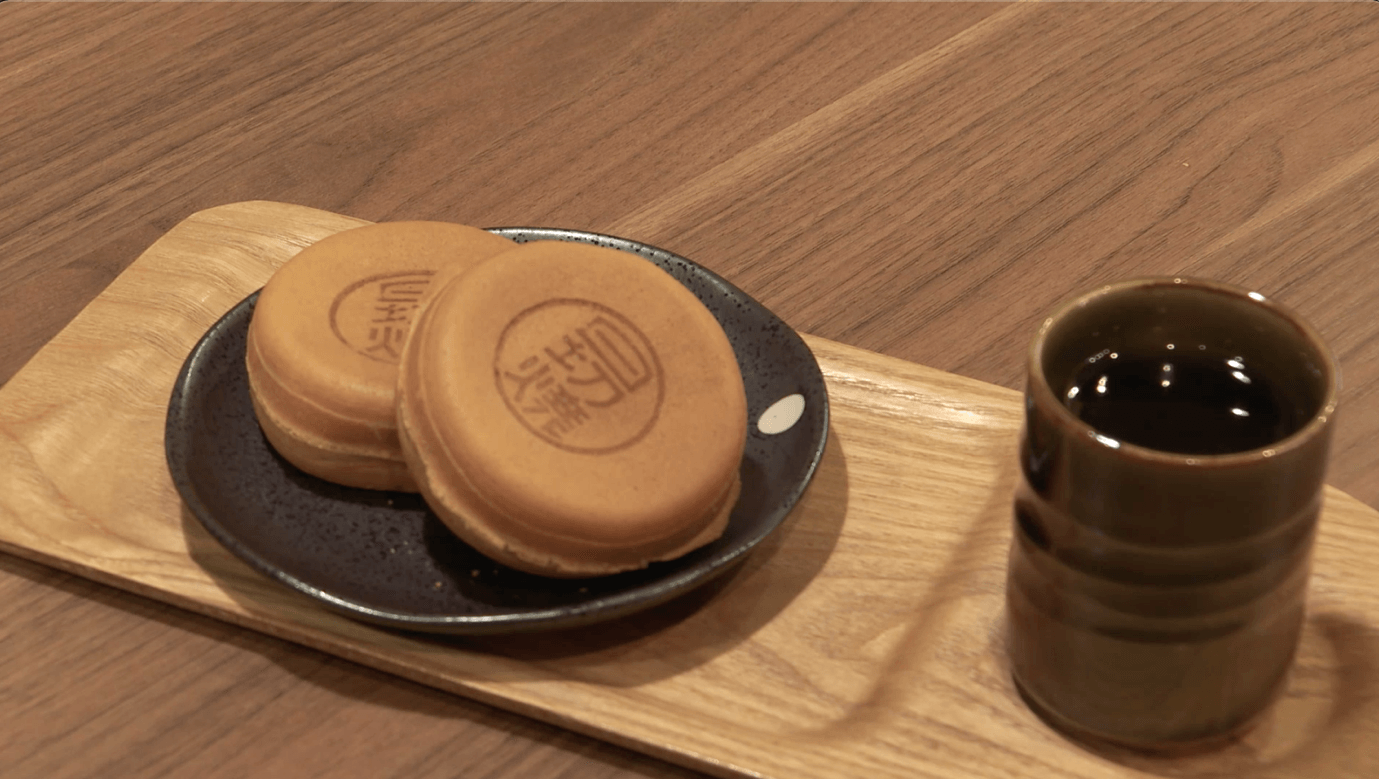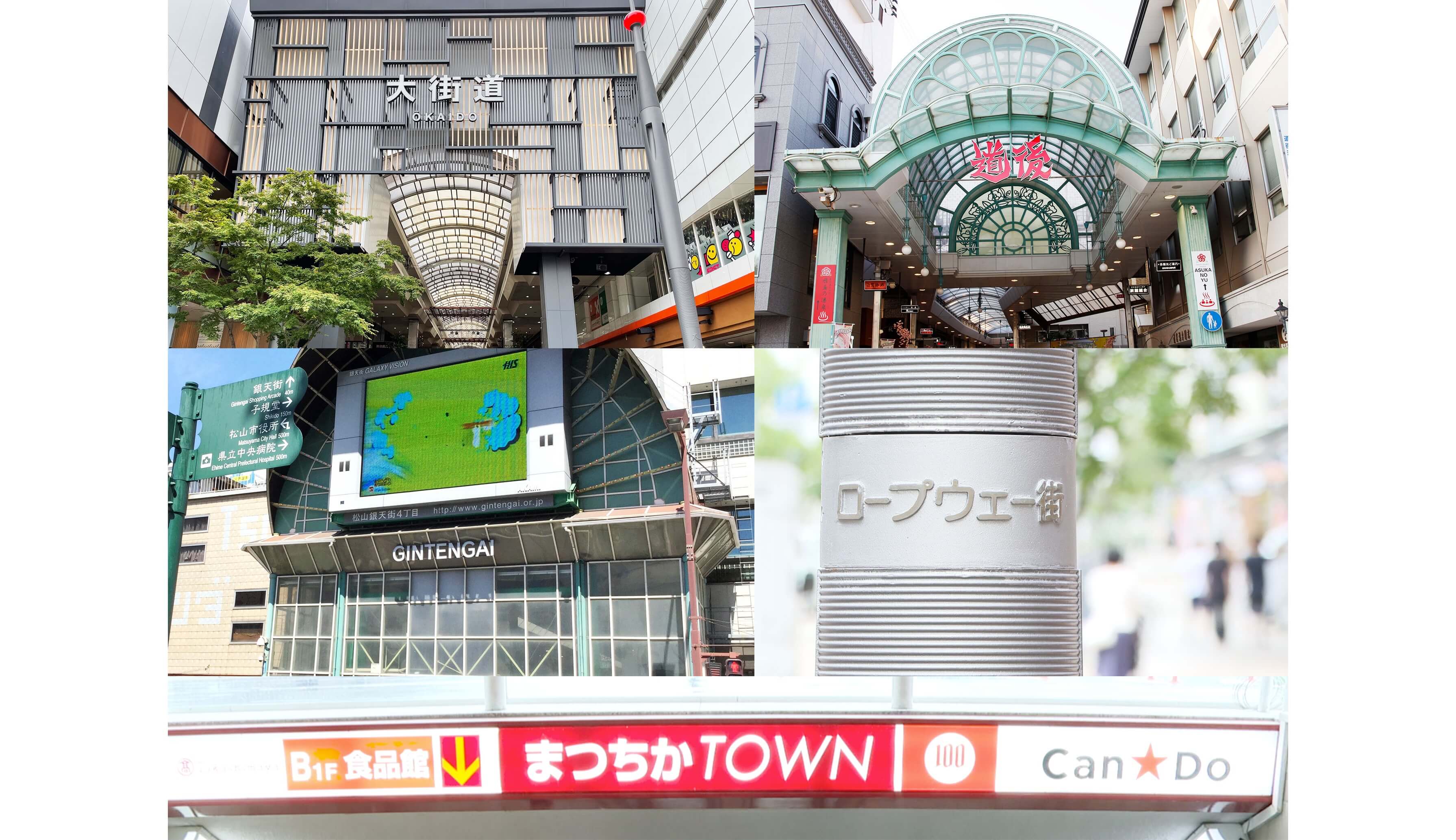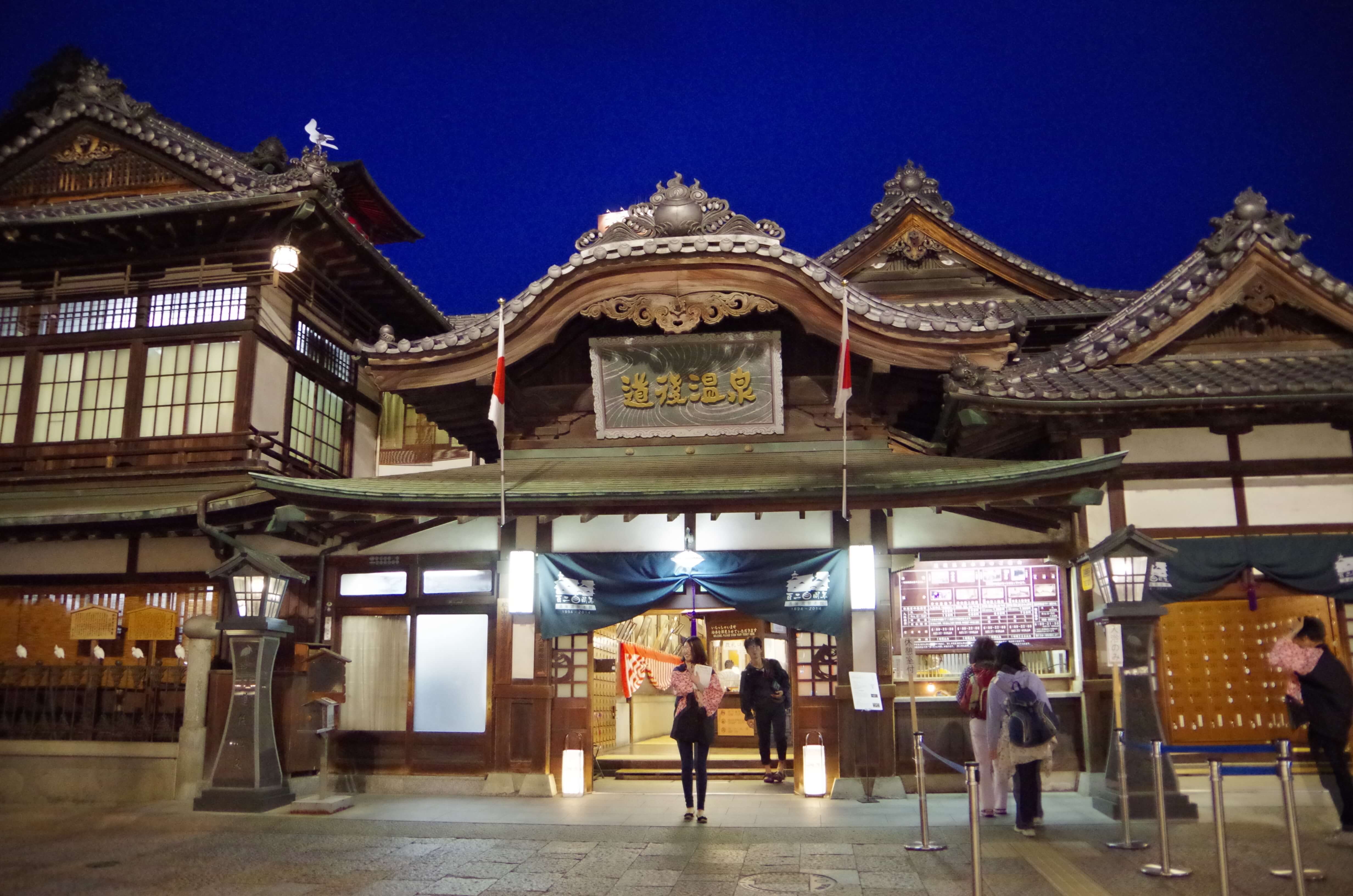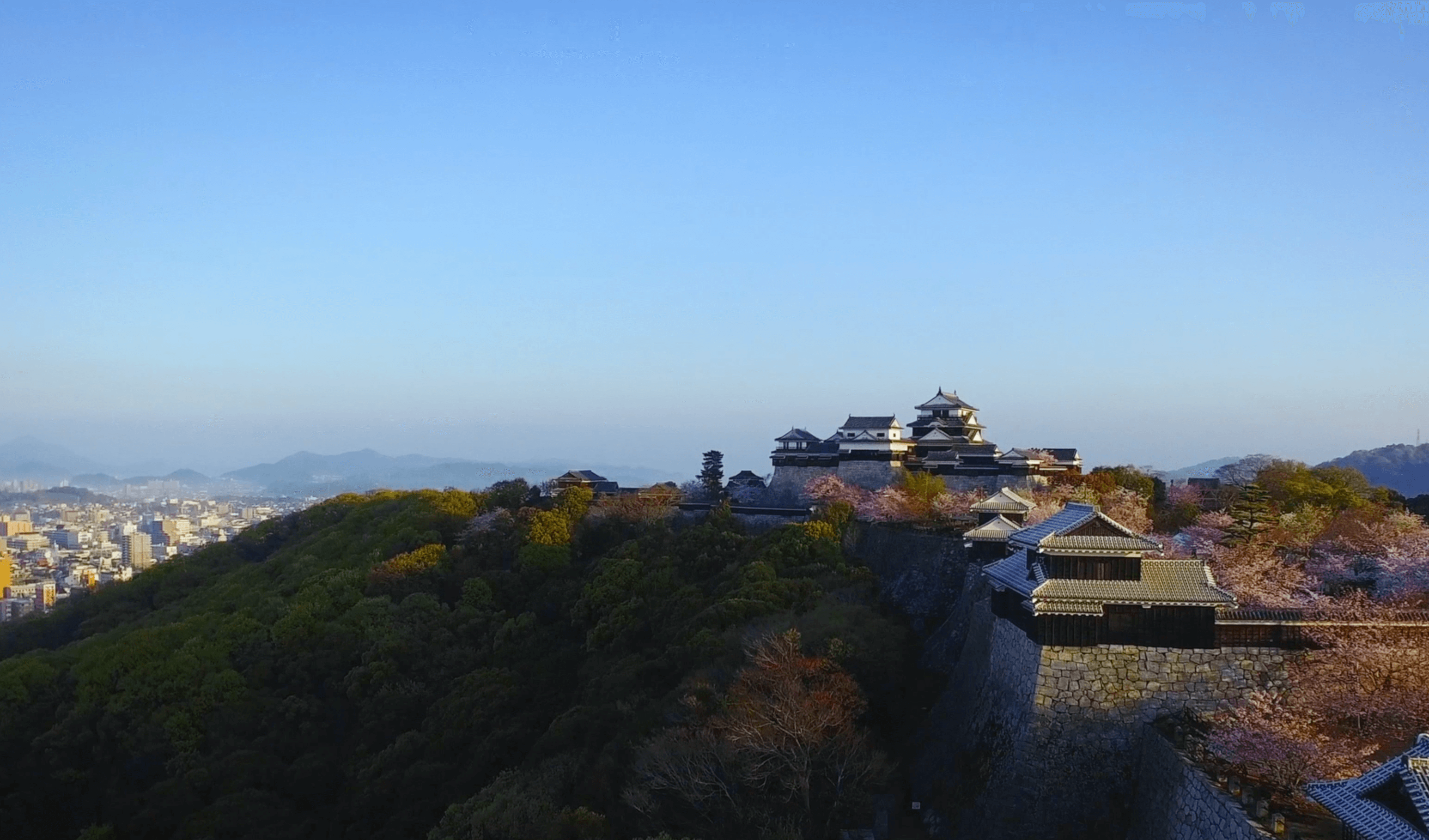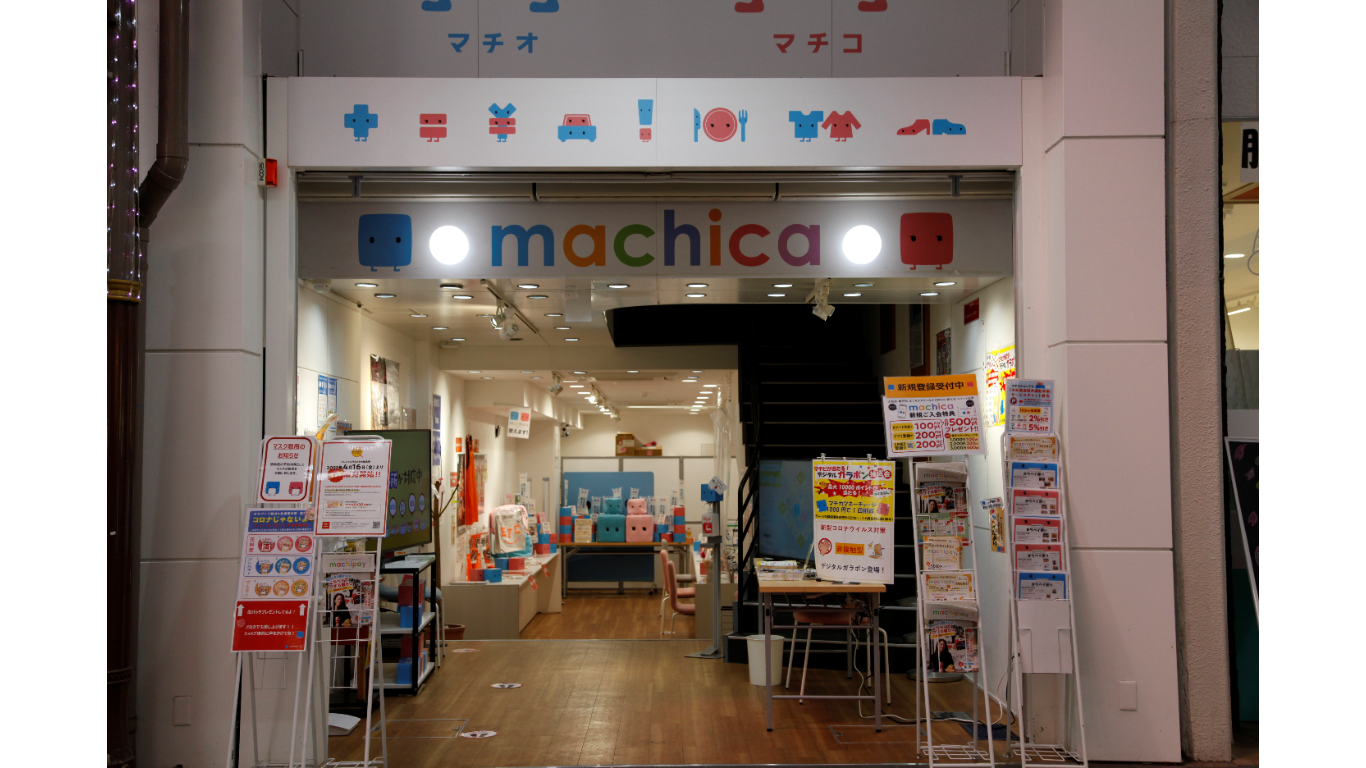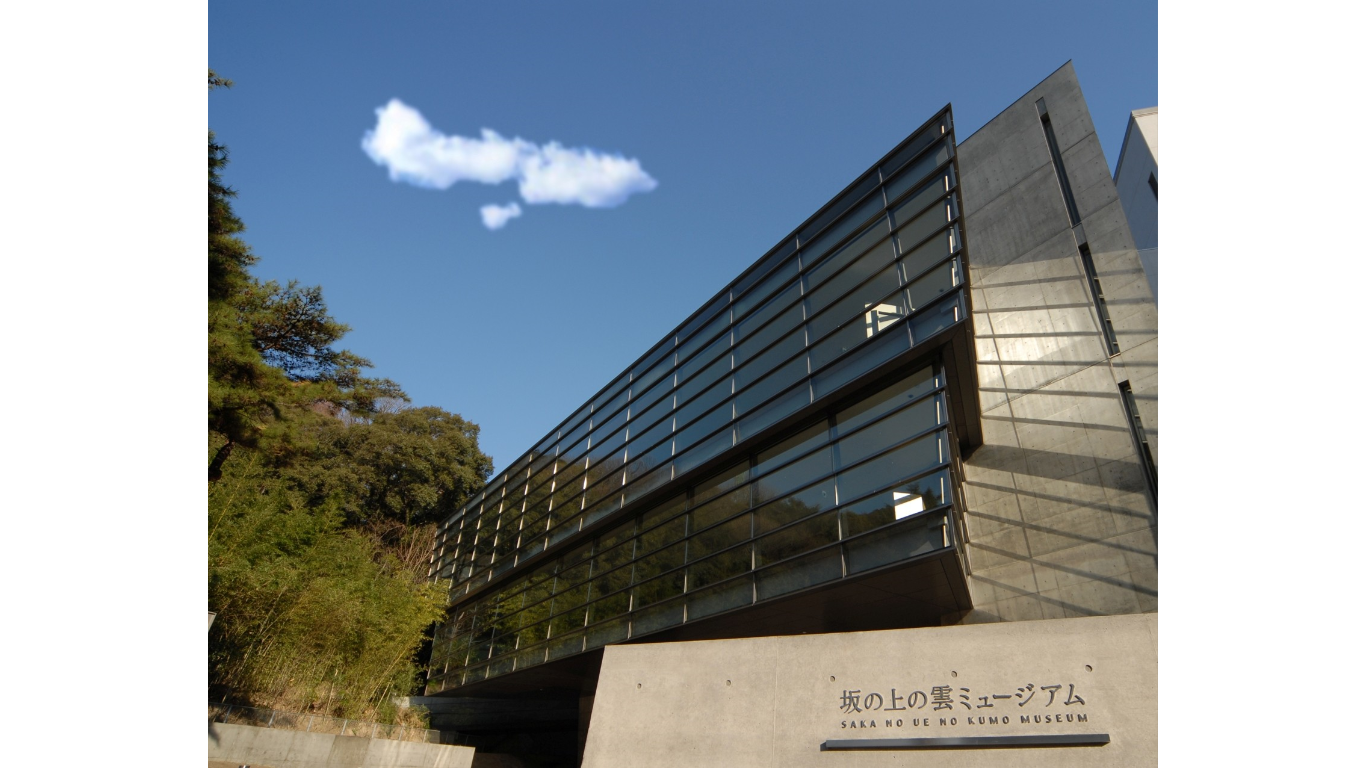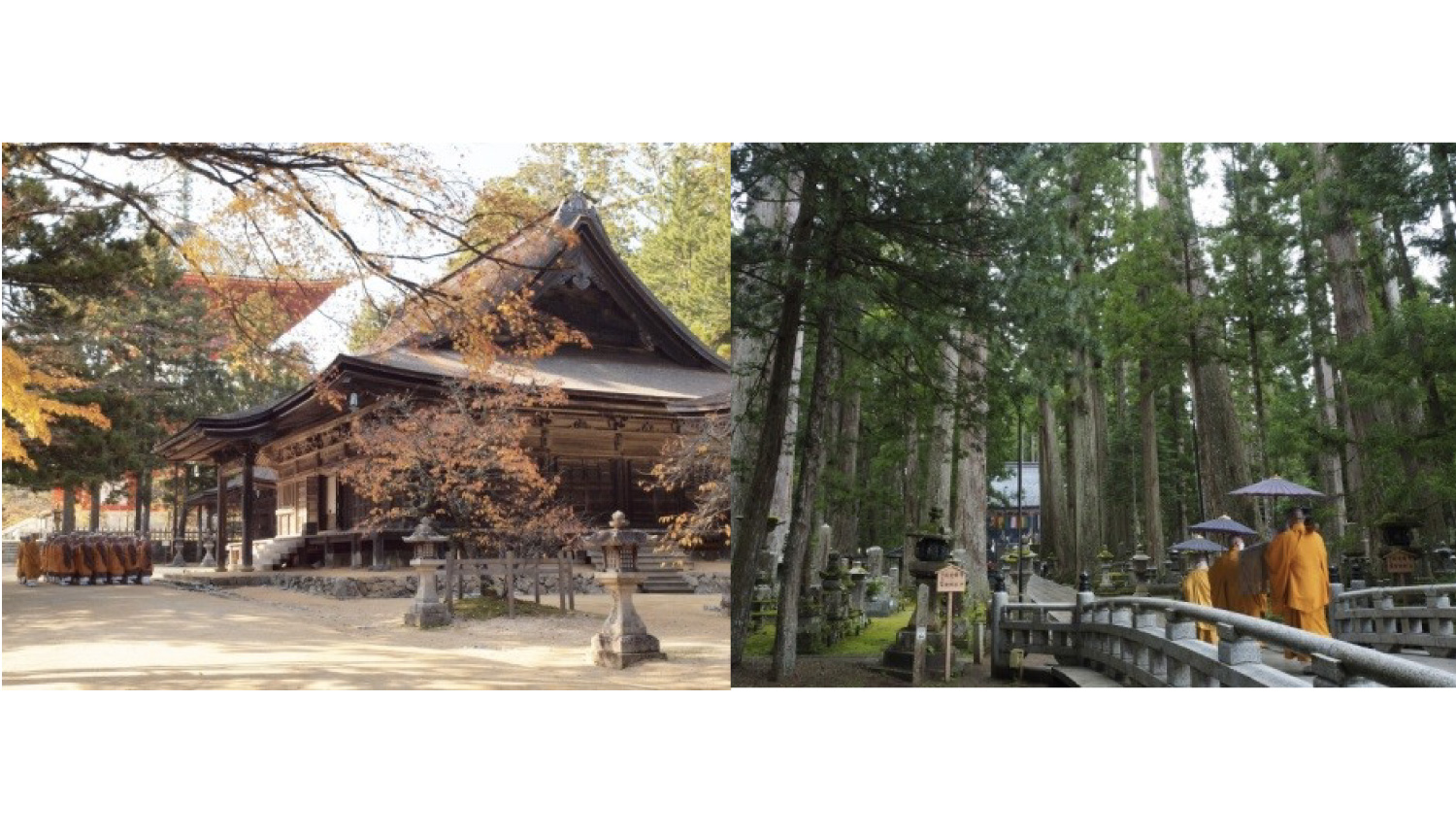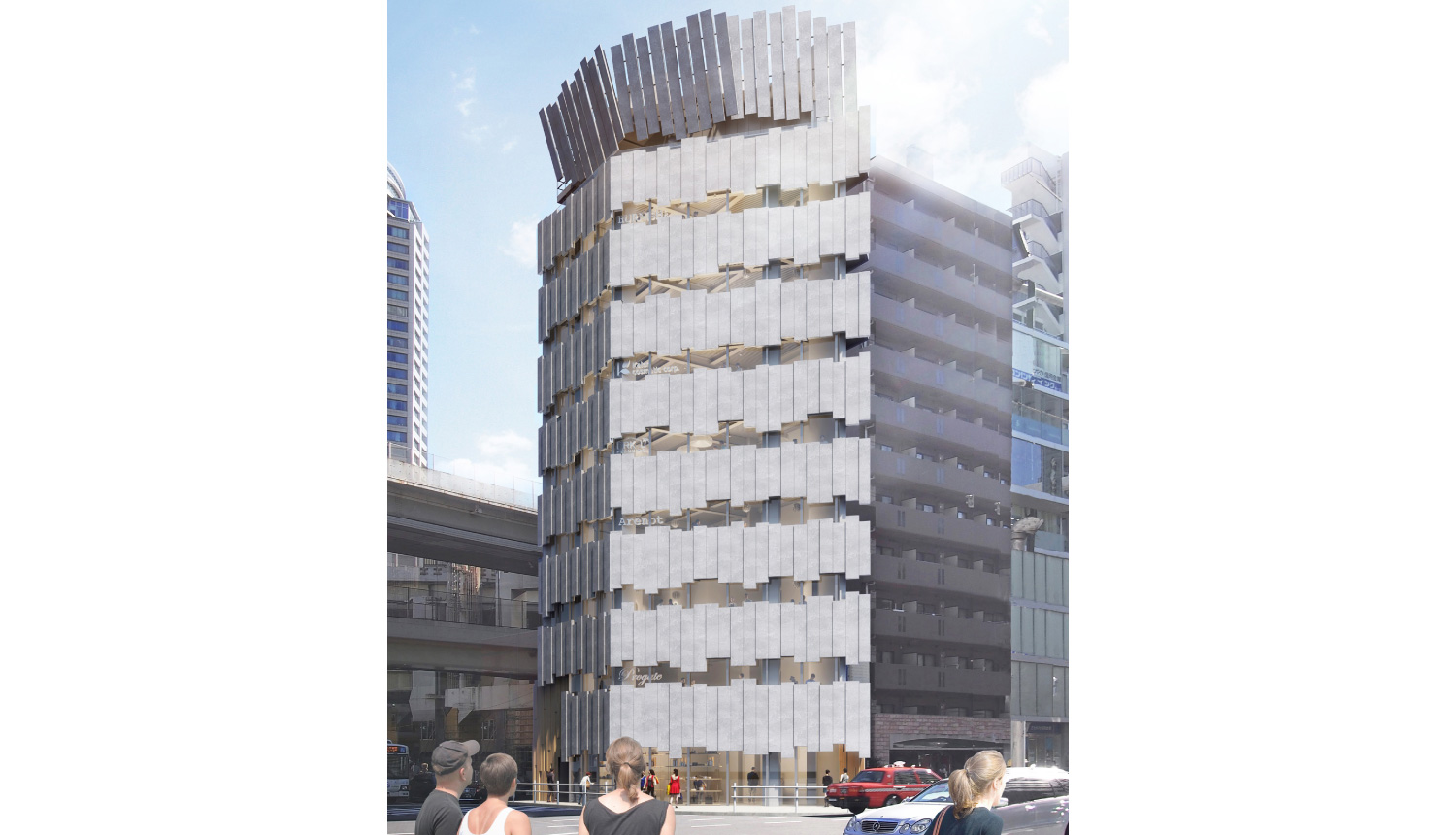There are many people whose eyes are set on Japan as a travel destination for its gorgeous cherry blossoms in springtime. There are dozens of famous locations across Japan where spring gives life to spectacular scenery.
Let’s take a look at some of the best travel destinations in Japan where spring is the best season!
“Sashimaki Shitsugen” – Akita Prefecture
Sashimaki Shitsugen is home to a 3-hectare wetland filled entirely with Asian skunk-cabbage. There are walkways erected across the wetland, offering the opportunity to freely admire the green carpet of vegetation. The best time to see the flowers is from the middle of April to the beginning of May, during which the “Sashimaki Mizubashou Matsuri” festival is held where local cuisine and local specialties are sold. We recommend seeing it together with Nyuto Onsenkyo, a famous hot spring village.
Sashimaki Shitsugen
Address: Tazawako Sashimaki, Semboku, Akita Prefecture
Webpage: http://www.city.semboku.akita.jp/sightseeing/spot/04_sashimaki.html
“Hanami in Koriyama” – Fukushima Prefecture
Koriyama is located in the center of Fukushima Prefecture, the most southernly prefecture of the Tohoku area. The city of Koriyama is known as an economically developed city since the Tohoku Shinkansen stops here. It takes about 80 minutes (7,680 yen – non-reserved seat) from Tokyo on the bullet train. It’s a suitable spot to feel Japan’s four seasons and during spring (early April to late April), cherry blossoms bloom in many places. There are places where you can view 400-year old Shidarezakura (weeping cherry trees) and along Kaiseizan Park’s cherry tree-lined road you can view almost 1,300 cherry trees in bloom including the oldest Someiyoshino (Yoshino cheery tree) in Japan.
Full Details: https://www.moshimoshi-nippon.jp/93861
“Isumi Railway” – Chiba Prefecture
The Isumi Railway in Chiba is popular because the track is surrounded by lush greenery. The entire length of the railway extends 26.8km, around 15km of which roll past expansive rich flower beds. You are sure to get your fresh fill of spring either by gazing from the train window or looking at the railroad off the train together with the yellow plants that line the track.
■Information
Isumi Railway
Address: 264 Ōtaki, Ōtaki-machi, Isumi-gun, Chiba Prefecture
TEL: 0470−82−2161
Website: http://www.isumirail.co.jp/
“Mother Farm” – Chiba Prefecture
Mother Farm is a flower and animal theme park in the Bōsō Peninsula, Chiba Prefecture. The seasonal plants and contact between the cute animals can be enjoyed anytime throughout the year, but when spring arrives the flowers roll out in all directions. This is a recommended destination if you’re traveling with kids!
Mother Farm
Address: 940-3 Tagura, Futtsu, Chiba Prefecture
Opening Hours: Weekdays 9:30-16:30 / Weekends & Holidays 9:00-17:00
Website: http://www.motherfarm.co.jp
“Toyama Bay” – Toyama Prefecture
From March to early June, countless firefly squids rush to Toyama Bay for egg spawning. April is the most active period for spawning, during which the firefly squids radiate their magical lights. You can admire the spectacle onboard a boat tour. The fairytale-like display of the firefly squids is a sight to behold, so roll up in April for the best viewing.
■Information
Toyama Bay
Address: 5 Kaigandori, Higashiwasemachi, Toyama-shi, Toyama Prefecture
Toyama Kankou Navi: http://www.info-toyama.com/tokushu/toyama-bay/
“Kyoto Botanical Garden” – Kyoto Prefecture
Kyoto Botanical Garden will hold an event titled “Sakura Light Up 2018” (March 25th—April 8th) and another titled “Sakura Sanpo” (April 13th—April 16th) where the staff of the garden will guide visitors through the garden. Enjoy numerous varieties of cherry blossoms at Kyoto Botanical Garden where 250 cherry trees will bloom inside a 7,000㎡ space. The garden is also home to a range of rare plants, so be sure to visit.
Full Details: https://www.moshimoshi-nippon.jp/89824
Kyoto Botanical Garden
Address: Shimogamo Hachigo, Sakyo Ward, Kyoto
Opening Hours: 9am-5pm (last entry 4pm)
[March 25th – April 8th] 9:00-21:00 (last entry 20:00)
[April 9th – May 31st] 9:00-18:30 (last entry 18:00)
TEL: 075-701-0141
Website: http://www.pref.kyoto.jp/plant/
Prices: Adults ¥200 yen / High School Students ¥150 / Junior High School Students and Younger – Free
*Elderly people aged 70-years-old and above and those with physical disabilities are granted free entry.
Sakura Light Up 2018
Location: Kyoto Botanical Garden “Sakurabayashi” Area
Date: March 25th, 2018 – April 8th, 2018
Opening Hours: Sunset (18:30) to 21:00 (last entry 20:00)
*The regular closing time will be changed from 17:00 to 21:00 while these events are being held (last entry 20:00)
Sakura Sanpo (Walking Event)
Venue: Areas centering around Sakura Hinsyu Mihon-en
Date:
[April 13th–April 16th] 13:00 to 13:45
[April 14th–April 15th] 13:00 to 13:45 / 17:00 to 17:45
*Due to extended opening hours in spring between April 9th and May 31st, closing times will also be extended from 17:00 to 18:30 (last entry 18:00)
*Please gather in front of Shokubutsuen Kaikan at 13:00 or 17:00 if you would like to participate in this event.
“Huis Ten Bosch” – Nagasaki Prefecture
March at Huis Ten Bosch is the time when tulips are in full bloom where they hold the “Tulip Matsuri” festival. In the daytime, you can admire Japan’s many varieties of tulips – 700 kinds in fact – and at nighttime, there is a show where the tulips are lit up with an organic EL display panel. Whether you’re there during the day or at night, you will enjoy an enchanting display of flowers.
■Information
Huis Ten Bosch
Address: 1-1 Huis Ten Bosch-cho, Sasebo, Nagasaki Prefecture
Opening Hours: 9:00-22:00
Website: https://www.huistenbosch.co.jp
Did you enjoy our pick? Be sure to tick each one off your list during your travels to Japan in spring.
RECOMMENDED ENTRIES
-
6 Most Popular Cherry Blossom Spots in Tokyo for Hanami – All Within 5 Minutes From the Station!
At first glance, Tokyo Metropolis may not look very green, but did you know it actually has a lot of popular spots where people go to celebrate Hanami (flower-viewing)?
Let’s take a look at some of those locations. All of this places in this list are within 5 minutes of a station, so they’re easy to get to! You can use this as reference for when you’re in Tokyo.
Inokashira Park
Inokashira Park is popular throughout the entire year for outings. There are around 500 cherry blossom trees that line the park, 250 of which sit along the pond. You can even get inside a boat and enjoy the cherry blossoms from the water. The west side of the park is home to various types of cherry blossoms, including early flowering ones that bloom from the beginning of March. The average annual time to see them come out is between March 20th and April 10th.
◼︎Information
Inokashira Park
Address: 1-18-31 Gotenyama, Musashino, Tokyo
Access: 5-minutes on foot from Kichijoji Station via the JR Chuo Line / 1-minute on foot from Inokashira Park Station via the Keio Inokashira Line
Contact: 0422-47-6900
URL:https://www.tokyo-park.or.jp/park/format/index044.htmlMeguro River
During Hanami, 800 beautiful cherry blossom trees roll 4km along the Meguro River. We recommend taking a leisurely stroll down the river while looking at the flowers. There’s plenty of stylish shops along the river too, so you can even do a bit of shopping on your walk.
◼︎Information
Meguro River
Access: 5-minutes on foot from Meguro Station via JR Yamanote Line/ 5-minutes on foot from Fudō-mae Station via the Tokyu Meguro Line / 2-minutes on foot from Naka-Meguro Station via the Tokyu Toyoko Line / 2-minutes on foot from Ikejiri-Ōhashi Station via the Tokyu Meguro LineURL:http://www.city.meguro.tokyo.jp/gyosei/shokai_rekishi/event/sakura.html
Mori Garden – Roppongi Hills
Mori Garden is a Japanese style garden located in the skyscraper district of Roppongi Hills. It’s also another place where you can see the cherry blossoms. The garden is also lit up at night, creating a magical and memorable scene: beautiful cherry blossoms lit up in a traditional Japanese garden. Try looking out over the garden from a high place for a collaborative view of Tokyo Tower and cherry blossoms.
◼︎Information
Roppongi Hills
Address: 6-10-1 Roppongi, Minato, Tokyo
Opening Hours: Weekdays 7:00-21:00 / Weekends 8:00-21:00
Access: 3-minutes on foot from Roppongi Station via the Tokyo Metro Hibiya Line / 6-minutes on footo from Roppongi Station via the Toei Oedo Line
Contact: 03-6406-6000
URL:http://www.roppongihills.com/
Ueno Park
One of the most popular spots for viewing the cherry blossoms is Ueno Park, drawing in tourists every year. There’s a direct connection to the park via train services. With around 800 trees, expect to see varieties including the Yoshino Cherry and Yamazakura. There’s even a zoo and a museum in the park, so you can make it a day trip.
◼︎Information
Ueno Park
Address: 5-20 Ueno Park, Taito, Tokyo
Opening Hours: 5:00-23:00
Access: 2-minutes on foot from Ueno Station via the JR Yamanote Line JR Keihin-Tohoku Line, JR Takasaki Line, JR Utsunomiya Line, Tokyo Metro Ginza Line, Tokyo Metro Hibiya Line / 1-minute on foot from Keisei Ueno Station via the Keisei Main Line
Contact: 03-3828-5644
URL:http://www.kensetsu.metro.tokyo.jp/jimusho/toubuk/ueno/index_top.html
Yaesu Sakura-dori
If you take the Yaesu Exit at Tokyo Station, you will find Yaesu Sakura-dori. Despite being in the heart of the city, this place is famous as a cherry blossom location where you can see around 150 Yoshino Cherries. You can see them lit up beautifully at night, making it a popular spot for Hanami among salary men and office workers on their way back from work. The “Sakura Matsuri” is also held in April every year, a bustling cherry blossom festival with street stalls and alcohol.◼︎Information
Yaesu Sakura-dori
Access: Right outside Tokyo Station across all JR lines / Right outside Nihombashi Station via the Tokyo Metro Ginza Line and Tokyo Metro Tozai LineShinjuku Gyoen
Shinjuku Gyoen National Garden was listed as one of Japan’s 100 most famous cherry blossom spots. The park is home to 1,100 cherry blossom trees spanning 65 types, allowing you to enjoy a lush selection. Part of the park’s charm is how long Hanami lasts there: because there’s so many different varieties of trees there, the bloom times are different, so it usually lasts from the end of March to the end of April.
◼︎Information
Shinjuku Gyoen
Address: 11 Naitomachi, Shinjuku, Tokyo
Access: 5-minutes on foot from Sendagaya Station via the JR Sobu Line / 1-minutes on foot from Shinjuku Station South Exit via the JR Lines, Keio Line and Odakyu Line / 5-minutes on foot from Shinjuku Gyoenmae Station via the Tokyo Metro Marunouchi Line
Contact: 03-3350-0151
URL:http://fng.or.jp/shinjuku/Did you enjoy your list? When the cherry blossoms are in full bloom there are lots of festivals to be enjoyed around Tokyo, so be sure to check them out.
Enjoy springtime Japan by getting involved with Hanami♩
-
Top Spring Festivals in Japan: Events in March, April & May 2018
Japan holds many traditional festivals and events every year. Today, we will take a look at some of the traditional springtime omatsuri and events happening in Japan from March to May.
Omizutori
Omizutori, or the sacred water-drawing festival, is an annual event that takes place in the Todai-ji temple’s Nigatsu-do in Nara for 2 weeks starting on March 1st. It’s a Japanese Buddhist festival that has continually taken place since the 8th century where people confess their sins before Buddha and pray for things like world peace. It’s known as the “festival that tolls the spring” as the temperature starts to get warmer once omizutori ends.
Hinamatsuri
Celebrated on March 3rd every year, Hinamatsuri is also known as “Doll’s Day” or “Girls’ Day.” During the festival, people pray for the sound health and growth of girls which is marked by putting dolls on display wearing traditional imperial court attire from the Heian Period. Households with girls in them are decorated with peach blossoms and the family enjoy a traditional meal together. The “Hokyoji Temple” in Kyoto is also known as the “Doll Temple” as every year, between March 1st and April 3rd, dolls of women from the imperial family are displayed.
Hanami
Towards the end of March, news about the opening and full bloom of cherry blossoms begins to roll in, beginning from the hot south region of Japan. This is known as the “Cherry Blossom Front.” Generally, hanami is a time when Japanese people go to view the cherry blossoms. There are many famous cherry blossom sites around the whole of Japan all of which are bustling with people every year. When the cherry blossoms, known as sakura in Japan, are in full bloom, you will see many people sat under the trees with friends and family enjoying food and drinks.
Entrance Ceremony
The school entrance ceremony (nyuugakushiki) is one of the main events of April in Japan The ceremonies are held across schools in Japan to welcome incoming students to their new schools. April is also the beginning of Japan’s fiscal year when the nyuushashiki is held, or welcoming ceremony for new employees. Companies welcome new staff who have just graduated school. You could say that April being the start of everything is unique to Japan.
Children’s Day
Until 1948, May 5th was known as Tango no Sekku and was a day to celebrate the growth of boys. It was renamed Kodomo no Hi, or “Children’s Day,” by the Japanese government to include boys and girls and became a national holiday. On this day, koinobori carp flags are raised outside people’s houses as the Japanese carp (koi) is a symbol of vitality and success.
Kanda Matsuri
Kanda Matsuri is held annually for 6 days from the middle of May at Kanda Shrine in Chiyoda, Tokyo. The festival stands alongside Yasaka Shrine’s “Gion Matsuri” and Ōsaka Tenman-gū’s “Tenjin Matsuri” as one of 3 biggest festivals in Japan. One of the main events of the festival is the Shinkousai held from morning to night where a huge parade and gorgeous portable shrine is taken around Kanda, Nihonbashi, Marunouchi, Akihabara and more. Lots of tourists attend to see the spectacle.
Did you enjoy our list? There are so many festivals and events to enjoy in Japan. If you’re coming here in spring, then make sure to experience one of the traditional ones to really get a feel for the culture.
-
Cherry Blossom Inspired Food & Drink in Japan: Spring 2018 Edition
As the cold winter continues to freeze forward, we’re all waiting in anticipation for spring’s warmth to break through. Did you know, there are places in Japan where the cherry blossoms bloom as early as the end of January? Keep that in mind as we introduce you to some cherry blossom inspired food and drink hitting Japan very soon.
“Cherry Blossom Drink” – Lindt
Lindt is an established premium chocolate brand from Switzerland founded in 1845 loved all over the world. The company will release some limited edition, early-springtime items including the “Lindt White Chocolate Sakura Ice Drink” and the “Lindt Delice Sakura” on February 16th. Enjoy this refreshing cherry blossom drink and feel the vibe of spring early.
Full Details: https://www.moshimoshi-nippon.jp/88257
◼︎Information
Lindt White Chocolate Sakura Ice Drink
Available: Lindt Chocolate Cafés throughout Japan
Date: February 16, 2018 – April 1, 2018 (*limited stock available)
Price: Ginza Branch – Eat-In (served in a glass) – ¥1,388 / Other Branches – Take Out – ¥772(The Jiyugaoka branch also offers an eat-in option)
Lindt Delice Sakura
Available: Lindt Chocolate Café except stores in outlets
Date: February 16, 2018 – April 1, 2018 (*limited stock available)
Price: 1 Piece – ¥302 yen
Lindt Delice Set
Available stores: Lindt Chocolate Café except at Ginza stores and outlet stores
Date: February 16, 2018 – April 1, 2018 (*limited stock available)
Price: ¥1,080-¥1,296 (includes one drink and two delices of your choice)
*all prices include tax
Lindt Japan: http://www.lindt.jp/
“Sakura Mini Bon” – Cinnabon
Cinnamon roll specialist store “Cinnabon” are selling a limited edition cherry blossom flavoured cinnamon roll, the “Sakura Mini Bon,” from February 1st to March 31st. The roll is topped with a gracious amounts of cherry blossom flavoured cream cheese frosting and a crunchy decoration. Enjoy an exquisite balance of subtle cherry blossom and specially made cinnamon.
Full Details: https://www.moshimoshi-nippon.jp/88270
◼︎Information
Sakura Mini Bon
Available: February 1, 2018 – March 31, 2018
Prices / Available Branches:
Sakura Mini Bon (1 roll) – ¥390
Branches: Roppongi / Futakotamagawa Rise S.C. / COCOON CITY/ atre Kichijoji
Sakura Mini Bon (3 rolls) – ¥1,170
Sakura Mini Bon Combo (6 rolls) – ¥1,850 (includes 3 “Sakura Mini Bon” and 3 “Mini Bon”)
Branches: Roppongi Store / Futakotamagawa Rise S.C. / COCOON CITY
Sakura Mini Bon Combo (3 rolls) – ¥1,100 yen (includes 2 “Sakura Mini Bon” and 1 “Mini Bon”)
Branches: Tokyo Station / atre Kichijoji
Official Website: http://www.cinnabon-jp.com/
“Spring Coloured Veggie Pota Soba” – Cafe & Bar BW CAFE
SOBA (buckwheat noodles) CAFE & BARU BW CAFE which sells original soba dishes serve up their new menu “Haruiro Vege Pota Tsuke Soba” from February 1st. Their new menu “Haruiro Vege Pota Tsuke Soba” uses lots vegetables such as fresh potatoes and corn and one can eat soba with a warm dipping soup that tastes like potage. The dipping soup and ground vegetables go well with soba since it uses a Japanese-style broth. Also, the baked cheese used as a topping adds a mildness and special aroma to the dish. Enjoy this pink-coloured soba that brings to mind cherry blossoms.
Full Details: https://www.moshimoshi-nippon.jp/87477
■Information
SOBA CAFE & BARU BWCAFE
Address: 2-7-5 Okubo, Shinjukuku, Tokyo
Opening Hours: 11:30-23:00 (last orders 22:00)
Closed: Sundays
Contact: 03-6278-9658
Webpage: http://tabelog.com/tokyo/A1304/A130401/13177140/
Haruiro Vege Pota Tsuke Soba
Price: ¥850 yen (tax incl.)
“Matcha Milk Sakura Flavour” – Tsujiri
CAFE & BARU BW CAFETsujiri Online Shop will sell a seasonally limited product of an established store in Kyoto, Tsujiri’s “Tsujiri Matcha Milk – Sakura Flavor” with only a limited supply. “Tsujiri Matcha Milk -Sakura Flavor,” is a matcha milk which has the scent of cherry blossoms and the soft flavors of Ujimatcha and milk. It is a seasonally limited flavor which uses matcha from “Tsujiri,” an established store in Uji, Kyoto. The tea masters of Tsujiri selected the Uji Matcha that goes well with milk by blending two kinds of matcha to draw out the flavor of matcha. A cherry blossom leaf powder produced in Japan is added to the soft flavor of milk to give the product its cherry blossoms flavour.
Full Details: https://www.moshimoshi-nippon.jp/84872
◼︎Information
Tsujiri Matcha Milk – Sakura FlavorReleased: January 1, 2018 (limited stock available)
Price: ¥513 (tax included)
Homepage: http://kataoka-online.jp/nr-sakura
“Spring Bouquet Salad Set” – BOTANIST café
“BOTANIST Tokyo,” the flagship store in Omotesando, is serving a spring themed menu on the 2nd floor “BOTANIST café” from February 1st to March 31st. The “Spring Bouquet Salad Set” uses lots of fruit and vegetables reminiscent of springtime to look like a botanical bouquet. They’re selling a range of other foods and sweets too which taste great and are fun to look at. Everything on the menu is available for this spring only!
■Information
BOTANIST Tokyo
Address: BONTANIST Tokyo 1F & 2F, 6-29-2 Jingumae, Shibuya, Tokyo
Opening Hours: 11:00-20:00
No fixed holidays.
Homepage: http://botanistofficial.com/
Feel the warm breeze of spring early with these cherry blossom inspired foods and drinks.
-
Seven “experience spring” plans of “Hoshinoya” throughout Japan
Hoshino Resort is an accommodation brand which has more than 30 accommodations throughout Japan including “onsen” accommodations called, “Kai,” resort hotels called, “Resonale,” and Japanse-style resort hotels called “Hoshinoya.” In this article, I will introduce to you some experience-based plans to enjoy the spring season produced by “Hoshinoya.”
Hoshinoya Karuizawa “Datsu Digital Taizai 2018”
“Hoshinoya Karuizawa” located it Nagano Prefecture, Karuizawa will hold a three-day and two-night program of enjoying the nature in Karuizawa without carrying any digital gadgets called “Datsu Digital Taizai 2018” from the 1st of March, 2018 to the 20th of July. Most people in this modern age are using PCs and smartphones daily and some of them are building up stress inside their mind. This program offers an experience of enjoying the nature of Karuizawa and playing with horses so as to release the stress of the participators.
Detailed information:
https://hoshinoya.com/karuizawa/experience/datsudigital-2018/
Hoshinoya Tokyo “Tokyo / Yozakura Fune Asobi”
“Hoshinoya Tokyo” will hold an activity titled, “Tokyo Yozakura Fune Asobi” where participators can enjoy the night view of cherry blossoms while riding on a boat and going on a night cruise from the 25th of March to the 10th of April. The boat will depart from Nihonbashi (bridge) which is 5 minutes by car from Hoshinoya Tokyo and pass Sumida River, Tajima Coast and Oyokogawa where they can view beautiful cherry blossoms. This is a 60- minute boat tour. The contrast between cherry blossoms and the night view of Tokyo is magical and superb. Also, participators can wear light-colored clothes and do up their hair. Let’s enjoy the night view and the cherry blossoms viewed from a boat while eating a bento box-lunch of “Shin Kaika” and drinking nihonsyu (Japanese sake).
Detailed information:https://hoshinoya.com/tokyo/
Detailed information:https://www.moshimoshi-nippon.jp/86754
Hoshinoya Fuji “Haru no Syuryoniku Dinner”
“Hoshinoya Fuji” located in Yamanashi Prefecture will offer “Haru no Syuryoniku Dinner” which is an experience based on a “Dutch-oven dinner” course from the 16th of March 2018 to the 30th of June. This dinner is a spring version of the dinner course that uses “venison” and “brawn” and other spring ingredients. The course is very healthy since it uses lots of wild vegetables and spring vegetables.
Detailed information:https://hoshinoya.com/fuji/dining/
Hoshinoya Kyoto “Takeno Yusan”
“Hoshinoya Kyoto,” an accommodation located in Arashiyama, Kyoto with a beautiful river-view, will hold a program called, “Takenoko Yusan” where you can harvest takenokos (bamboo sprouts), then learn how to cook them and eat them from the 25th of March 2018 to the 15th of April. In this program, you can enjoy harvesting takenokos in mountain bamboo groves where you cannot normally enter. After harvesting takenokos, you can enjoy eating dishes using the takenokos you harvested at your evening meal at Hoshinoya Kyoto. Then, on the next day, you can participate in the workshop held by the head chef of Hoshinoya Kyoto and learn how to cook takenoko. It is a program where you can enjoy learning about the harvesting of takenoko which is a standard ingredient of Kyoto cuisine.
Detailed information:https://hoshinoya.com/kyoto/experience/takenoko/
Hoshinoya Kyoto “Okuarashiyama no Hanami Toryu”
This is also a program offered by Hoshinoya Kyoto. Four cherry-blossom viewing activities will be held from the 25th of March 2018 to the 15th of April. You can enjoy the view of Okuarashiyama by participating in the event called, “Harutsuyu no Noyusan,” an early-morning hiking where you can enjoy the view of Okuarashiyama from the observation deck, “Sakurabune” where you can enjoy the view of cherry blossoms while riding on a boat, “Sakura Chakai” where you can enjoy a tea party in front of Yamazakura and “Yozakura Dinner” where you can enjoy eating dinner in front of the lit up cherry blossoms of Okuarashiyama.
Detailed information:https://hoshinoya.com/kyoto/
Hoshinoya Kyoto “Mizube no Kojitsu / Haru”
They will hold an accomodation-based spa program “Mizube no Kojitsu / Haru” from the 1st of March 2018 to the 31st of May. “Mizube no Kojitsu” is a two-day and one-night personal spa program” based on Eastern medicine. Also, this program includes another program of learning how to make healthy Japanese desserts from artisans. Moreover, they will offer a time where the participants can refresh their body and mind by offering herb roots/tree bark teas, acupuncture treatment and a lecture on body exercise.
Detailed information:http://hoshinoyakyoto.jp/#/spa/spa01
Hoshinoya Taketomijima “Iriomote Jungle Butler / Haru”
“Hoshinoya Taketomijima” located on Taketom Island, Okinawa will hold an activity tour which a jungle guide of Iriomote Island (a person who knows well about the island” will guide the participants around the island. The content and schedule of the tour can be decided at will with the jungle guide. You can experience the tropical jungle of Iriomote Island while staying at Taketomi Island where the traditional culture of Okinawa still remains such as red tile, shiisa (lion shaped monuments) and white sand roads.
Detailed information:https://hoshinoya.com/taketomijima/
Let’s enjoy the gorgeous accommodation plans of Hoshino Resort.
■Information
Hoshino Resort:http://www.hoshinoresort.com/
-
Japanese Hanami Reference Guide: 2018 Edition
Wintertime closure draws close, and soon the cherry blossoms (sakura in Japanese) will be in full bloom in Japan.
Today, we will take a look at last year’s regional data for Japan’s cherry blossom front.
*Source: Japan Meteorological Agency
Visit Okinawa to see the cherry blossoms bloom early from January
Okinawa’s cherry blossom season runs from January through February. The hikanzakura flower is one different from the Japan’s mainland cherry blossom and glares a deep pink colour like peaches and Japanese ume. Its characteristic is its tendency to bloom downwards.Hanami in Okinawa is celebrated differently than mainland Japan. You won’t see people setting up chairs to eat picnics and drink sake in Okinawa. Enjoy your Hanami in Okinawa by strolling through the tunnels of cherry blossom trees and taking photos.
2016 – First Bloom: January 14th | Full Bloom: February 8th
2017 – First Bloom: January 18th | Full Bloom: February 4thThe nation-wide peak bloom time in Japan is March.
Fukuoka
The Kyushu region of Japan has warm weather, so fully bloomed cherry blossoms appear earlier there than in Tokyo. “Nishi Park” in Fukuoka is a recommended spot by locals to enjoy Hanami where almost 1,300 cherry blossom trees stand beautifully. It wouldn’t be an exaggeration to say that every Fukuoka citizen has been to Nishi Park at least once.2016 – First Bloom: March 25th | Full Bloom: April 5th
2017 – First Bloom: March 23rd | Full Bloom: April 1st
Kyoto
Kyoto is generally more crowded during the sakura season because of tourists and sightseers. The streets of Kyoto have a deep-rooted history, and the spectacular view of them lined with cherry blossom trees is a popular sight to see. You can also enjoy the cherry blossoms at night, a completely different Hanami experience, as temples and such are lit up as night falls.2016 – First Bloom: March 31st | Full Bloom: April 7th
2017 – First Bloom: March 28th | Full Bloom: April 5th
Osaka
Each year, the cherry blossoms in Osaka bloom around the same time as in Kyoto. Osaka Castle Park was chosen as one of the 100 best places to see cherry blossoms in Japan, where you can encounter a fascinating sight of both a castle and cherry blossoms in the same place.2016 – First Bloom: March 30th | Full Bloom: April 6th
2017 – First Bloom: March 28th | Full Bloom: April 5th
Nagoya
There are many Hanami spots to visit in Nagoya, from inner-city parks to tree-lined streets and avenues. There are also food stalls set up so you can enjoy food and flowers to your heart’s content.2016 – First Bloom: March 28th | Full Bloom: April 6th
2017 – First Bloom: March 26th | Full Bloom: April 3rd
Tokyo
Tokyo is absolutely brimming with fantastic Hanami spots, a lot of which are very close to train stations, making them easily accessible. The hugely popular Meguro River and Inokashira Park are always bustling with people around this season.2016 – First Bloom: March 21st | Full Bloom: April 2nd
2017 – First Bloom: March 26th | Full Bloom: April 3rdFlowers bloom from early April in the Tohoku region
The cherry blossoms come out much later in the Tohoku Region compared to other regions around Japan. In places where the sea level is high, you can also enjoy the flowers in May. One of the most famous locations is Miharu Takizakura in Fukuoka Prefecture. Recognized as one of Japan’s 3 biggest cherry trees and a designated national treasure, the tree stands at a towering 12 meters tall, and the cherry blossom bloomed branches stick out almost double that on each side. This 1,000 year old tree is a must-see.2016 – First Bloom: April 10th | Full Bloom: April 14th
2017 – First Bloom: April 11th | Full Bloom: April 16th
Cherry blossoms appear late April in Hokkaido
In Hokkaido, you can look forward to seeing a variety of different sakura, from the nation-wide Yoshino Cherry to the deep-pink Sargent’s cherry and chishimazakura, whose colour changes across the cherry blossom season from the first bloom to full bloom. And if you’re lucky enough to be there when snow falls out of season, you’ll have the amazing opportunity to see a magical scene of snowy sakura.2016 – First Bloom: April 28th | Full Bloom: May 3rd
2017 – First Bloom: May 3rd | Full Bloom: May 7thDid you enjoy this list? If you’re travelling to Japan for Hanami then be sure to use this article for reference.
-
6 Best Hanami Spots in Japan: March 2018 Edition
‘Hanami,’ the Japanese tradition of flower-viewing, is a must-do when visiting Japan in springtime. Today, we’re taking an early look at some of the best spots to see Japan’s cherry blossoms during the hanami season in March.
Mitsuike Park (Kanaga Prefecture)
Covering an area of 29.7 hectares, this huge park is also known as “Hyakuju no Mori” for its lush greenery. The trees are surrounded by three ponds, which is where the park gets it name “mitsuike” from (3 ponds), and Yoshino Cherries bloom flowers, gorgeously decorating the waterside. The beauty of Mitsuike Park made it one of the 100 most famous locations for cherry blossoms in Japan. There are 70 varieties of cherry blossoms that flower the environment, from campanulata, which bloom from the start of February, to rarer types such as the yellow ‘ukon’ sakura and yokohamahizakura.
■Information
Mitsuike Park
Address: 1-1 Mitsuike Park, Tsurumi-ku, Yokohama-shi, Kanagawa Prefecture
Kawazuzakura (Shizuoka Prefecture)
The ‘kawazuzakura’ is a natural crossbreed of campanulata and the early-blooming Oshima cherry. This breed has a reputation for flowering before other cherry blossoms. Almost 8,000 trees decorate the Kawazu River around town. The kawazuzakura was also chosen as Shizuoka Prefecture’s number 2 cherry blossom, making this a popular spot for hanami.
■Information
Kawazuzakura
Address: Around the region of – Hama, Kawazu, Kamo District, Shizuoka Prefecture
Webpage: http://www.kawazuzakura.net
Sakuma Dam Park (Chiba Prefecture)
Sakuma Dam is a place of relaxation and refreshment upstream Sakuma River where you can enjoy hiking and camping amongst daffodils, ume and azalea. Many cherry blossoms bloom there including the early-bloomer kawazuzakura, Yoshino cherry, shidarezakura, and yaedazakura, making a great spot for hanami and a location where you can enjoy the cherry blossoms over a long period.
■Information
Sakuma Dam Park
Address: 39 Okuzure, Awagunkyonanmachi, Chiba Prefecture
Webpage: http://sakumadam.com
Kyunakagawamizube Park (Tokyo)
This park is maintained as a place for relaxation where cherry blossom loving locals plant cherry trees. This one’s also home to the kawazuzakura, and since a wide variety of trees are planted, you can enjoy the cherry blossom season even longer. It’s popular as a hidden, tucked-away gem of a location as it rarely appears on maps.
■Information
Kyunakagawamizube Park
Address: 1-2 Higashisumida, Sumida-ku, Tokyo住所:東京都墨田区東墨田1~2丁目ほか
Hirano Shrine (Kyoto)
Hirano Shrine is famous for its cherry blossoms, a symbol of the enshrined gods’ vitality, which have been around since the Heian Period. It’s home to 400 trees comprised of 60 types of cherry blossoms. Expect to see the ‘momozakura’ which comes out at the beginning of March, as well as the famous ‘sakigake-sakura.’ The Yoshino will bloom at the end of April, followed by rare varieties that will flower one after the other. Hirano Shrine is Kyoto’s 5th most popular hanami spot.
■Information
Hirano Shrine
Address: 1 Hirano, Miyamotocho, Kita-ku, Kyoto-shi, Kyoto
Opening Hours: 6:00-17:00 (flowering period until 21:00)
Homepage: http://www.hiranojinja.com
Rokugi-en (Tokyo)
Kigugi-en is a representative garden of the Edo period and designated ‘special place of scenic beauty’ as specified by the Japanese government. When the end of March rolls in, the heart of the garden is in full bloom with shidarezakura, a spectacular view that looks like a running waterfall. The shidarezakura can normally be seen before the Yoshino cherries and are truly a sight to see at nighttime.
■Information
Rokugi-en
Address: 6-16-3 Honkomagome, Bunkyo, Tokyo
Opening Hours: 9:00-17:00 (last entries 16:30)
Webpage: https://www.tokyo-park.or.jp/park/format/index031.html
Did you enjoy our special selection? For full details on the various locations at the cherry blossoms, be sure to visit the webpages (Japanese). ‘Hanami’ is an important tradition in Japan – the magnificent cherry blossoms absolute must-see, so don’t miss out.
RELATED ENTRIES
-
KYARY PAMYU PAMYU meets IMABARI: A Visit to the Historical Sea Route
Imabari is a city in Ehime Prefecture that faces the Seto Inland Sea. Since olden times, it has flourished as an important location for marine traffic. It’s home to a bounty of recognised national treasures and historical heritage sights, and is also famous for its production of citrus fruits such as mikan. Japanese pop star, model, and icon Kyary Pamyu Pamyu took a trip to this ancient city to discover its wonder and beauty.
A Visit to the Historical Sea Route
Oyamazumi Shrine
A ‘power spot’ revered by prominent people
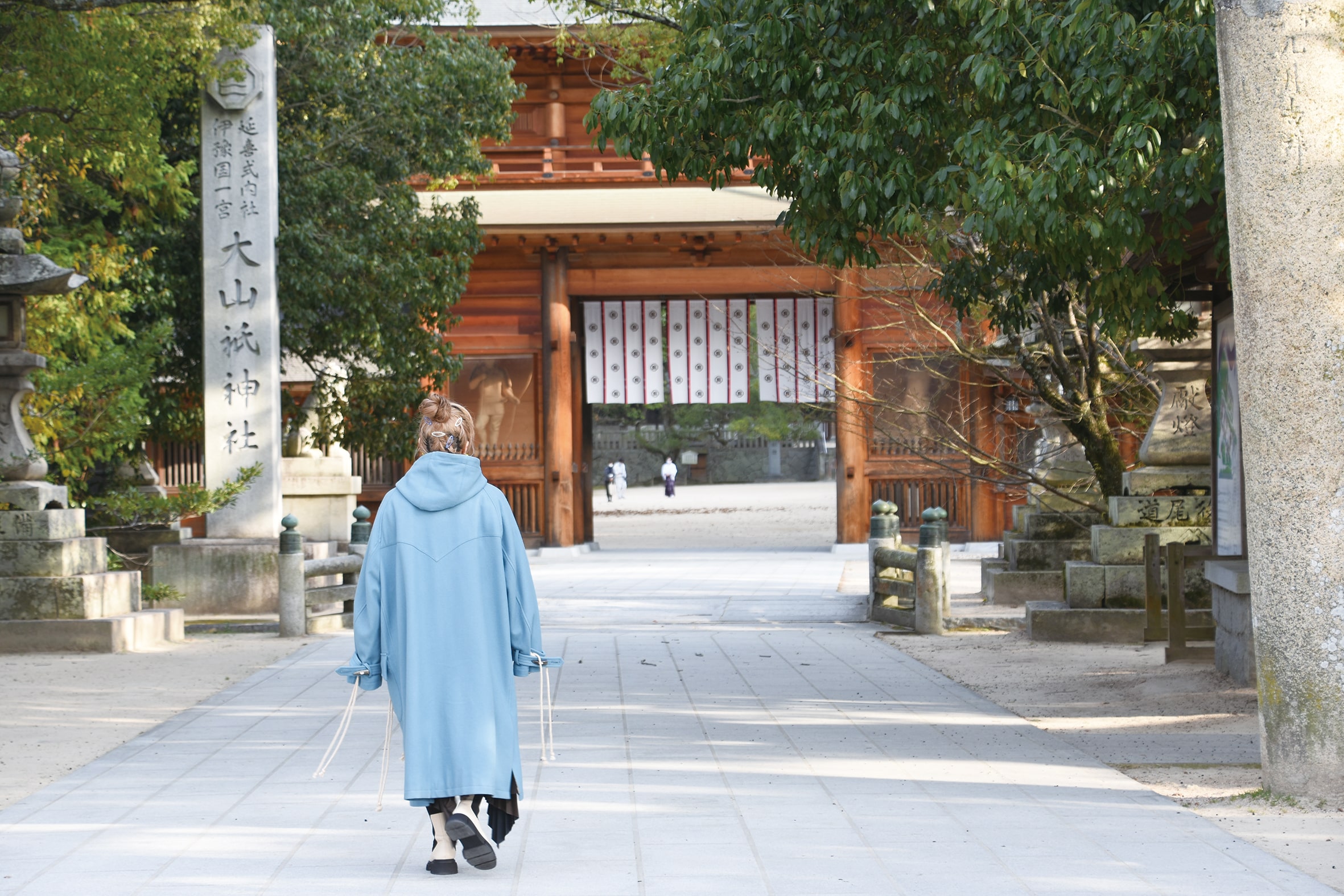
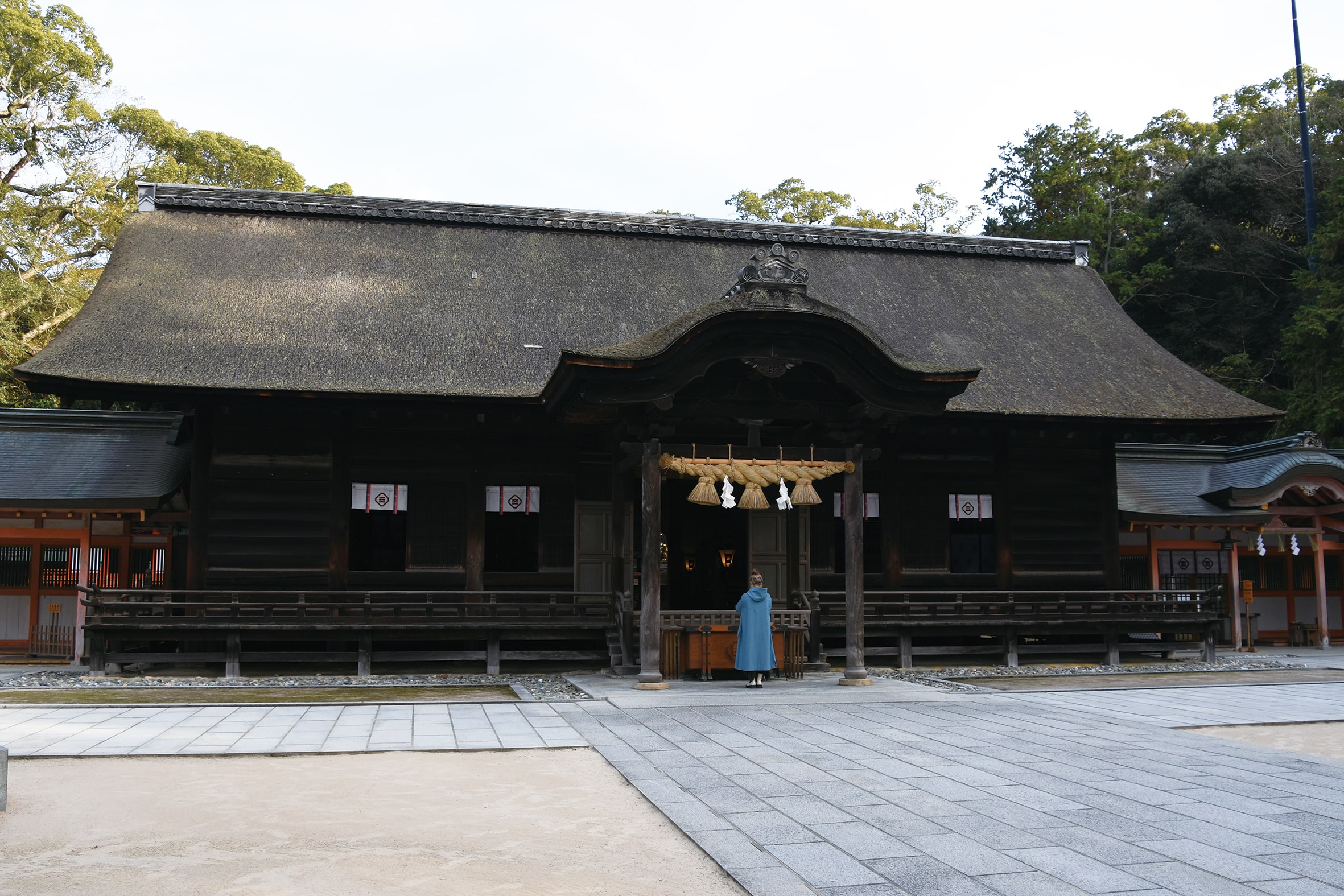
Oyamazumi Shrine has been revered by prominent figures throughout history as a place dedicated to the god of the mountain, god of the ocean, and the god of war. It’s home to numerous Important Cultural Properties which are available for viewing by the public such as the armour worn by the military commander Minamoto no Yoshitsune when the Minamoto clan won the Genpei War (1180-1185), armour worn by women, and more. The shrine is also a notable power spot for the ancient tree that has stood there for 2,600 years and is now recognised as a natural monument of Japan. Power spots are places in Japan where the spiritually-inclined draw energy from.
Information
Oyamazumi Shrine
Address: 3327 Omishimacho Miyaura, Imabari, Ehime 794-1393, Japan
TEL: 0897-82-0032
Opening Hours: Sunrise to 17:00
National Treasure Building: 8:30-17:00 (Last Entries 16:30)
Official Website: https://oomishimagu.jp/
Kurushima Kaikyo Service Area
Lip-smacking food aplenty
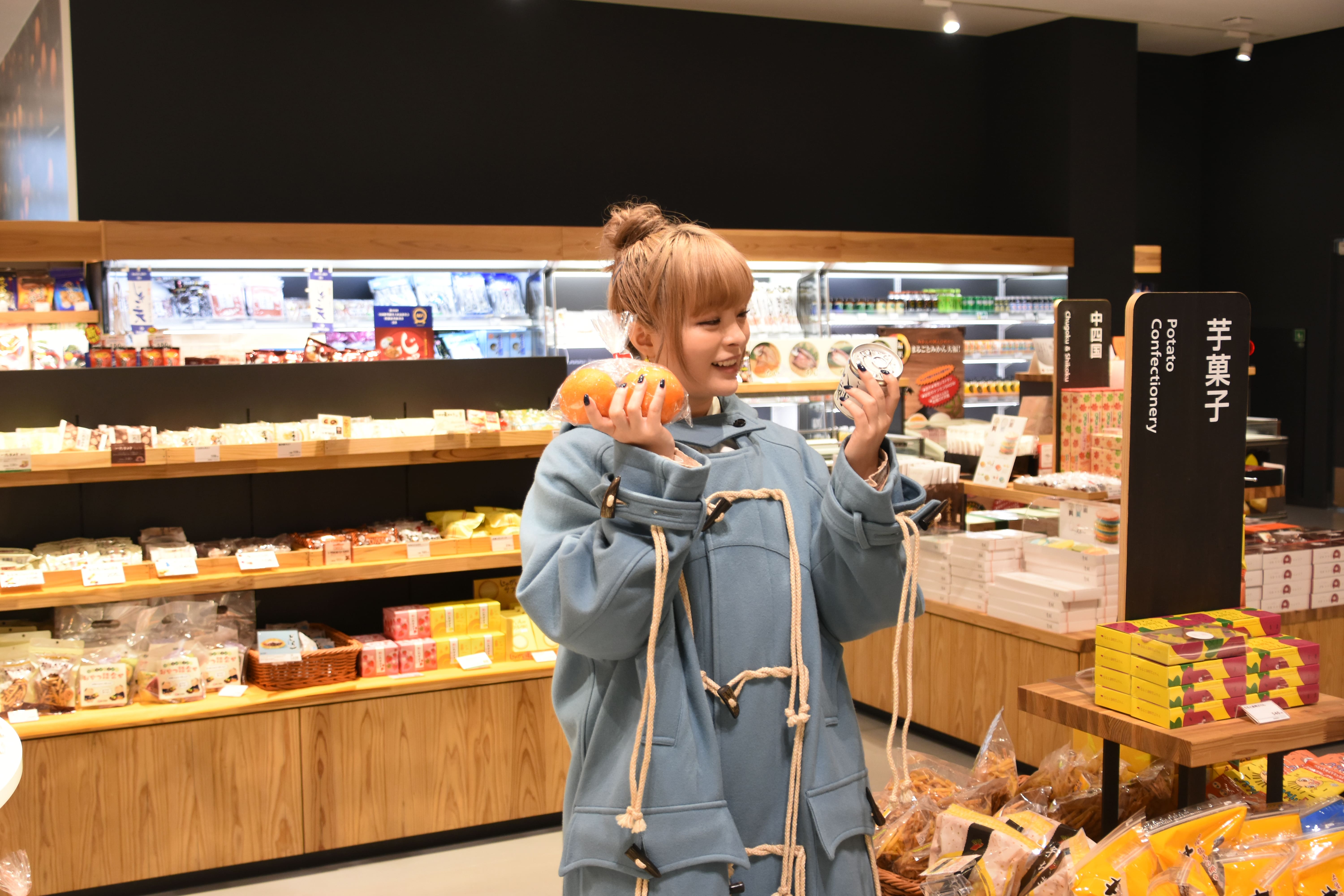
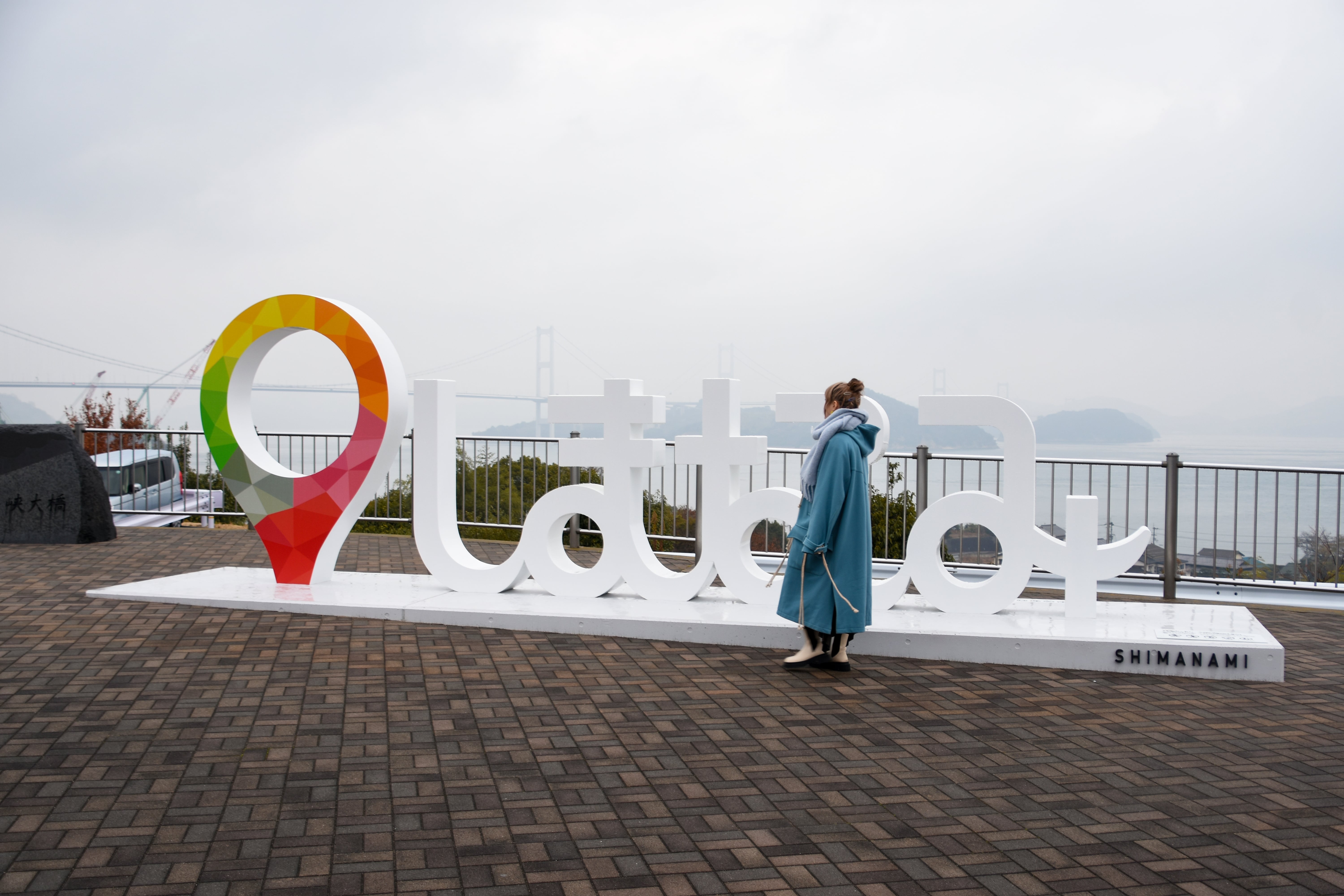
If you’re one for great views, then the Kurushima Kaikyo service area is a must-visit, offering a panoramic look at the Kurushima Strait of the Seto Inland Sea. The service area is very well know particularly for the Jaguchi Mikan Juice, something of a city legend in Ehime where you can enjoy fresh mikan juice straight from a tap. You can also tuck a rice bowl dish made with tachiuo hairtail caught in the Seto Inland Sea that’s made to look like Kurushima Kaikyō Bridge, or try Imabari’s soul food dish: the Imabari Yakibuta Tamago Meshi, a pork, egg, and rice bowl. Don’t pass up the chance to snap a photo at the designated photo spot with the Seto Inland Sea in the back either like Kyary above.
Information
Kurushima Kaikyo Service Area
Address: 3-9-68 Ohamacho, Imabari, Ehime, 794-0002, Japan
Food Court: [Weekdays] 8:00-21:00 / [Weekends & Holidays] 7:00-22:00
Shops: [Weekdays] 8:00-21:00 / [Weekends & Holidays] 7:00-22:00
Outside Shopping Area & Cafes: [Weekdays] 9:00-17:00 / [Weekends & Holidays] 9:00-18:00
Official Website: https://www.jb-highway.co.jp/sapa/kurushima.php
Murakami Suigun Museum
Dedicated to the Imabari heroes who protected the ocean
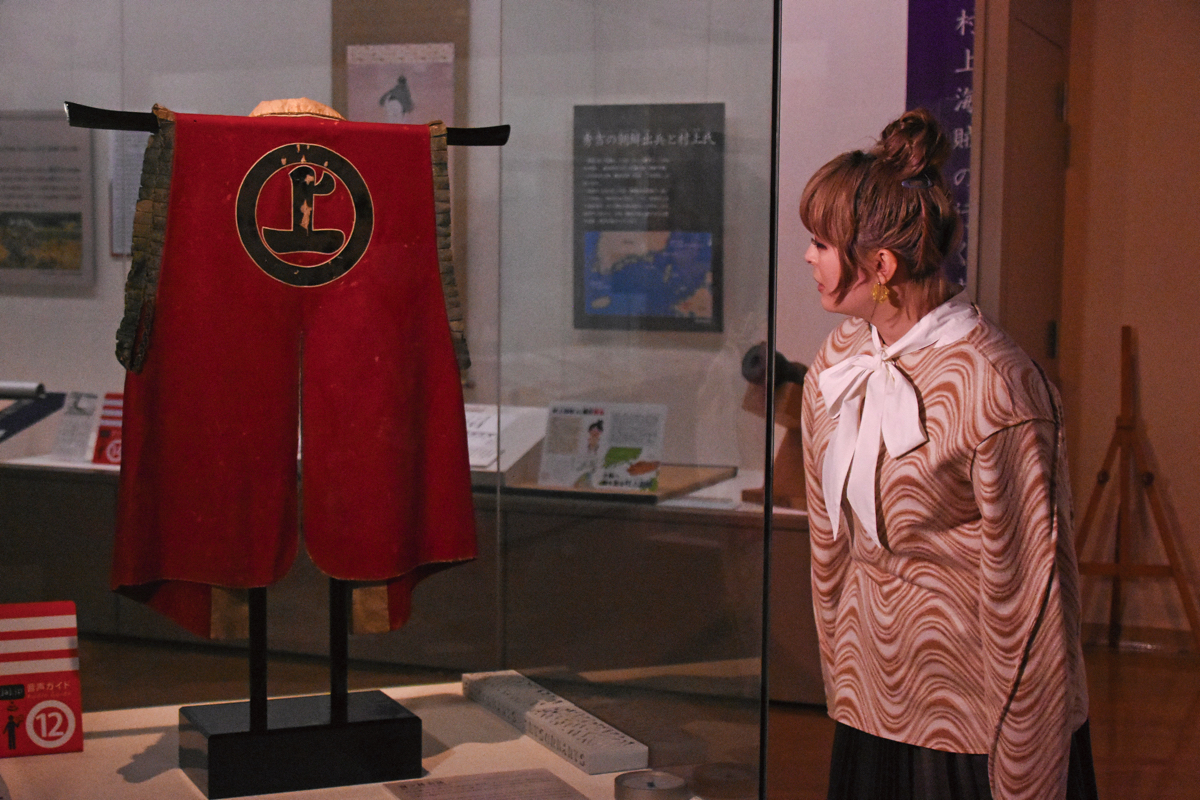
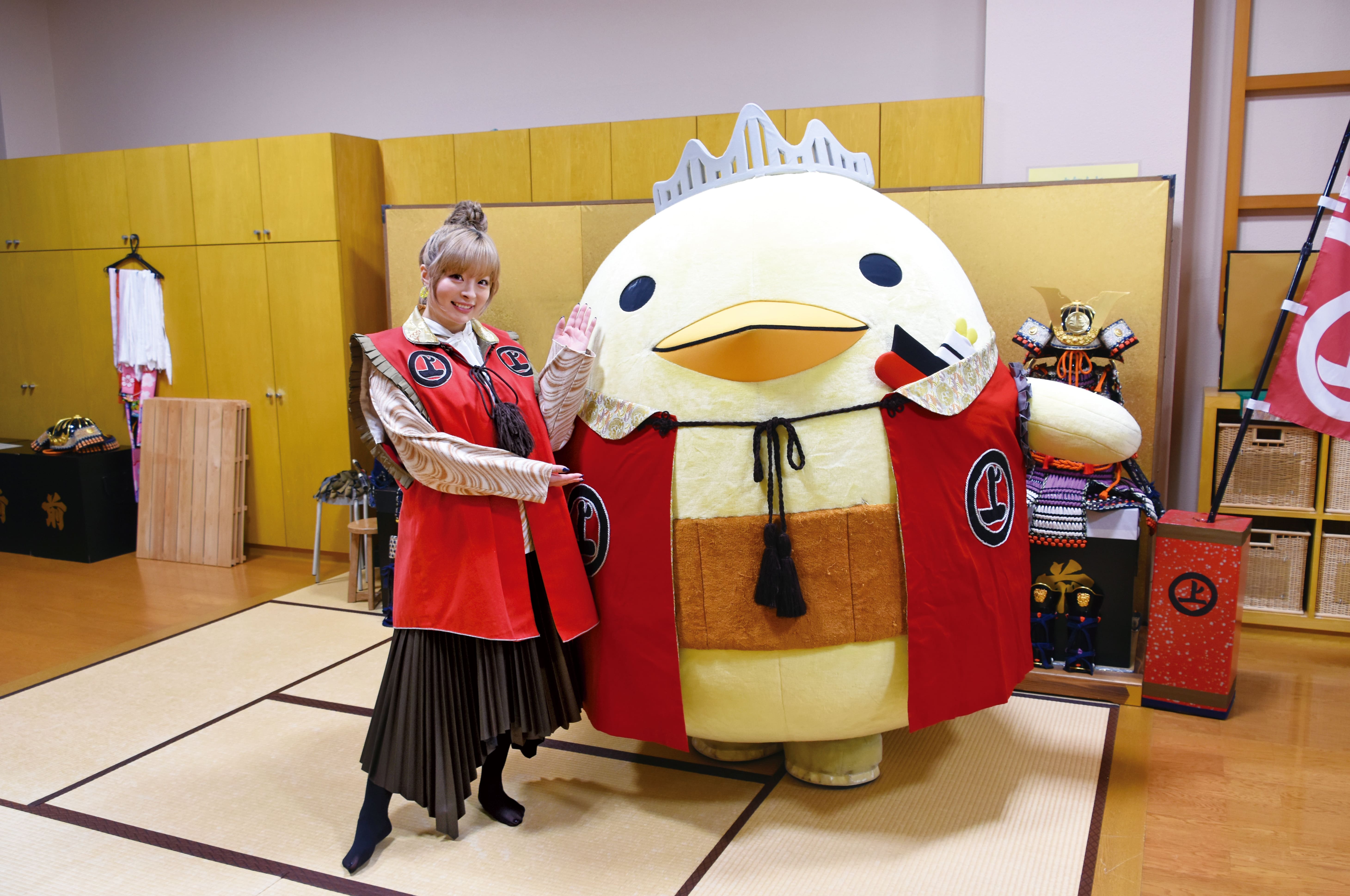
Murakami Suigun Museum is dedicated to kaizoku—pirates, or lords of the sea—something which conjures to mind villainy or bad guys, but the Murakami pirates were also considered heroes who helped maintain order and protect the sea during the Sengoku warring period of Japan. The museum features many displays of Murakami family treasures including the battle surcoat which the pirate leader wore over his armour, proudly bearing the Murakami family crest. Visitors can wear replicas of this coat, which Kyary tired herself: “Now I’m sorta like a military commander too,” she said.
Information
Murakami Suigun Museum
Address: 1285 Miyakubocho Miyakubo, Imabari, Ehime 794-2203, Japan
TEL: 0897-74-1065Opening Hours: 9:00-17:00
Closed: Mondays (or Tuesday if the Monday falls on a public holiday) / New Year Holidays (Dec 29-Jan 3)
Official Website: https://www.city.imabari.ehime.jp/museum/suigun/
Roadside Station Yoshiumi Iki-iki-kan
A bundle of fun and entertainment in one place
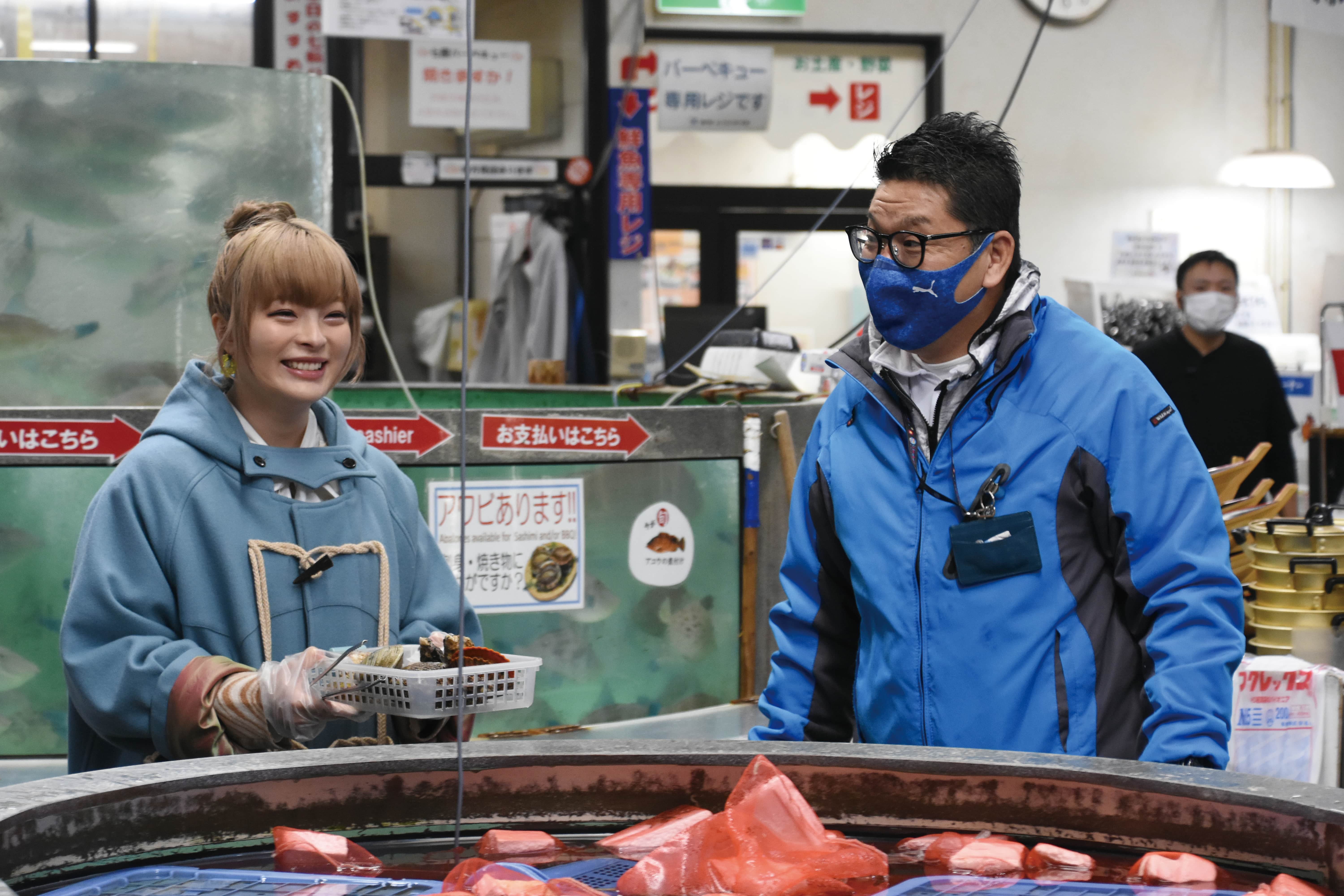
Roll on up to Roadside Station Yoshiumi Iki-iki-kan to enjoy a shichirin BBQ feast with fresh seafood caught in the Seto Inland Sea while gazing out across Kurushima Kaikyo. This building complex serves as a resting spot and is also the perfect place to purchase local souvenirs including Ehime specialty products. It’s also famous for its offering the chance to board a boat to ride around Kurushima Kaikyo, renting out bicycles, and more. You’ll also be able to meet Koro-chan, a popular fish who has lived there for 30 years.
Information
Roadside Station Yoshiumi Iki-iki-kan
Address: 4520-2 Yoshiumichomyo, Imabari, Ehime 794-2114, Japan
TEL: 0897-84-3710
Opening Hours: 9:00-17:00
Restaurant: 10:00-16:00 (Last Orders 15:00)
Closed: New Year’s Day (and certain days in winter)
Official Website: http://www.imabari-shimanami.jp/ikiiki/
Dolphin Farm Shimanami
Meet the cute and friendly dolphins

Dolphin Farm Shimanami, which is connected to Hakata Beach, is the best and biggest place in Japan to interact with dolphins. Visitors can get close to them and the dolphins will show off their tricks and skills. There’s even a car camping area you can stay at.
Information
Dolphin Farm Shimanami
Address: 1673 Hakatacho Kanoura, Imabari, Ehime 794-2302, Japan
TEL: 0897-72-8787
Opening Hours: 9:00-17:00
Closed: On days with bad weath
Official Website: https://www.df-shimanami.com/
Hakata Beach
A white sandy beach rolling out 200-meters
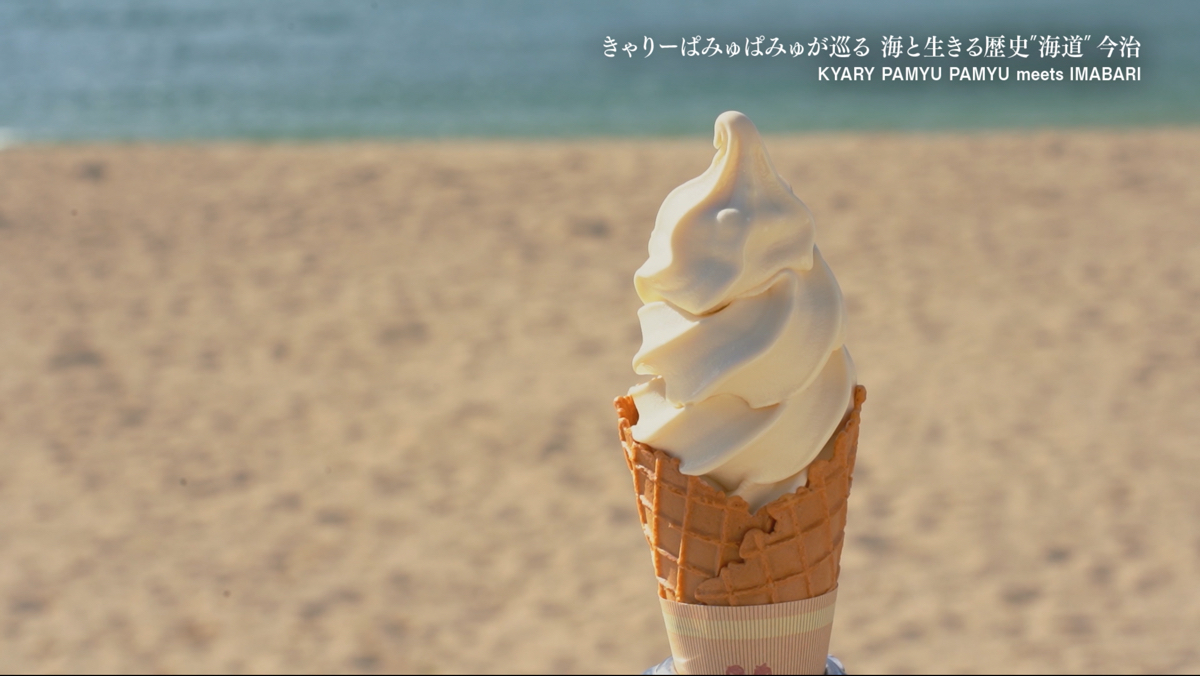
Hakata Beach is located at the base of Oshima Bridge in Hakata. The beach is famous for its salt which is best tried on their popular sweet-tasting sea salt ice cream.
Information
Hakata Beach
Address: 1668-1 Hakatacho Kanoura, Imabari, Ehime 794-2302, Japan
Sea Bathing: Early July – Late August
Official Website: https://www.city.imabari.ehime.jp/kanko/spot/?a=198
Imabari Towels
High quality towels woven with tradition and technique
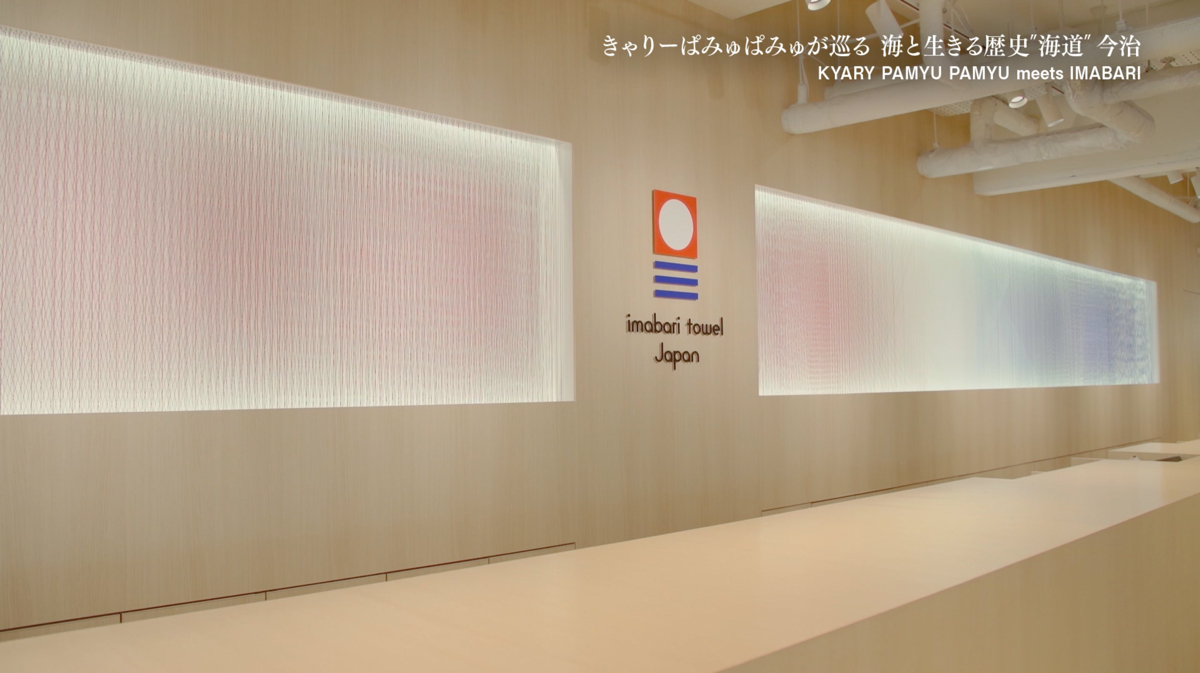
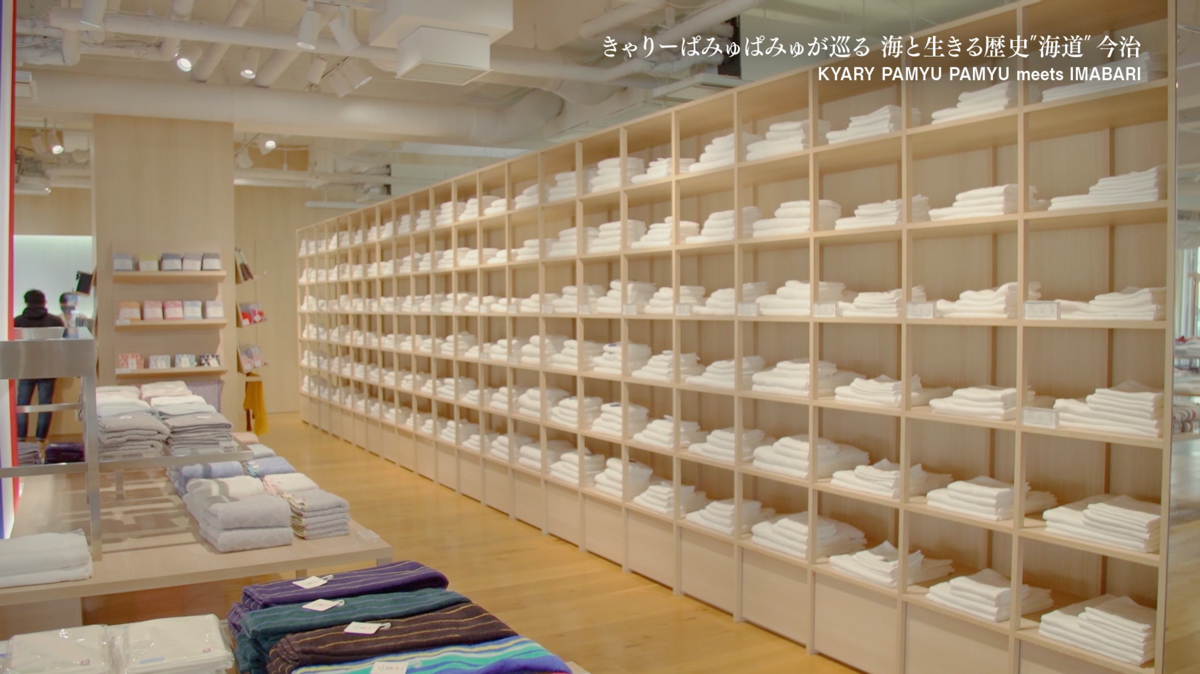
Imabari is the biggest producer of towels in Japan. Even their white towels alone have countless types you can choose from, allowing you to pick which level of softness and comfort you want. The iconic brand logo is also impactful, capturing the quality, production, and enthusiasm that the makes have for the product. Kyary herself uses them all the time!
Information
Imabari Towel
Official Website: https://www.imabaritowel.jp/
Sunrise Itoyama
Need a bike?
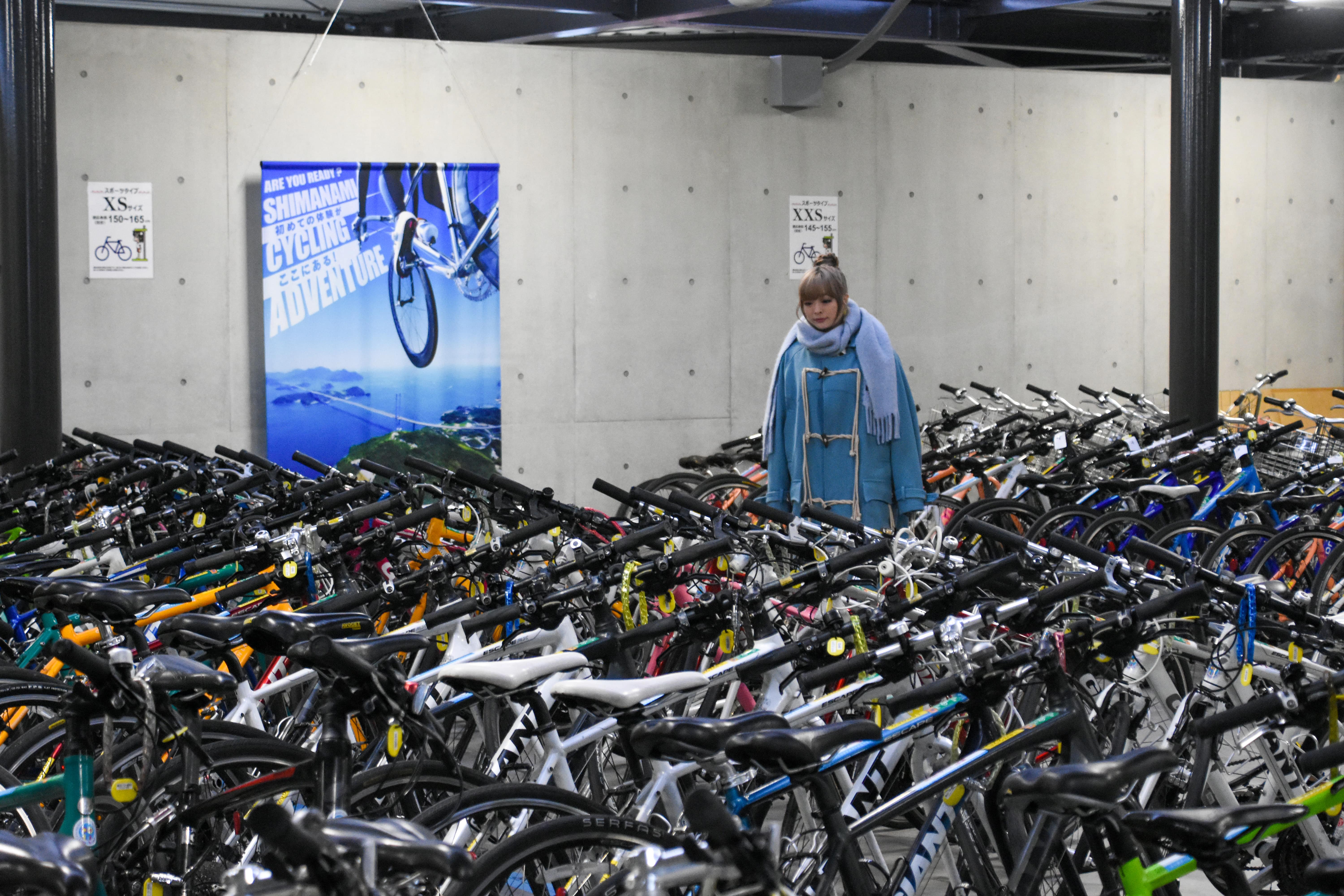
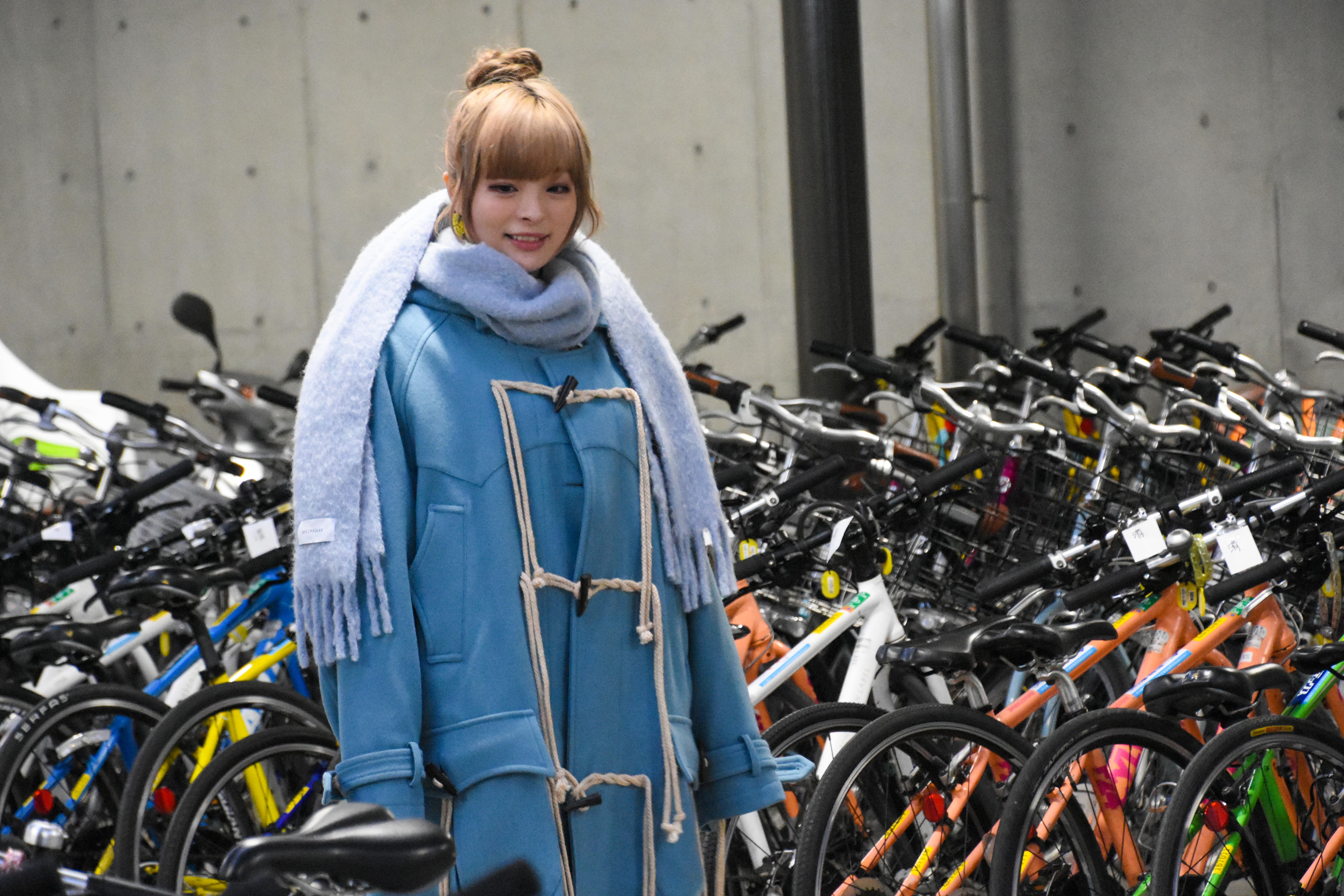
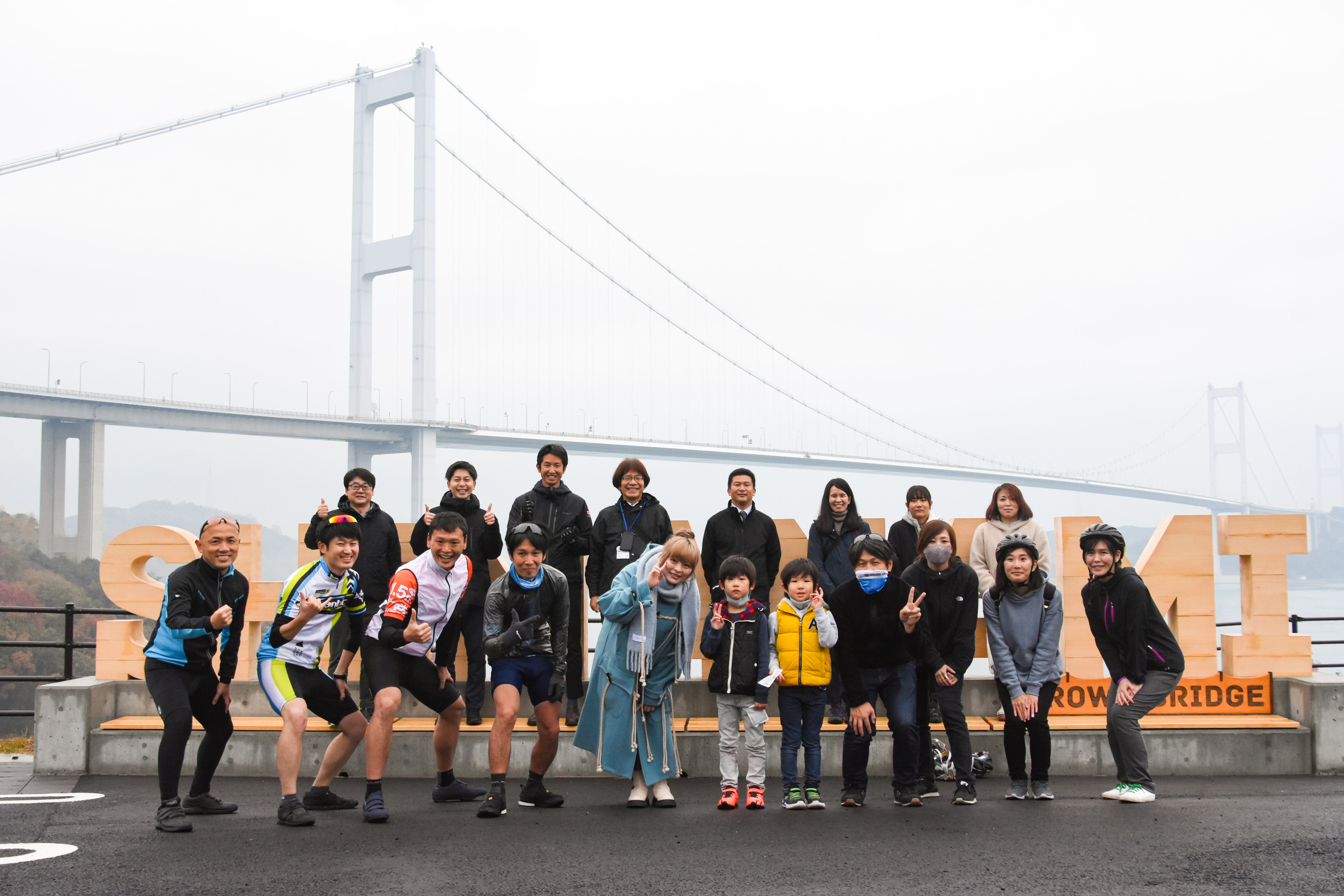
Sunrise Itoyama, located in the Imabari Central Cycling Terminal, is a rental bicycle service that has bikes and helmets for everyone’s needs. Rent out a bike and ride the Shimanami Sea Route which connects Ehime and Hiroshima with a series of bridges that hop across the islands of the Seto Inland Sea.
Information
Sunrise Itoyama
Address: 2-8-1 Sunabacho, Imabari, Ehime 794-0001, Japan
TEL: 0898-41-3196
Rent-a-Cycle Details: https://www.sunrise-itoyama.jp/archives/rentacycle/
Official Website: https://www.sunrise-itoyama.jp/
Marutomi
The famous restaurant known to every local
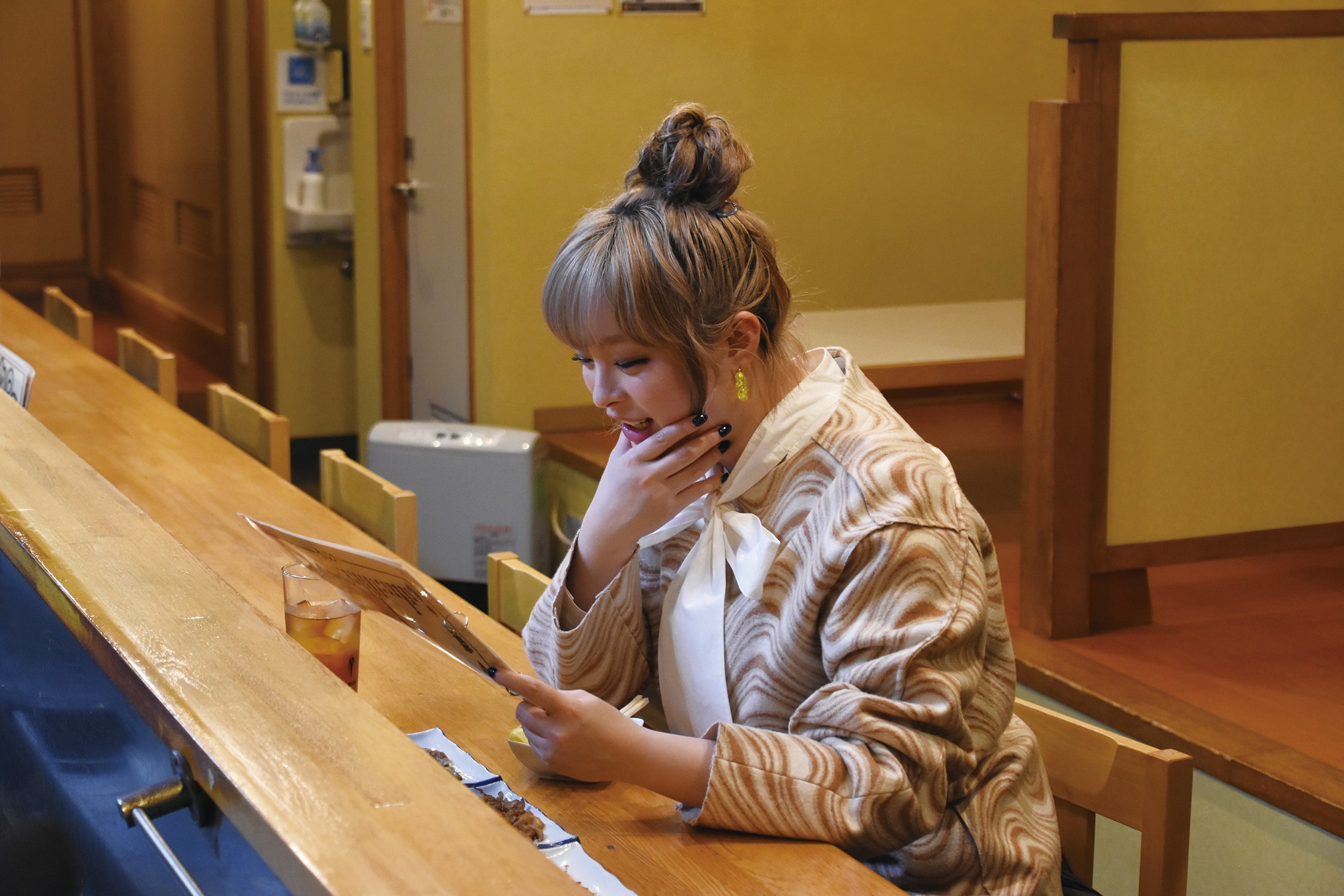
If you want the real experience of Imabari’s yakitori soul food, you should visit Marutomi, a yakitori eatery. Imabari yakitori is different from the usual Japanese yakitori as it doesn’t come skewered. Instead, the chicken is cut into small pieces and fried that way. One of the most popular ways to have it is with the skin on so the outside is crunchy and the inside succulent. It goes perfect with a cup of sake too.
Information
Marutomi
2-3-6 Katayama, Imabari, Ehime 794-0063, Japan
TEL: 0898-23-2740
Opening Hours: 17:30-22:00
Closed: Wednesdays
Official Website: https://maru-marutomi.jp/
Imabari Castle
A castle by the sea
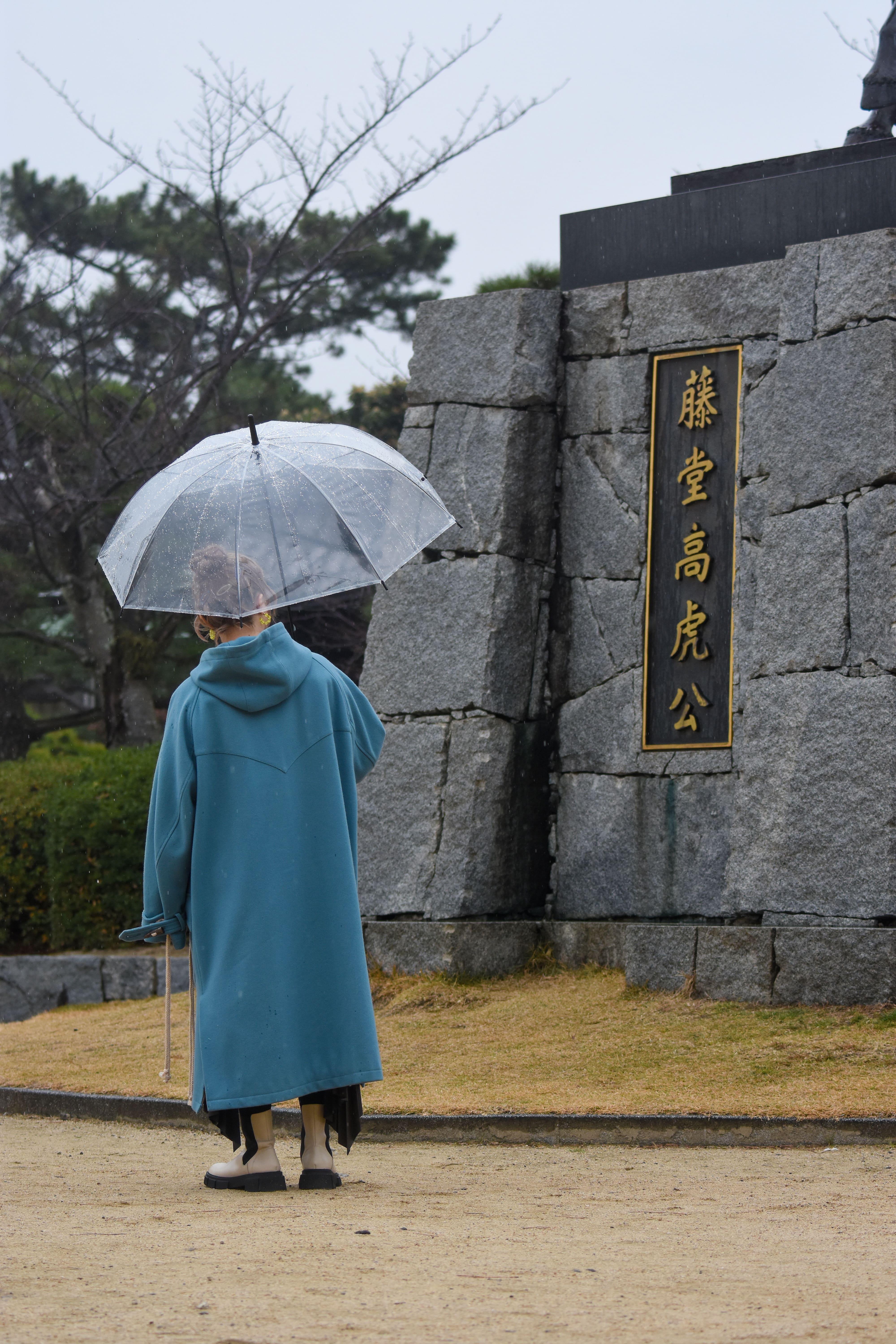
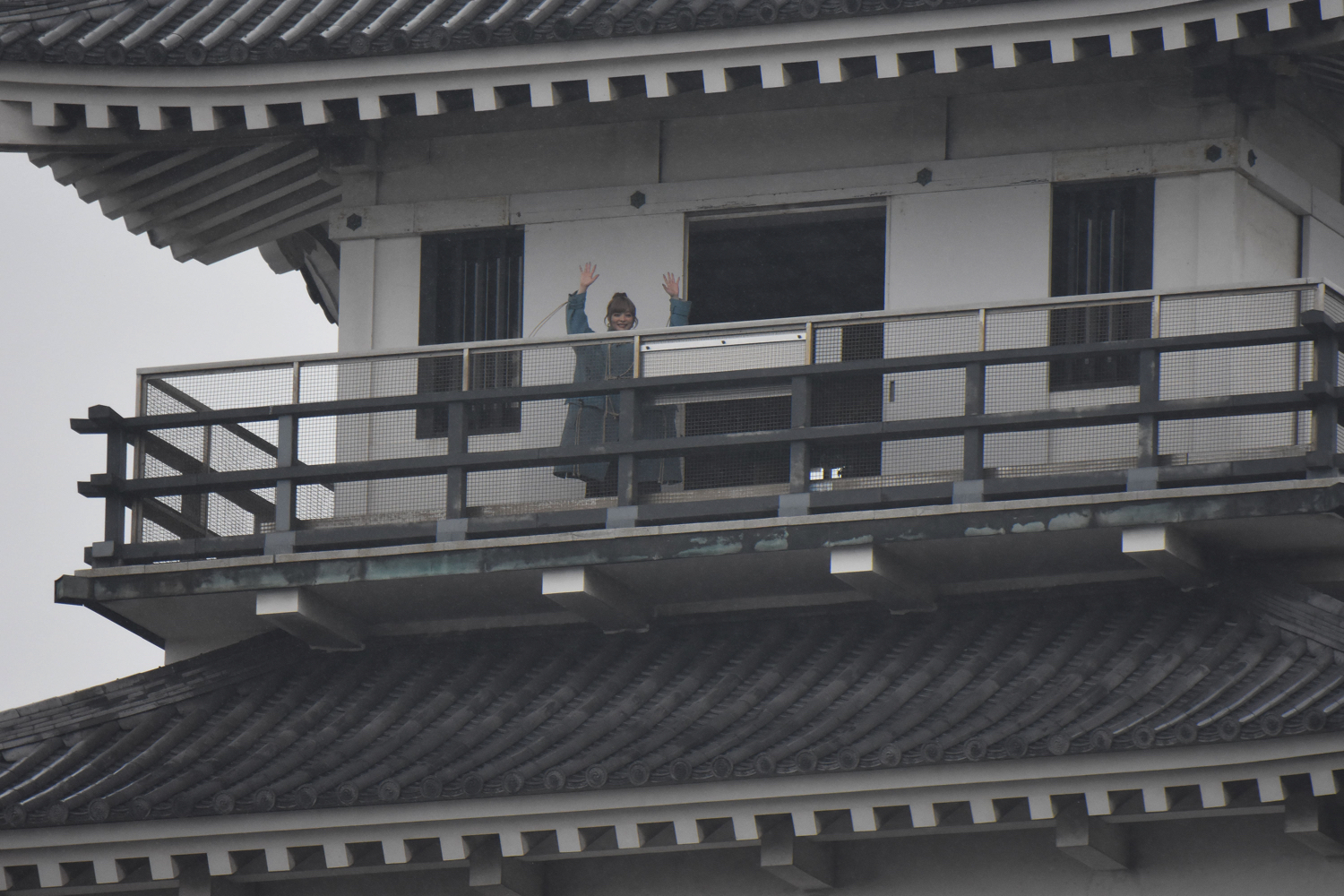
Imabari Castle, built by the daimyo Tōdō Takatora, is known famously as one of Japan’s three “Castles on the Sea” and was also listed in Japan’s Top 100 Castles. When it was first constructed, boats could enter the moat from the ocean. It’s a site that breathes the prosperity that Imabari has enjoyed as a significant location for maritime traffic, the same Imabari that the Murakami pirates sought to protect. Head on up to the top of the castle to stand on the observation deck and gaze at an unbroken view of the city.
Information
Imabari Castle
Address: 3-1-3 Toricho, Imabari, Ehime, 794-0036, Japan
TEL: 0898-31-9233
Opening Hours: 9:00-17:00
Closed: December 29 – December 31
Official Website: https://www.city.imabari.ehime.jp/museum/imabarijo/
Kirosan Observatory Park
A breathtaking spectacle to remember
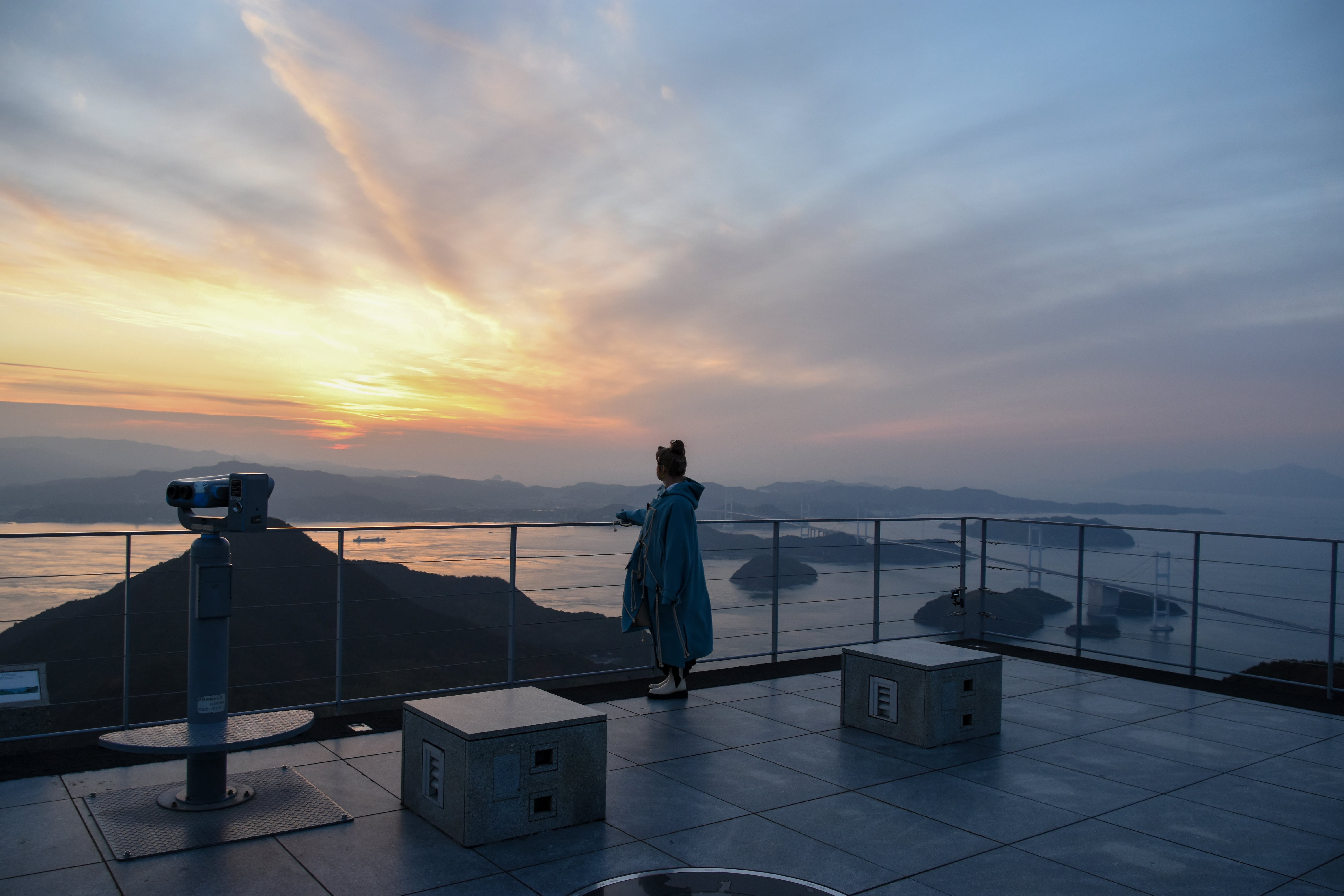
Kirosan Observatory Park is officially recognised by Setonaikai National Park. Standing atop the observation deck fills the eyes with wonder as they gaze upon a panoramic stretch of Imabari, the Seto Inland Sea, and Kurushima Kaikyo all at once. Kyary wrapped up her time in Imabari here as the sunset coloured the sky and sea in warm evening hues.
Information
Kirosan Observatory Park
Address: 487-4 Yoshiumicho Minamiura, Imabari, Ehime 794-2115, Japan
No Fixed Holidays
Open 24-hours a day
Official Website: https://www.city.imabari.ehime.jp/kanko/spot/?a=182
Imabari Tourism Information: https://www.city.imabari.ehime.jp/kanko/
We hope you enjoyed joining Kyary on her adventures across Imabari, and perhaps she even got you a little curious in wanting to visit the city yourself. It’s a treasure trove filled with vistas by the sea, in nature, and in the city itself with its Important Cultural Properties. Food is also a big part of travel for many people, so you can rest assured that your belly will be satisfied in Imabari as you try their speciality mikan, fresh seafood fished in the Seto Inland Sea, and more.
Information
Kyary Pamyu Pamyu
Official Instagram: https://www.instagram.com/kyarypappa (@kyarypappa)
Official Twitter: https://twitter.com/pamyurin (@pamyurin)
Official Website: http://kyary.asobisystem.com/
-
All About Matsuyama | Final Episode: Introducing the New Matsuyama Tourist Information Centre
The reception staff are ready and waiting to greet customers with a smile
The all new Matsuyama Tourist Information Centre finally opened in the heart of Matsuyama—the capital city of Ehime Prefecture in Japan—in Okaido on May 27. You’ll find it on the first floor of Matsuyama Mitsukoshi which isn’t even a one-minute walk from Okaido Station. It features an interior fusion combining history and culture with a design inspired by Matsuyama Castle while also throwing in a contemporary feel.
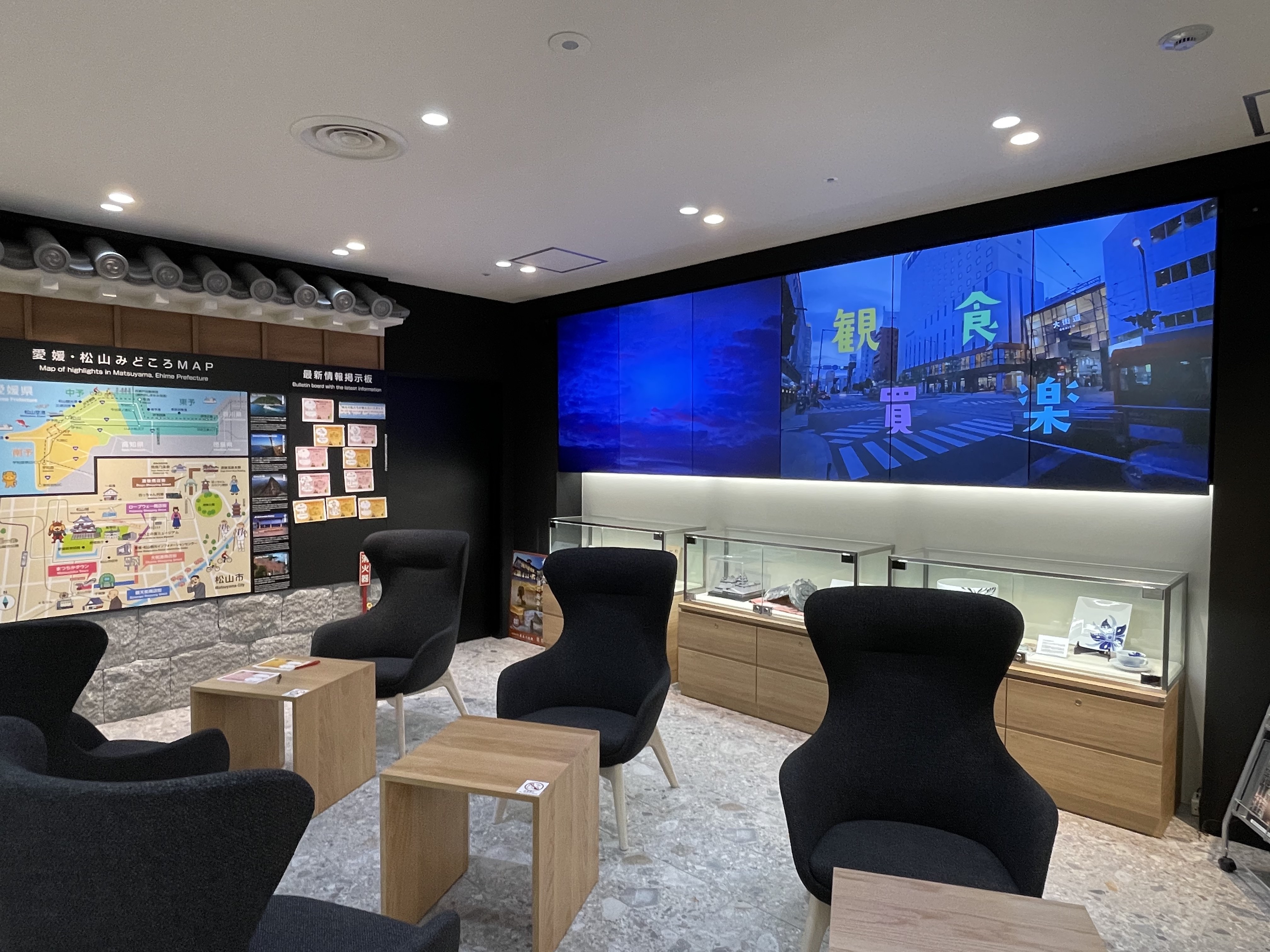
Six giant screens serve as the perfect place for tourism-related PR of Matsuyama
The first sight many visitors will lay their eyes on upon entering the information centres are the six screens spanning 1.5 meters high and 4.5 meters across the wall. Here, a variety of promotional material centred on the highlights of Matsuyama will be displayed.
The information centre offers many useful services, including for foreign customers who don’t speak Japanese. There is a translation and interpreting service, money exchange, rental electrical outlets for smart devices, and more. The staff themselves are multilingual, but the interpreting service includes access to a call centre which you can access using the free WiFi or using an iPad. The availability of foreign currency exchange is also extremely beneficial as Matsuyama is a city abundant with long-standing shops that have been around for decades and longer. Another convenience with the centre is easy access to public transport. If you’re looking to travel around the prefecture, we recommend paying a visit to the centre first as it’s sure to provide valuable information. You can even rent mobile batteries for your smartphone to lessen the stress when sightseeing.
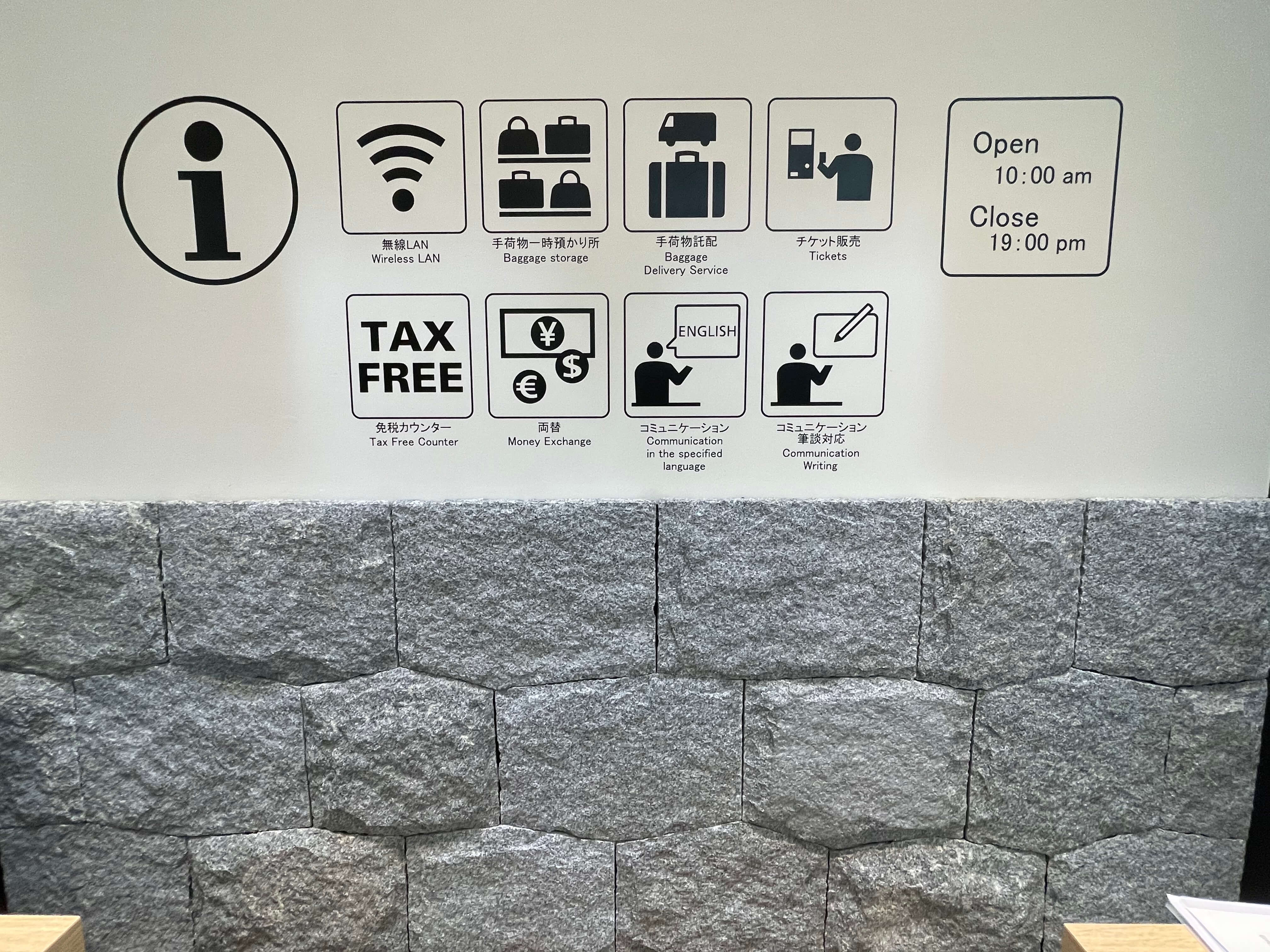
The pictogram shows the many handy services available
Visitors will also find a comprehensive duty-free counter inside the information centre which covers all stores in Okaido, Gintengai, Matsuchika Town, Dogo Shoten, and Ropeway Shotengai. You must spend over ¥5,000 (before tax) on products to be duty-free eligible. Since it’s a comprehensive service, if you have multiple receipts you can be exempt from tax as long as all your receipts exceed ¥5,000. Participating stores have special stickers plastered up inside so tourists can quickly and easily identify them.
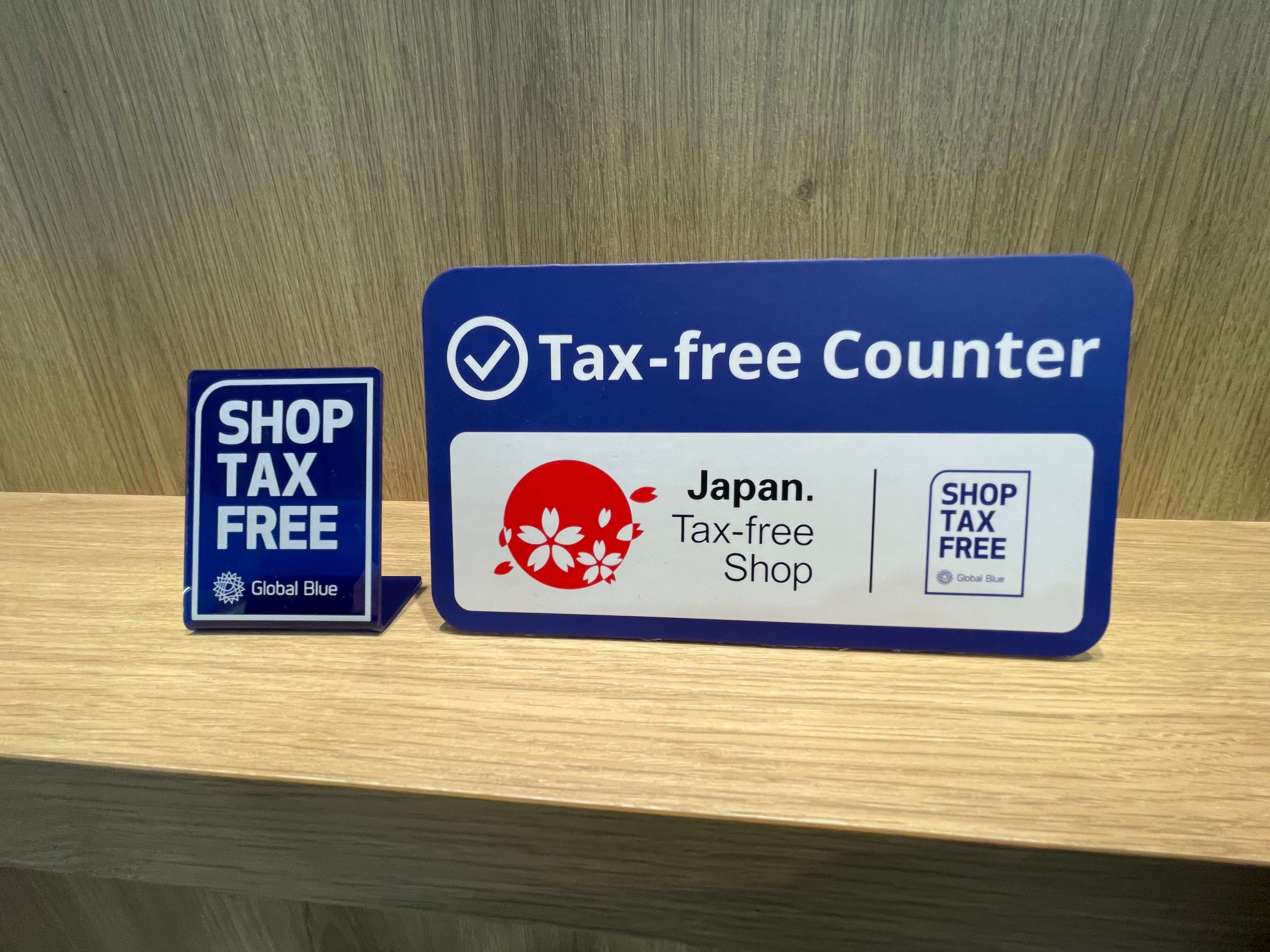
Stores participating in the duty-free service have stickers and signs to show it
For example, if you spend ¥500 at participating stores in Dogo Shotengai, ¥1,000 in Okaido Shopping Street, and ¥3,500 in Gintengai Shotengai, and take all three of those receipts adding up to ¥5,000 to the information centre, you can get your items duty free. But keep in mind that the receipts have a validity period on them, so be sure to check opening hours.
The Matsuyama Tourist Information Centre serves as the perfect site for bringing in all kinds of tourists, including foreign travellers, to Matsuyama post-COVID. The information also goes by the cute nickname “Dan Dan info.” Dan dan is an old Ehime phrase meaning “thank you” and ties in with the smiling and hospitable welcome staff wish to greet guests with. It’s exciting to look into the future and see how Matsuyama’s tourism and economic growth will develop in its shopping districts, stores, and elsewhere. Make one of your first stops the Matsuyama Tourist Information Centre when visiting the city.
Information
Matsuyama Tourist Information Centre
Opened: May 27, 2021
Address: Matsuyama Mitsukoshi Floor 1F Atrium Space Court, 3-1-1 Ichibancho, Matsuyama, Ehime
Homepage: https://matsuyama-tourism.com/
Facebook: dandaninfo
Instagram: dandaninfo_matsuyama
-
All About Matsuyama | Episode 8: Souvenirs Are Part of Matsuyama’s Fun and Are Everywhere
The all new Matsuyama Tourist Information Centre opened in the heart of Matsuyama—the capital city of Ehime Prefecture in Japan—in Okaido on May 27. In celebration of its opening, this new featured series by MOSHI MOSHI NIPPON will explore the wonders of Matsuyama, a city abundant with places to shop, leisurely hot spots, must-visit restaurants, and opportunities to dive deep into its history and culture. You’re sure to discover something new and exciting about Matsuyama in this series.
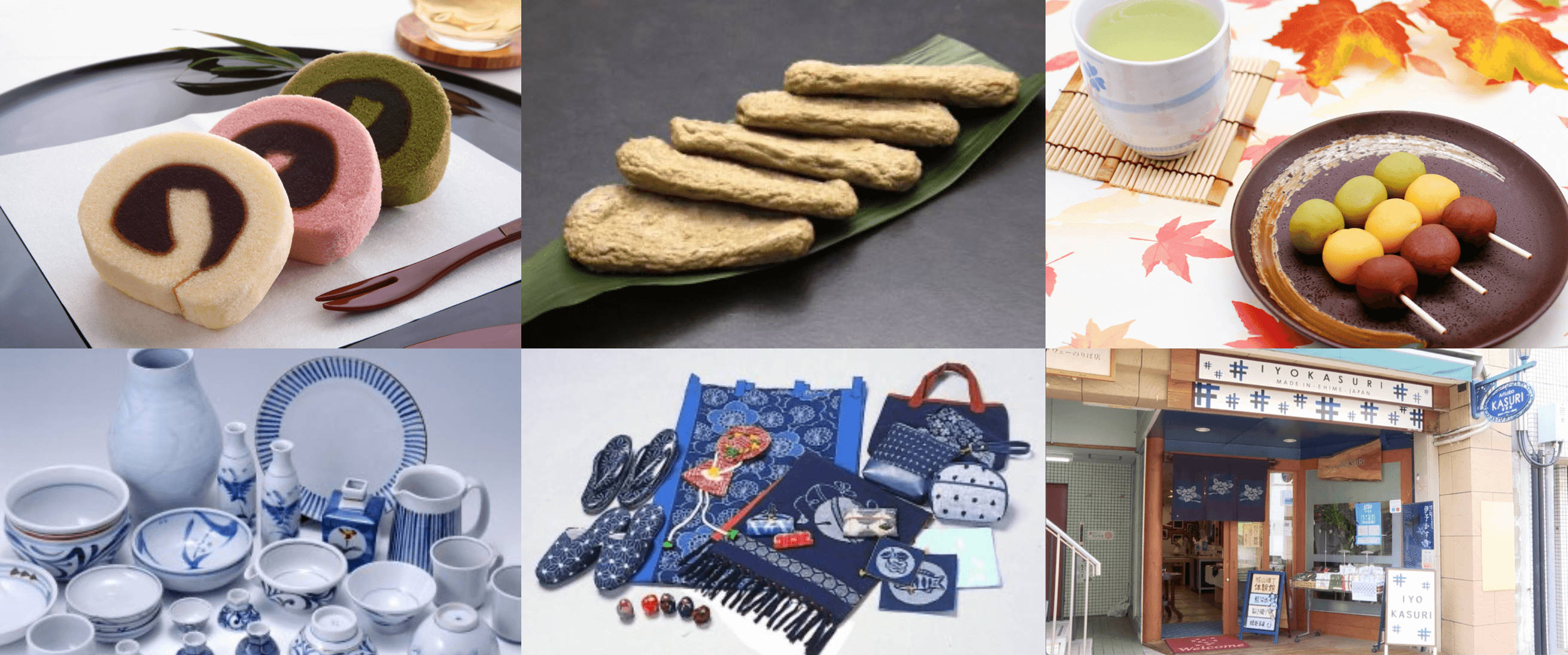
From tasty treats to home and lifestyle goods, Matsuyama has no shortage of souvenirs
Popular sightseeing spots and delicious food you can’t get anywhere else—these are all part of the fun experience to be had when travelling. To wrap up your time there and memorialise all that’s happened, nothing’s better than picking up a little souvenir. In Episode 8 of All About Matsuyama, we take a look at the many wonderful items you can take home with you as souvenirs from food to traditional handicrafts, special dyed fashion and accessories, and more. MOSHI MOSHI NIPPON has picked out a range of delightful treats like Matsuyama’s famous tartes, jakoten, three-colour botchan dango as well as Tobe ware porcelain which is an Ehime tradition, and iyo-kasuri fabric which is one of Japan’s three main kasuri fabrics.
First on the list is the ‘tarte,’ a speciality product of Shikoku which is more of a sponge cake. They’re made of a soft and fluffy sesame seed-coloured sponge and coarse red bean paste. A famous treat of Matsuyama, you can find these tarts just about anywhere in Okaido Shopping Street, near Dogo Onsen, and elsewhere.
Jakoten is considered a soul food of Ehime Prefecture. It’s made from fish that are blended into a paste and fried. You can find jakoten everywhere in Matsuyama, but every restaurant serves theirs with different textures and flavours. Many places fry them fresh, so be sure to try a bunch to compare the flavours and then you can decide which to buy as a souvenir. There are even places so popular that they have lines outside them before they even open.
The botchan dango is something many of our readers have probably seen or heard about. These three-coloured skewered dango are served bite-sized, cute enough to snap a photo of. The ones sold at Dogo Onsen are something of a speciality. They have their name from Natsume Soseki’s novel Botchan. You’ll find them all around Dogo Shotengai.
Tobe ware is a traditional type of porcelain from Tobe in Ehime, known for its smooth touch and durability. This traditional porcelain has been handed down from old times until today, and in recent years, ceramists have been hammering out their own unique shapes, so have become popular as stylish, everyday use lifestyle items.
You can’t talk about Ehime’s traditional craftwork without mentioning iyo-kasuri fabric. Matsuyama used to have huge production output of this fabric type, which stands as one of three of Japan’s most famous kasuri fabrics alongside kurume-gasuri from Fukuoka and bingo-kasuri from Hiroshima. Production has dwindled in modern times, but if you go to Art Labo KASURI Rekishikan, you can learn all about iyo-kasuri. There are lots of gorgeous iyo-kasuri products to buy like cute pouches, bags, and more.
And that’s our list of must-grab souvenirs. There are of course endless other things you can get your hands on, so if you’re lost on what to pick up, try asking at the Matsuyama Tourist Information Centre.
Stay tuned for the next and final episode of All About Matsuyama.
Information
Matsuyama Tourist Information Centre
Opened: May 27, 2021
Address: Matsuyama Mitsukoshi Floor 1F Atrium Space Court, 3-1-1 Ichibancho, Matsuyama, Ehime
Homepage: https://matsuyama-tourism.com/
Facebook: dandaninfo
Instagram: dandaninfo_matsuyama
-
All About Matsuyama | Episode 7: Mitsuhama Port is a Nostalgic Trip Down Memory Lane
The all new Matsuyama Tourist Information Centre is set to open in the heart of Matsuyama—the capital city of Ehime Prefecture in Japan—in Okaido on May 27. In celebration of its opening, this new featured series by MOSHI MOSHI NIPPON will explore the wonders of Matsuyama, a city abundant with places to shop, leisurely hot spots, must-visit restaurants, and opportunities to dive deep into its history and culture. You’re sure to discover something new and exciting about Matsuyama in this series.
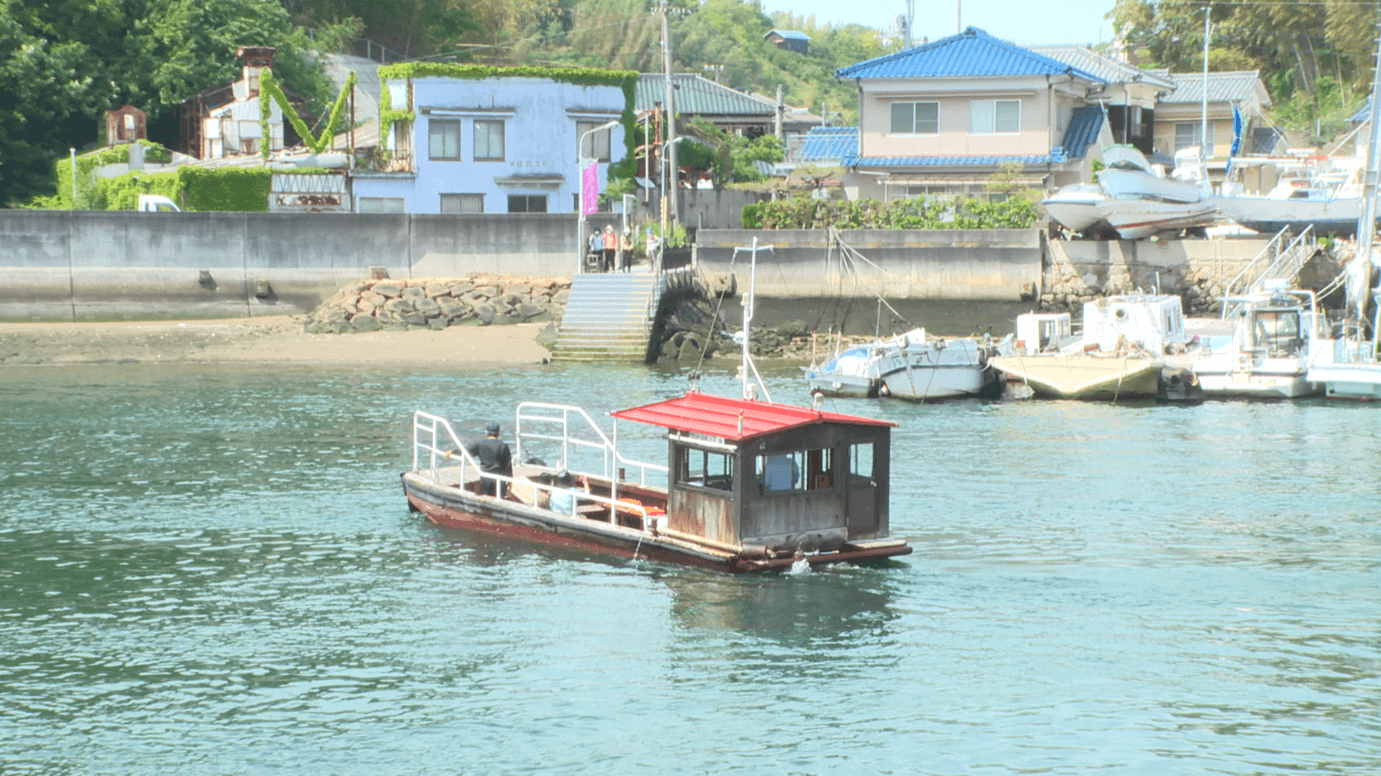
The Mitsu Ferry, managed by Matsuyama City, has been running for over 500 years
We’ve covered much about the land in this series, so in Episode 7 of All About Matsuyama, we’re heading to the sea. Mitsuhama Port sits in the western part of Matsuyama, Ehime. Mitsuhama is a port town that flourished during and following the Edo Period as the ‘front door to the ocean.’ Visiting the town is a trip down memory lane as there are still pseudo Western-style buildings from the Meiji and Taisho periods that suffered damage from the war, as well as traditional Japanese houses, and more. The Mitsuhama Shotengai shopping district was once a bustling place for the fishing and trade industries. Today, buildings have been renovated and taken on new managers who have turned places into stylish cafes, galleries, and other businesses, creating a quaint mix of new and old.
Matsuhama Port is a 15-minute car ride from Matsuyama Station, which itself is connected to other must-visit spots we’ve covered in this series such as Matsuchika Town and Gintengai. If you’re looking for a place to walk around, the port area is somewhere you can really stretch your legs. It’s right outside Mitsu Station from where you can see Mitsuhama Shotengai lined with concrete shops. The street has an old-timey Japanese nostalgic feeling to it. The number of young people frequenting the local shops and houses that have been renovated into various stores is on the rise which is changing its image from a former port town to a hip place to go for shopping. In the summer there are firework festivals and events held by the shopping district, so it’s quickly becoming one of Matsuyama’s new tourist spots.
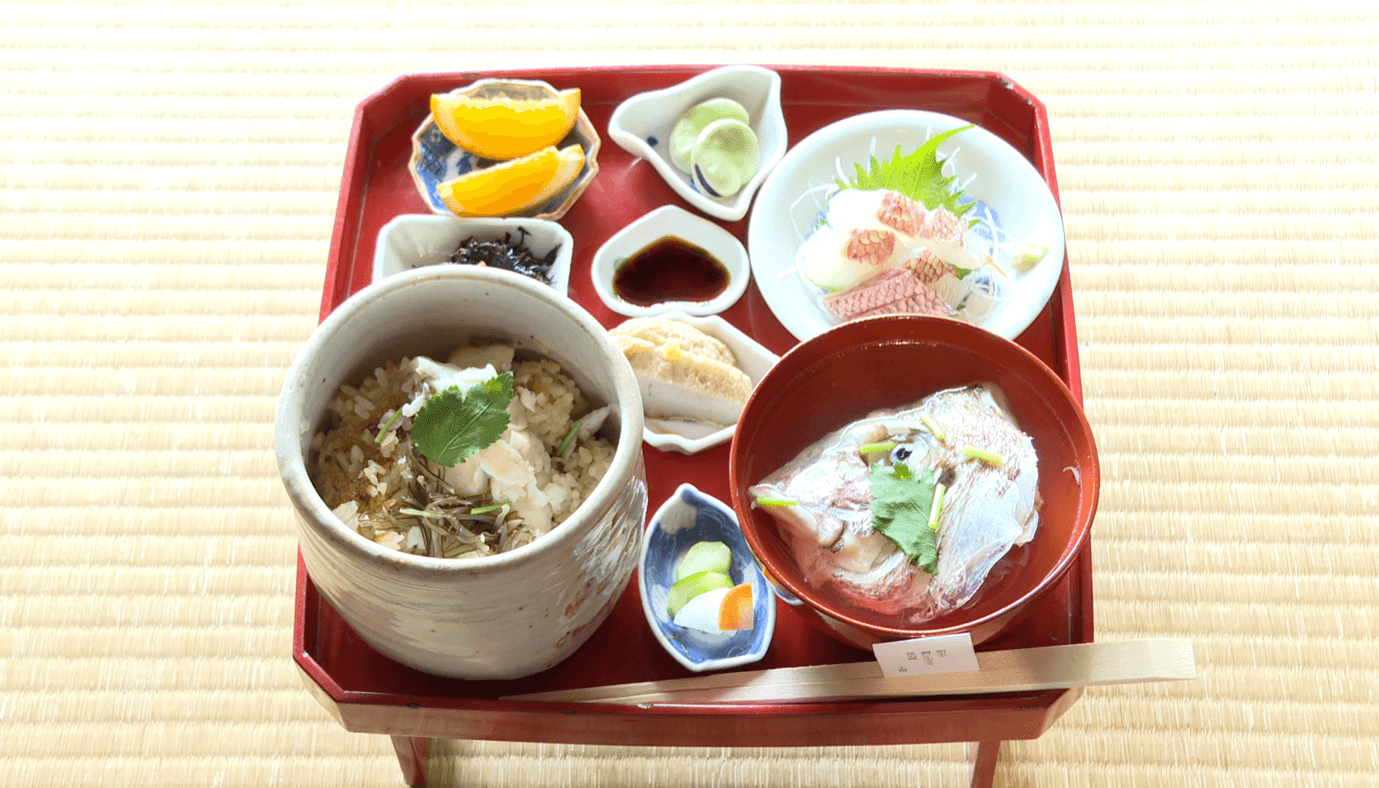
A luxurious sea bream meshi-zen set meal
If you’re strolling through Mitsuhama Shotengai, one place we absolutely want to recommend people visit is Taimeshi, a restaurant that set up shop inside a Japanese house that’s registered as a Tangible Cultural Property. They have only one order on the menu as pictured above: the Taimeshi-Zen, a sea bream set meal, which is made even more enjoyable by the restaurant’s elegant decor.
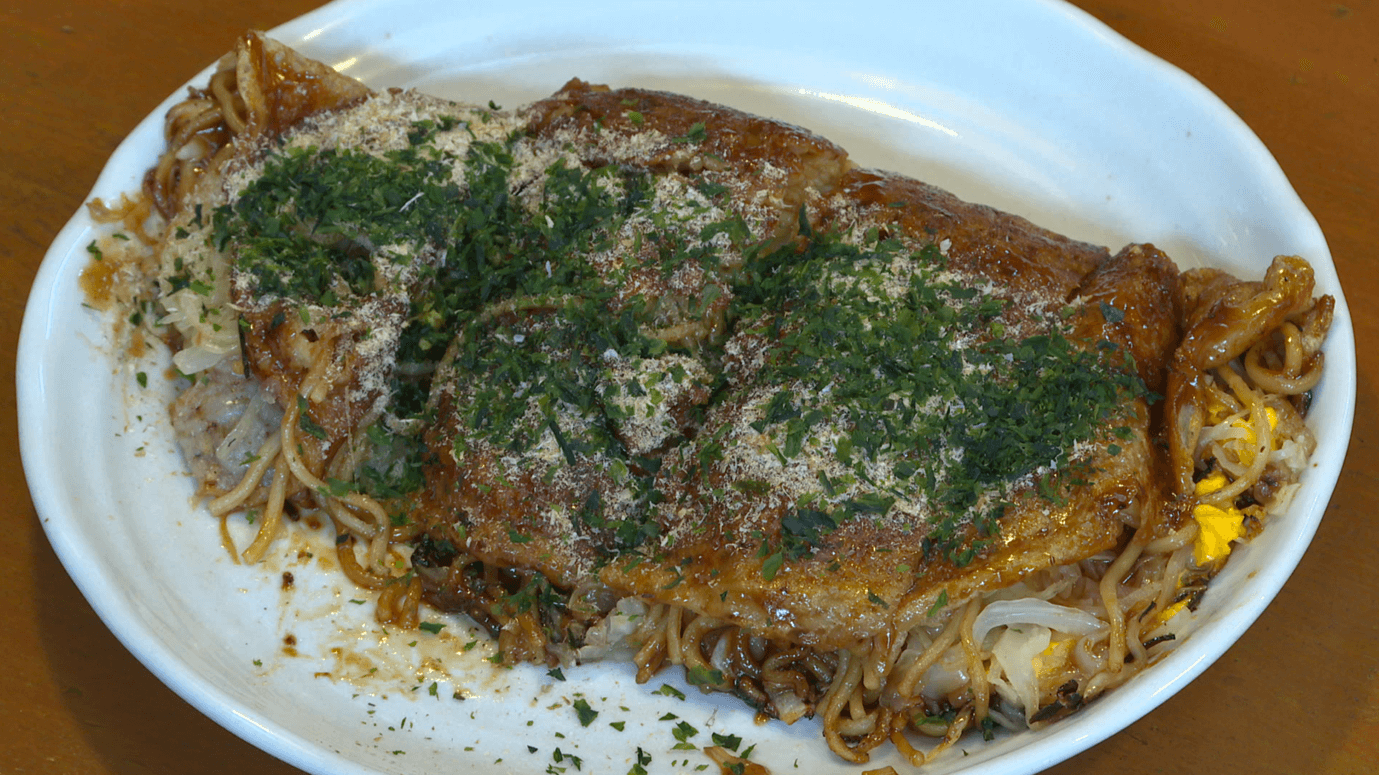
Mitsuyamayaki is a fast food delicacy of Mitsuhama
Everyone needs to try the local fried food as well. The most popular is their okonomiyaki, a common food in Japan. However, the type served in Mitsuhama, known as Mitsuhamayaki, is a little different from the Osaka or Hiroshima styles. They load the batter with noodles and garnish with chikuwa fish-paste, an ingredient long-loved in Mitsuhama, and the secret ingredient—fish flakes. Beef is used as the meat filling. The result is the kind of flavours you’d imagine tucking into in a port down. Each restaurant that serves Mitsuhamayaki serves theirs with their own original sauces too, so no two places will be exactly the same. Try several to compare the tastes.
Something else that can’t be passed up when visiting Mitsuhama is the Mitsu Ferry, a boat with a 500-year history that rides up and down the river and is free of charge. Not only has it been used since the Muromachi Period for transporting goods, it also enjoys 40,000 passengers every year having been recognised as a tourist spot in recent years.
Baishinji Station, which is right next to Minatoyama Station and is how you get to the Mitsu Ferry, is known for being the location of the final episode of the 1991 Japanese drama series Tokyo Love Story. There, visitors can also gaze at the gorgeous view of the Seto Inland Sea, pay a visit to Baishinji Garden to enjoy the plum and cherry blossoms, and more.
Matsuyama is vast and full of many places to enjoy. Mitsuhama is one of these locations and is easily accessed by train from the city centre. It’s a tranquil place where you can feel both the preserved old atmosphere and the modern changes. It’s sure to continue growing as one of the city’s must-visit sightseeing spots.
Information
Taimeshi
Homepage: http://taimesi.net
Address: 1-3-21 Mitsu, Matsuyama, Ehime
味処いとさん
住所 愛媛県松山市住吉2-8-33
-
All About Matsuyama | Episode 6: Feast Your Eyes Upon the City’s Food
The all new Matsuyama Tourist Information Centre is set to open in the heart of Matsuyama—the capital city of Ehime Prefecture in Japan—in Okaido on May 27. In celebration of its opening, this new featured series by MOSHI MOSHI NIPPON will explore the wonders of Matsuyama, a city abundant with places to shop, leisurely hot spots, must-visit restaurants, and opportunities to dive deep into its history and culture. You’re sure to discover something new and exciting about Matsuyama in this series.
One of the biggest attractions to anyone travelling abroad, or even domestically, is the food. In Episode 6 of All About Matsuyama, we give you a mouth-watering tour of Matsuyama’s food scene. Every area of the city is bursting with flavours to be savoured, so here’s our list of places we can’t recommend enough, all located around Okaido Shopping Street, Matsuyama Gintengai, and Matsuchika Town.
Higiriyaki

Higiriyaki is a sweet local treat from Matsuyama with chewy skin and filled with hot adzuki bean paste
The first delectable treat MOSHI MOSHI NIPPON recommends begins at a shop in Okaido Shopping Street. The ‘higariyaki’ is a local food that was first created during the Taisho period in Japan and is also the name of the shop that sells them. It’s said that the first higariyaki was made at Zenshoji Temple which is located in front of Matsuyama Station. The temple is nicknamed “Ohigiri-san,” and the dessert’s name derives from the Higiri Jizo god that is worshiped there. Its dough is made with high quality wheat flour and eggs and is stuffed with an azuki bean paste recipe that has been preserved and passed down since it was first created. You get to see the higiriyaki being made fresh before you when ordering one.
Noma Kajuen noma-noma

Every cup of their refreshing juice is freshly squeezed
Noma Kajuen noma-noma is a juice and gift shop managed by Noma Kajuen, a fruit grower in Ehime which ships tasty mikan oranges around Japan. noma-noma not only serves fresh juice but ice creams, parfaits, drinkable jelly, and other takeout items too – all made with mikan. They have plenty of fruity gifts too, so don’t pass up the opportunity to try some sweet Ehime mikan.
Roken Manto

The only place left making steamed bread with koubokin yeast fungus
Next on the menu is Roken Manto which is famous in Matsuyama for its steamed bread. This bread is made with koubokin yeast fungus and has been since 1931. No preservatives or other additives are used so they don’t have a shelf life – you can only buy and eat them from here. The bread was adapted in Kurashiki from the Chinese steamed bun to cater to Japanese palettes. Fillings include pinto beans, raisins, cheese, cocoa, and more. None are overly sweet so make for a nice easy bite. They are particularly popular with male customers who you often see in droves buying them in the evenings and late into the night.
Nabeyaki Udon Asahi

A bowl of their sweet udon will leave you feeling happy
We’re moving locations now – towards Matsuyama Gintengai. Nabeyaki Udon Asahi is a famous udon bar in Matsuyama known for its sweet tasting nabeyuki udon, something of a soul food to the locals. The restaurant opened in 1947 and has been frequented by locals since. Their udon is simple but delicious, made with a sweet broth, chewy noodles, kamaboko fish paste, chikjuwa fish paste, and boiled egg. The restaurant itself has a retro vibe to it which serves as the perfect setting for your bowl of udon. It will definitely have you wanting a second visit. One thing to note is that the restaurant closes once all noodles have been served, so we recommend visiting in the early afternoon.
Usuzumi Yokan

The quality of the adzuki beans elevate this dessert to sublime new heights
The usuzumi yokan is a famous sweet of Matsuyama which was first made over 1,000 years ago when Empress Jito visited Dogo. Its surface has a sheen to it, and inside are white beans made to look like cherry blossom petals, giving it an extravagant appearance. It’s a sweet famous across Japan having won awards at national confection competitions. You can order them to have-in at this cafe if you like – and their gorgeous Tobe ware plates are available to buy too. Both would be great as souvenirs bought together.
Tonkatsu Katsuyoshi

The crunchy, mouth-watering tonkatsu is nice and light and not fatty at all
Last up on our list takes out to Tonkatsu Katsuyoshi in Matsuchika Town. They serve up some seriously succulent and juicy meat covered in a crunchy layer and served with an in-house sauce. Their menu is long, and all set meals come with a bowl of grated Japanese yam soup. Matsuchika Town is full of popular eateries with lots of takeout items to enjoy, so we recommend visiting there before moving away from the station area.
Matsuyama is loaded with restaurants so you’ll never go hungry. The places on this list, and many others, are waiting for your arrival.
Information
Higiriyaki
Homepage: https://higiriyaki.jp
Address: 2-5-1 Okaido, Matsuyama, Ehime
Noma Kajuen noma-noma
Homepage: https://www.kajuen.co.jp/shop/nomanoma/
Address: 1-4-20 Okaido, Matsuyama, Ehime
Roken Manto
Homepage: http://home.e-catv.ne.jp/takeuchi/
Address: 2-3-15 Okaido, Matsuyama, Ehime
Nabeyaki Udon Asahi
Address: 3-10-11 Minatomachi, Matsuyama, Ehime
Usuzumi Yokan
Homepage: http://www.usuzumi.co.jp
Address: 1-2-2 Okaido, Matsuyama, Ehime
Tonkatsu Katsuyoshi
Homepage: http://matsuchika-town.com/shop/?mode=shop_detail&shop_id=5
Address: Matsuchika Town, 5-1-1 Minatomachi, Matsuyama, Ehime
-
All About Matsuyama | Episode 5: A Shopping Paradise at Every Turn
Five unique shopping districts loved by Matsuyama locals
The all new Matsuyama Tourist Information Centre is set to open in the heart of Matsuyama—the capital city of Ehime Prefecture in Japan—in Okaido on May 27. In celebration of its opening, this new featured series by MOSHI MOSHI NIPPON will explore the wonders of Matsuyama, a city abundant with places to shop, leisurely hot spots, must-visit restaurants, and opportunities to dive deep into its history and culture. You’re sure to discover something new and exciting about Matsuyama in this series.
When visiting Matsuyama, some of the must-visit hot spots include places like Dogo Onsen and Matsuyama Castle. While it’s true you’re sure to enjoy a satisfying sightseeing experience visiting these worthwhile locations, if you’re looking for an even truer Matsuyama experience, you’ll want to hit up the city’s shopping districts. In Episode 5 of All About Matsuyama, we’re looking at five different shopping districts, each with their own unique characters, and all loved by the locals.
The five places we’re looking at are: Okaido Shopping Street, a bustling street and the biggest shopping district in all of Ehime; Matsuyama Gintengai which is lined with a diverse bounty of stores; Matsuchika Town which is the only underground shopping centre in Shikoku; Ropeway Shopping Street, a beautiful street with an inherently ‘Japanese’ feel to it; and Dogo Shotengai which connects the local station to the main Dogo Onsen site. All five of these places should be listed alongside Matsuyama Castle and Dogo Onsen as tourist hot spots.
Let’s begin with Okaido Shopping Street. Located right by Okaido Station, the street runs 483 meters from Shiden Street to Chifunemachi Street. It’s an enormous, brightly-lit arcade with plenty of things to enjoy throughout the day from the morning farm market to the wine and dine experiences to be had in the evenings. No matter the hour, Okaido Shopping Street is bustling, so if you’re looking for some fun in Matsuyama, this is the place.
Next on the list is Matsuyama Gintengai, which runs from Chifunemachi Street to Matsuyama City Station. It connects directly to Okaido Shopping Street and is split into four districts: Sanchome and Yonchome. This 600 meter space is frequented by young and old shoppers alike, with delectable desserts to tuck into and lifestyle items to adorn your days with.
Matsuchika Town can be accessed via an elevator from Matsuyama Gintengai. It’s connected to Matsuyama City Station and is the only underground shopping district you’ll find in the whole of Shikoku, one of the five main islands of Japan. It’s on the smaller side when compared to Okaido and Gintengai, but as well as various stores, it has a well-known rest and meeting spot which is a symbol of the shopping centre.
Ropeway Shopping Street is a 500 meter road that runs from Matsuyama Ichibancho—which is across from the same Shiden Street that links to Okaido Shopping Street—to the Matsuyama Ropeway cable car station that goes to Matsuyama Castle. It’s home to many old-time shops stocking second-hand books, Japanese instruments, and more. It’s also a barrier-free shopping centre which is something of a rarity in Japan.
The final site on this list is Dogo Shotengai, which is about 10-minutes by train from Okaido Station. It’s an L-shaped arcade that runs 250m from Dogo Onsen Station. It’s known colloquially as Dogo High Collar Street for its smart and chic Meiji Roman vibe. There are many people who walk around the area from the surrounding hotels in yukata. It really has that ‘hot spring town’ vibe.
And that’s our list of five unique shopping districts adored by the locals. Be sure to jot them on your list of places to go when travelling to Matsuyama.
Information
Official Site: https://matsuyama-shotengai.com/
-
All About Matsuyama | Episode 4: Japan’s Famous Bathhouses Dogo Onsen & Dogo Onsen Annex Asuka-no-Yu
Dogo Onsen is registered as an Important Cultural Property of Japan

Dogo Onsen Annex Asuka-no-Yu incorporates Asuka Period-style architecture
The all new Matsuyama Tourist Information Centre is set to open in the heart of Matsuyama—the capital city of Ehime Prefecture in Japan—in Okaido on May 27. In celebration of its opening, this new featured series by MOSHI MOSHI NIPPON will explore the wonders of Matsuyama, a city abundant with places to shop, leisurely hot spots, must-visit restaurants, and opportunities to dive deep into its history and culture. You’re sure to discover something new and exciting about Matsuyama in this series.
In Episode 3 of All About Matsuyama, we head to Dogo Onsen, another famous location that should be added to your Matsuyama bucket list adventures.
Dogo Onsen is Japan’s oldest hot spring, located along Dogo Shotengai, a shopping district that runs 250m from Dogo Onsen Station. Dogo Shotengai is known colloquially as Dogo High Collar Street for its smart and chic Meiji Roman vibe. Dogo Onsen is a 3-story hot spring facility in the heart of Dogo which became the first public bathhouse to be registered as an Important Cultural Property of Japan in 1994.
Conservation and repair work began on Dogo Onsen in January 2019 in order to preserve the bathhouse which boasts a long history spanning over 120 years. It is the first public bathhouse in Japan to operate as an Important Cultural Property while undergoing large-scale reparation.
The preservation work is scheduled to take 7 years during which the Dogo Reborn Project is taking place. The Phoenix from Osamu Tezuka’s manga of the same is watching over the revitalization of Dogo Onsen which will be ‘reborn’ like a phoenix. The project is holding a range of events such as light-ups, projection mapping, animations that people can watch, and more.
Please note however that project mapping is temporarily suspended until May 31, 2021 due to COVID-19.
Dogo Onsen’s history spans more than 120 years. Its on-site sister location, Dogo Onsen Annex Asuka-no-Yu, opened in 2017. This bathhouse is constructed in the style of the Asuka Period. Asuka-no-Yu, like the main Dogo Onsen building, is home to Bijin no Yu, a rare kind of water with a soft texture which flows from the source and is neither heated nor cooled.
Dogo Shotengai, which links together Dogo Onsen and Dogo Onsen Annex Asuka-no-Yu, is an L-shaped arcade and runs from Dogo Onsen Station. It has a roof which means you can walk from the station straight to the bathhouse without getting wet on a rainy day. There are around 60 shops to look around, and if you wear a yukata, you’re sure to enjoy the real Dogo experience. Head back in time in Japanese history with a visit to the Dogo area.
Information
Dogo Onsen Homepage (English): https://dogo.jp/en/
Address: 5-6 Dōgoyunomachi, Matsuyama, Ehime 790-0842, Japan
Access: 5-minutes on foot from Dogo Onsen Station
-
All About Matsuyama | Episode 3: Matsuyama Castle’s History Overlooking the City Throughout History
Matsuyama Castle from high above
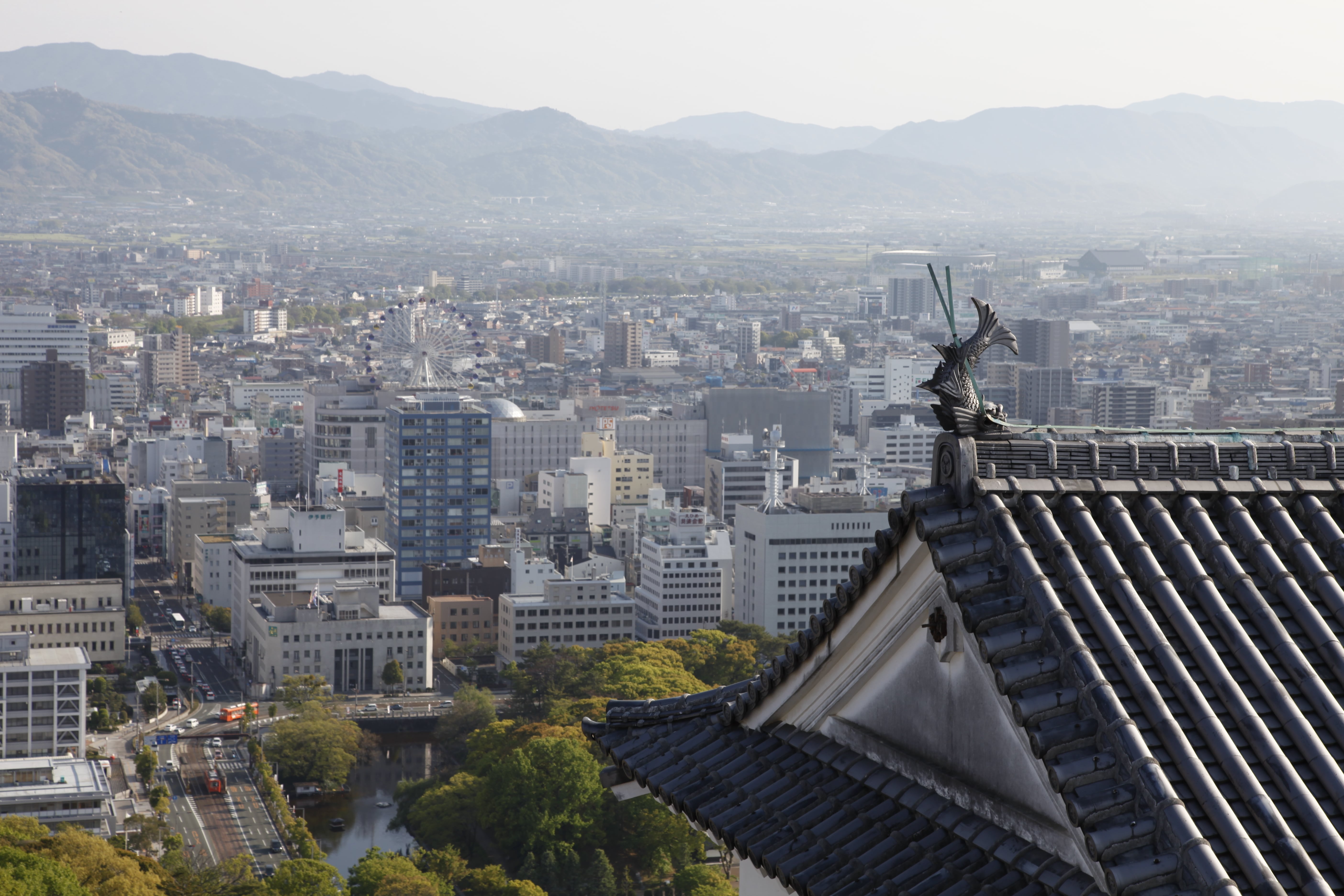
Matsuyama’s shitamachi castle town
The all new Matsuyama Tourist Information Centre is set to open in the heart of Matsuyama—the capital city of Ehime Prefecture in Japan—in Okaido on May 27. In celebration of its opening, this new featured series by MOSHI MOSHI NIPPON will explore the wonders of Matsuyama, a city abundant with places to shop, leisurely hot spots, must-visit restaurants, and opportunities to dive deep into its history and culture. You’re sure to discover something new and exciting about Matsuyama in this series.
In Episode 3 of All About Matsuyama, we’re taking a look at Matsuyama Castle, an absolutely indispensable location when travelling to Matsuyama which has and still watches over the development surrounding shitamachi castle town.
Matsuyama Castle sits at the heart of Matsuyama. It was built in 1603 on top of Mount Katsuyama which stands towering at 132 meters tall. At the foot of the mountain are two enclosures: Ninomaru and Sannomaru. The castle grounds are so big that you wouldn’t be able to see everything in a single day. It’s also home to only one of 12 existing original castle towers in Japan, is featured in Japan’s Top 100 Castles list, and was selected as one of the 100 Most Beautiful Historical Sites in Japan. It also ranked as the third best castle in Japan in a 2020 list. You clearly can’t pass up a visit to Matsuyama Castle when travelling to Matsuyama!
There are several ways to get to Matsuyama Castle. You can take the walking route upwards which takes about 30 minutes, but many people take the Ropeway or lift. You can buy a ticket for the Ropeway at the station outside Matsuyama Ropeway Shopping District. You will be greeted by Matsuyama Castle’s mascot character Yoshiaki-kun.
Matsuyama Castle was built following the Battle of Sekigahara by Katō Yoshiaki who was awarded for his service as a retainer of Toyotomi Hideyoshi. The main tower is the only part that has been preserved in its original form. Other parts of the keep have been restored throughout the years due to fires. Several parts of the castle have been designated as Important Cultural Properties including the main tower which can be accessed by visitors who can see what the castle was like when it was first built.
The castle is surrounded by a towering 14-meter stone wall which, though was built in order to prevent enemies from infiltrating, has an air of beauty to it. Two stone walls were built on the mountain slope to stop people from entering via the hillside too. This wall is considered a nationally precious example of Japanese history and is a must-see when visiting Matsuyama Castle.
It’s rare for a castle like this in the middle of a city to have such a history. The view from the very top of the castle keep, which is an extra 30 meters on top of the 132m tower, is a wonderful sight to behold as you gaze across Matsuyama. Many people visit the castle during the daytime, but the castle is actually one of the city’s most beautiful night time spots too. Whichever time of the day you decide to visit, you’re sure to learn much about Matsuyama’s history.
Information
Due to COVID-19, the castle, Ropeway Lift, and Ninomaru Gardens are temporarily closed until May 31, 2021.
Matsuyama Castle Homepage: https://www.matsuyamajo.jp
Matsuyama Castle Ropeway is a 5-minute walk from Okaido Station.
-
All About Matsuyama | Episode 2: Bargain Shopping Experience With machipay
The all new Matsuyama Tourist Information Centre is set to open in the heart of Matsuyama—the capital city of Ehime Prefecture in Japan— in Okaido on May 27. In celebration of its opening, this new featured series by MOSHI MOSHI NIPPON will explore the wonders of Matsuyama, a city abundant with places to shop, leisurely hot spots, must-visit restaurants, and opportunities to dive deep into its history and culture. You’re sure to discover something new and exciting about Matsuyama in this series.

Machia in Matsuyama Gintengai offers support for the machipay Service
In Episode 2 of All About Matsuyama, we’re looking at ‘machipay,’ a special service exclusive to Matsuyama that opens opportunities for a great value shopping experience.
Matsuyama’s shopping districts serve as the foundation of the lives of those residing in Matsuyama. Even visiting as a tourist for shopping and sightseeing you can enjoy an inherently ‘Matsuyama’ experience. Something that will make that experience even better is using the city’s machipay service which combines points, electronic money, and coupons all in one place. The service was created for both locals living in the city as well as tourists to create a more convenient shopping experience.
The machipay card and app feature three functions: Points, Electronic Money, and Shopping Coupons. It is compatible at countless popular stores around Matsuyama including Okaido, Gintengai, Matsuchika Town, Matsuyama Ropeway Shopping Street, and elsewhere. Every ¥100 of electronic money spent using the service nets you one point, and one point is equivalent to ¥1. Putting money on the card and paying with it means you’ll start collecting lots of points which can be used at these various stores. Coupons offered around the shopping districts and its stores can also be saved onto your machipay app, making it a very handy shopping companion.
But shopping isn’t the only way to earn machipay points. Attending events in the city, getting involved in voluntary work, and other activities that involve living in or like the people of Matsuyama will also garner you points.
The “machica Card” which is used for the service is sold at the machia shop (pictured above) in Matsuyama Gintengai everyday from 10:00-19:00. There’s also an app. As of April 30, 2021, there are 1,200 stores in Matsuyama that are participating in the service.
If you’re planning a trip to Matsuyama, make sure to use machipay.
Information
machipay
Contact machipay: 0570-055-081
machica shop Address: 3-7-10 Minatomachi, Matsuyama, Ehime 790-0012, Japan
machia Official Website: https://machica.jp
-
All About Matsuyama | Episode 1: The City’s History at Saka no Ue no Kumo Museum
The all new Matsuyama Tourist Information Centre is set to open in the heart of Matsuyama—the capital city of Ehime Prefecture in Japan— in Okaido on May 27. In celebration of its opening, this new featured series by MOSHI MOSHI NIPPON will explore the wonders of Matsuyama, a city abundant with places to shop, leisurely hot spots, must-visit restaurants, and opportunities to dive deep into its history and culture.
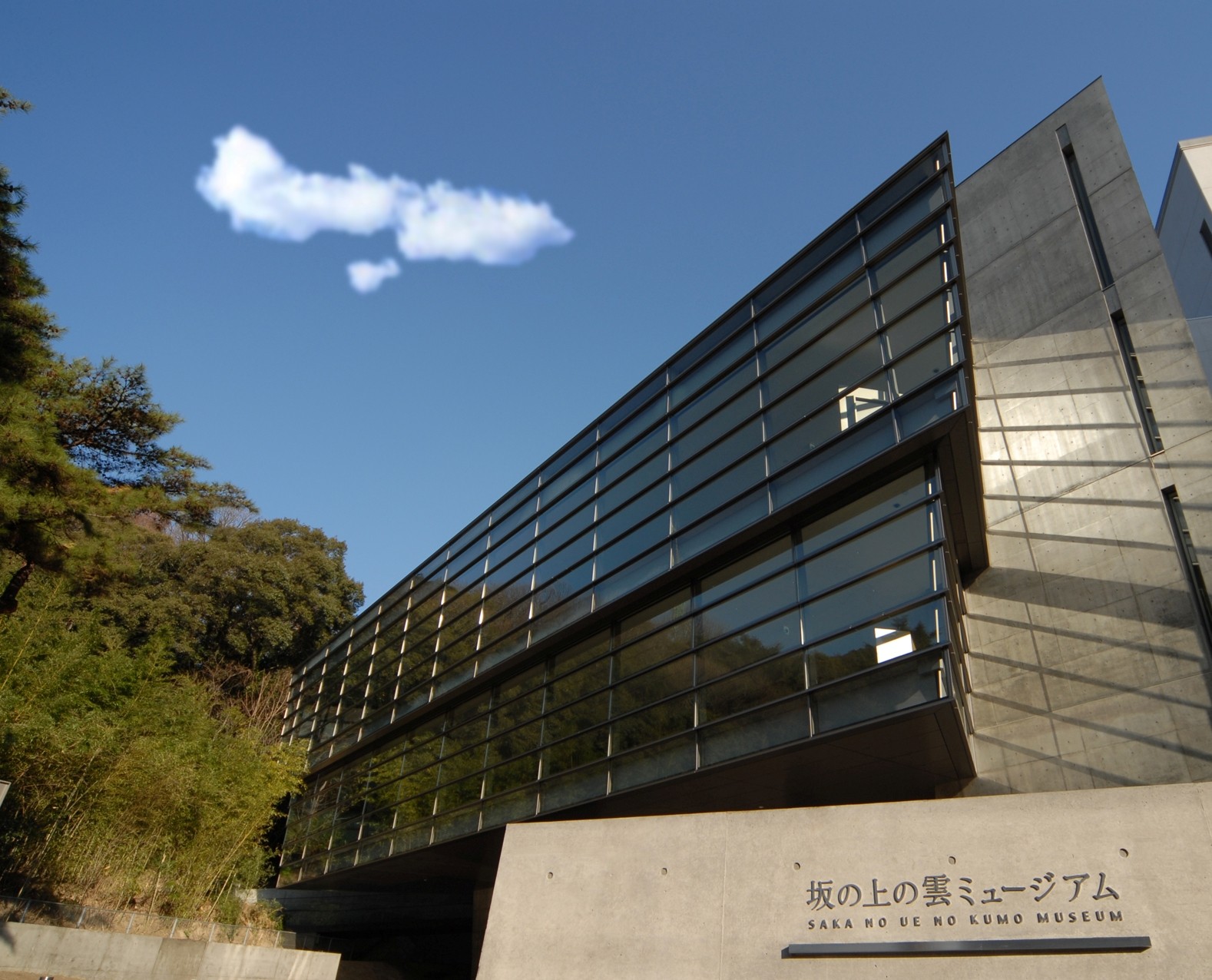
Outside the Saka no Ue no Kumo Museum
In Episode 1 of All About Matsuyama, we head to Saka no Ue no Kumo Museum. This museum, established in 2007, is located near Matsuyama Ropeway Shopping Street, an area lined with many independent stores which enjoys a relaxed atmosphere. The museum is inspired by the Japanese novel Saka no ue no kumo by Ryōtarō Shiba which was originally published serially between 1968 and 1972. A television drama adaptation aired in Japan from 2009 to 2011. The story is set during the Meiji period and follows three characters all of who are from Matsuyama: Akiyama Yoshifuru, his brother Akiyama Saneyuki, and their friend, Masaoka Tsunenori, also known as Masaoka Shiki. The museum exhibits a different theme every year: some themes have included an exhibit centred on these three characters, another on the Meiji Period when Japan modernised rapidly, and more, as well as other individual showcases.
But discoveries aren’t only to be found in the museums exhibits. Visitors should also pay attention to the building’s architecture which was conceived by international self-taught architect Tadao Ando. Its intriguing design stacks together two triangles. When creating the blueprint for the building, Ando ensured to create a form that would not interfere with the natural landscape or surrounding trees and nature. The museum has a relaxing atmosphere to it and every floor has slopes which connect to one another, so visitors can expect to enjoy an unrushed time there.
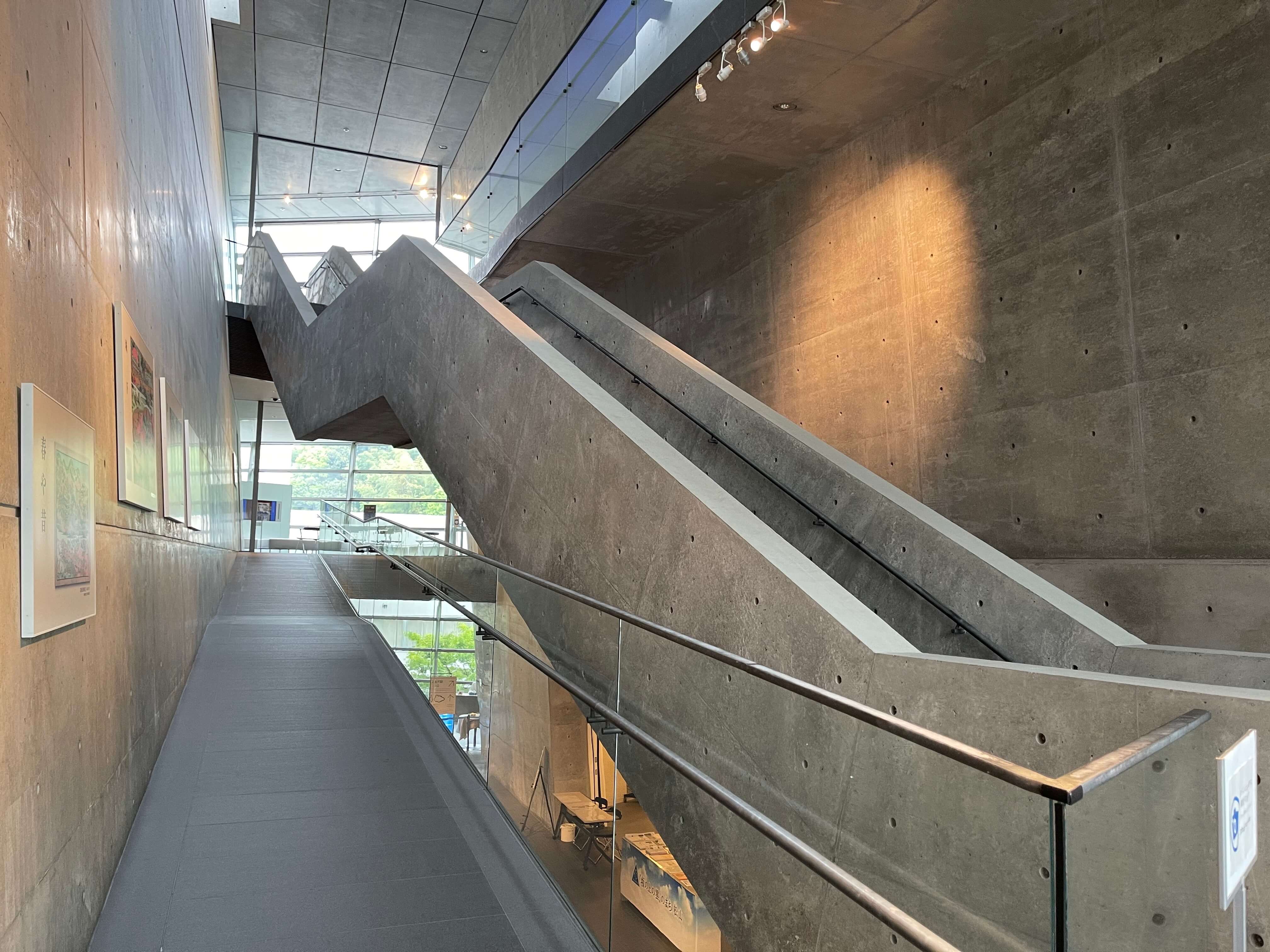
The staircase has a unique design which lacks common support columns
Saka no Ue no Kumo Museum is also one of the zones that is part of Matsuyama’s Field Museum Project which aims to turn the entire city into a ‘roofless’ museum, with every part of it offering something for locals and tourists to enjoy that is inherently Matsuyama.
The museum sells its own exclusive merchandise too, and there’s even a cafe to enjoy a drink and bite to eat after or during visitors’ stroll around the various exhibits.
If you’ve yet to visit Matsuyama, or have plans to, then Saka no Ue no Kumo Museum is a place we can’t recommend enough for putting on your list of must-visits.
Information
Saka no Ue no Kumo Museum
Address: 3-20 Ichibancho, Matsuyama, Ehime, 〒790-0001, Japan
Official Website: https://www.sakanouenokumomuseum.jp/
*The museum is temporarily closed until May 31, 2021. Subject to change depending on the state of COVID-19 and government guidelines.
-
Japan’s New High Speed Bus Travels From Kyoto to Mount Koya
23.August.2020 | SPOT
Keihan Bus and Nankai Rinkan Bus are bringing back their high-speed bus service this year which will run from September 18 to November 30. The service will incorporate a mandatory booking system, making it even more convenient than last year.
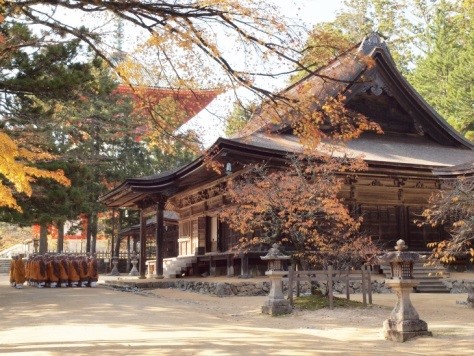
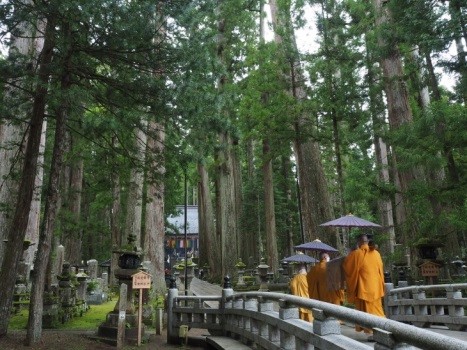
Mount Kōya is the name of the temple settlement found in Wakayama which first settled in 819. It is the centre for the Kōyasan Shingon sect of Japanese Buddhism and is designated as a World Heritage Site, one of many found in Kyoto alongside Kinkaku-ji, Kiyomizu-dera, and Shimogamo Shrine.

The new Kyoto Koya-san buses offer a smooth, direct ride to the World Heritage Site, arriving there from Kyoto in just 2 hours and 40 minutes.
Information
Kyoto Koya-san Bus (Japanese Name: 京都高野山線)
Running: September 18, 2020 – November 30, 2020Keihan Bus Official Website: https://www.keihanbus.jp/
-
MAXPLAN AZABU10: The New Landmark of Tokyo’s Azabu Juban District
31.May.2020 | SPOT
MAXPLAN Co. is set to open MAXPLAN AZABU10 on October 22, 2020 which is set to become the new symbol and a landmark of Tokyo’s Azabu Juban District. The building will offer many unique and extraordinary experiences.
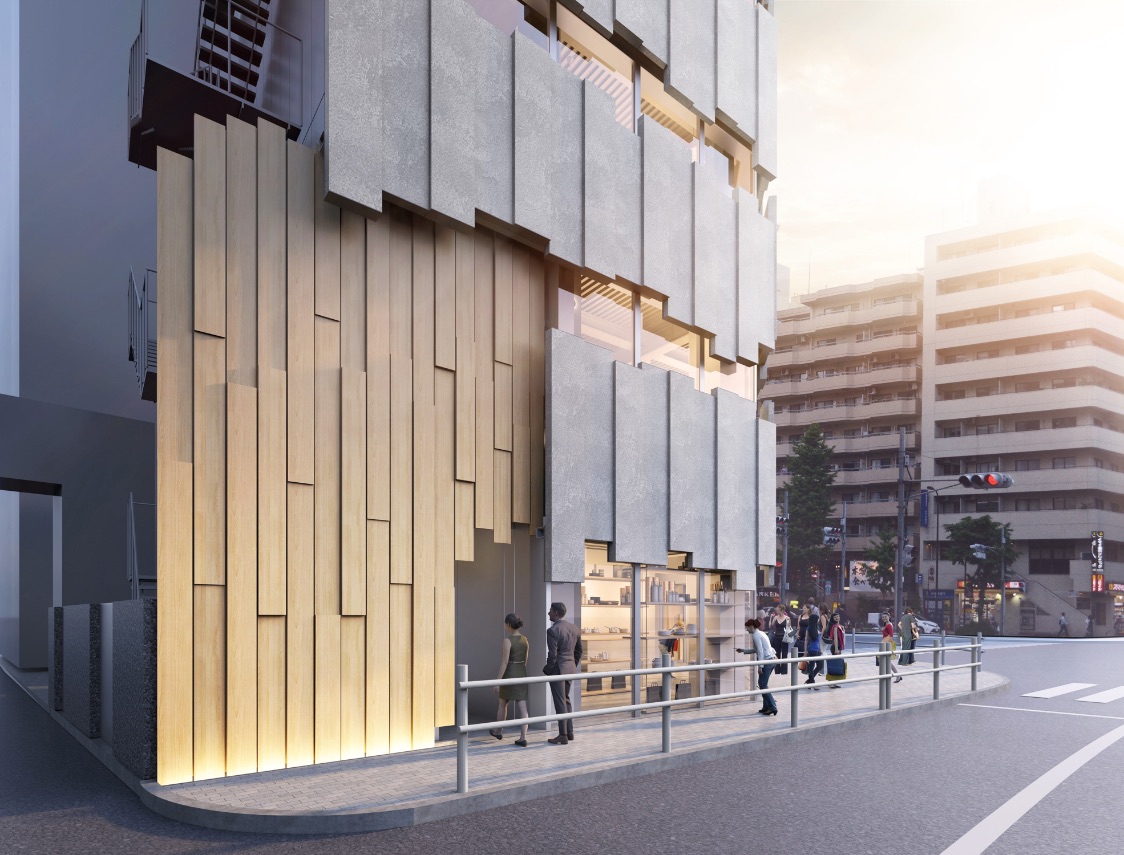
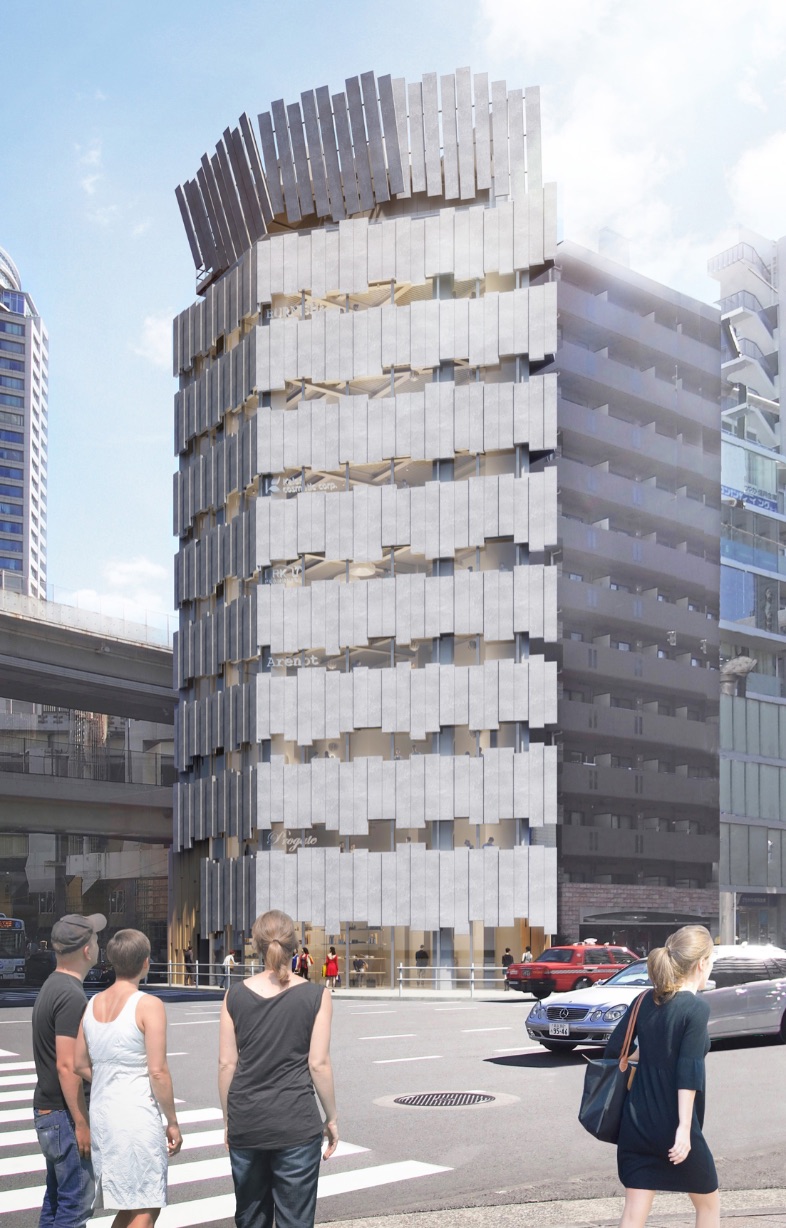
Nakamura Suzuko (CEO, MAXPLAN Co.) | Comment
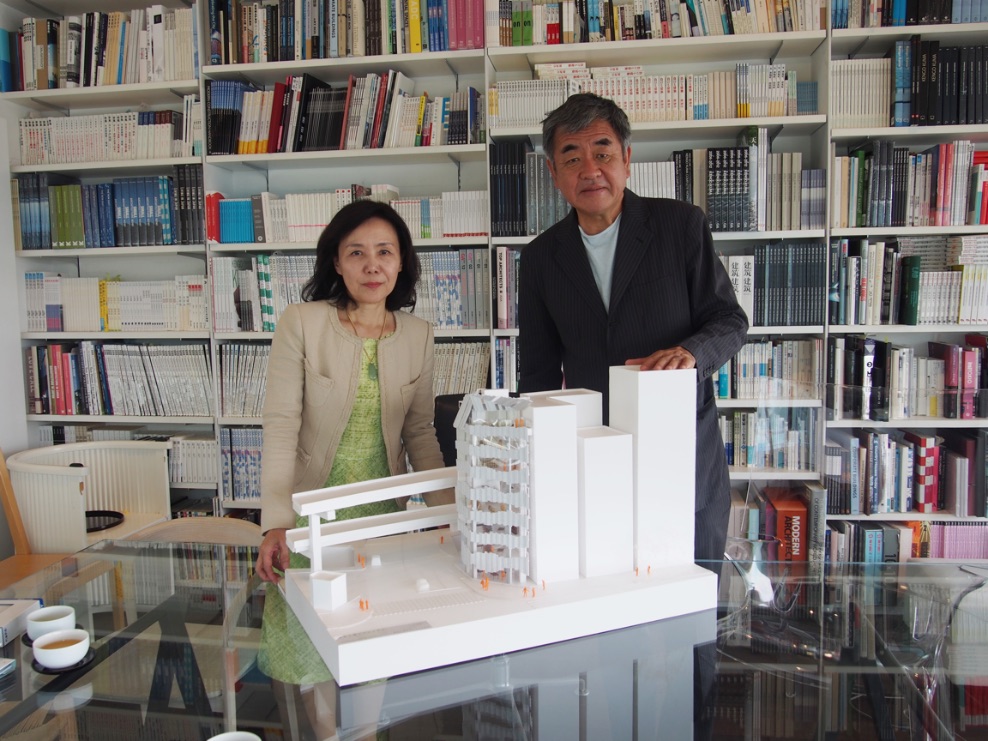
“This project borrows the strength of internationally-active architect Kengo Kuma. I am overjoyed to have the opportunity to be a driving force together with him once again. This building, which is the ‘Azabu Juban Development Project,’ will be a place that creates and discovers new collective value between companies and individuals. A place of creative symbiosis. It aims to offer well being for companies that brings about a sense of cultural values. It will be a creative space for companies and individuals to resonate, bounce ideas off, and flow with one another. I pray from the bottom of my heart that these things will serve as a connection to how we want to live in the future.”
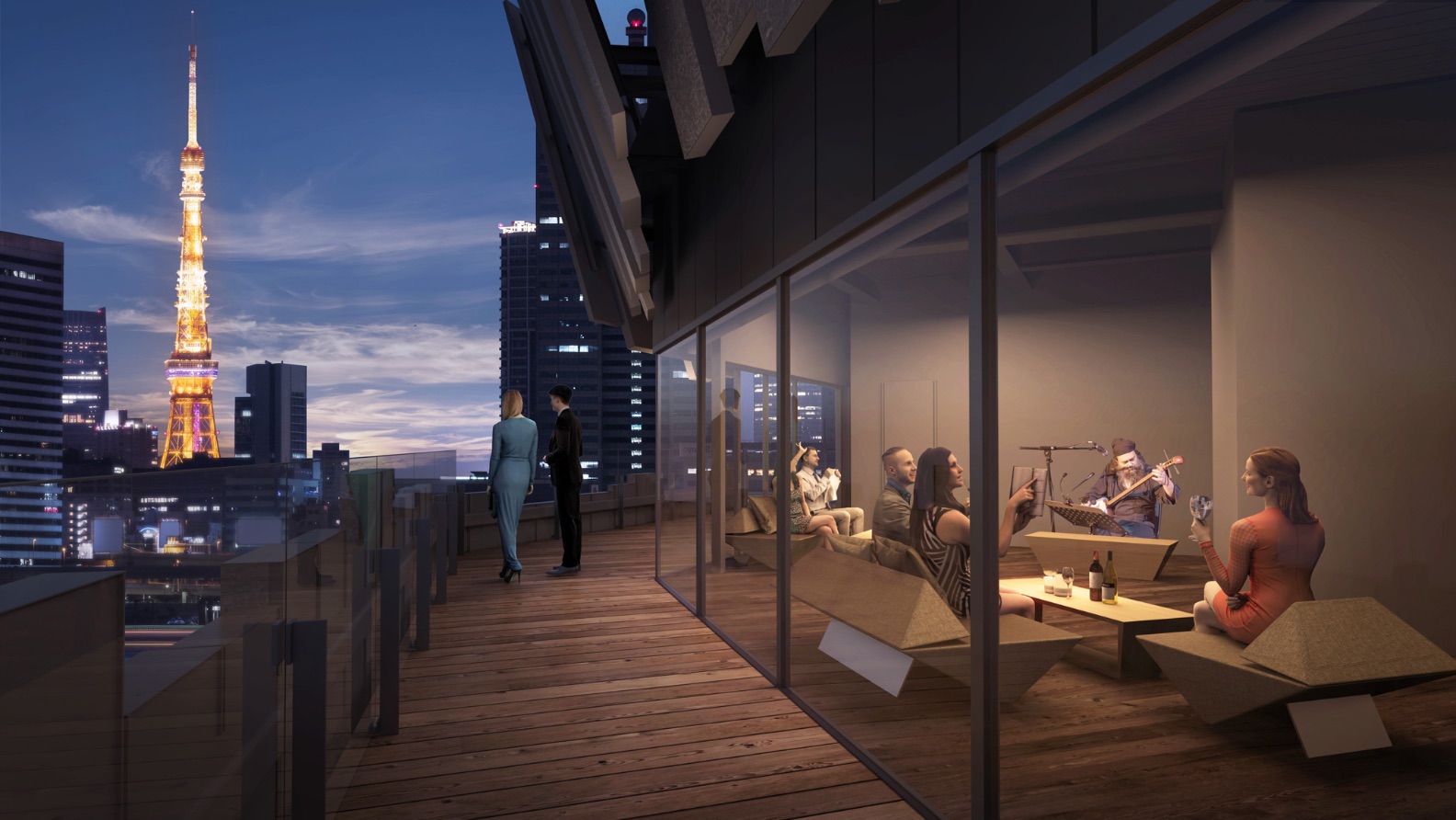
Kengo Kuma (Architect) | Comment
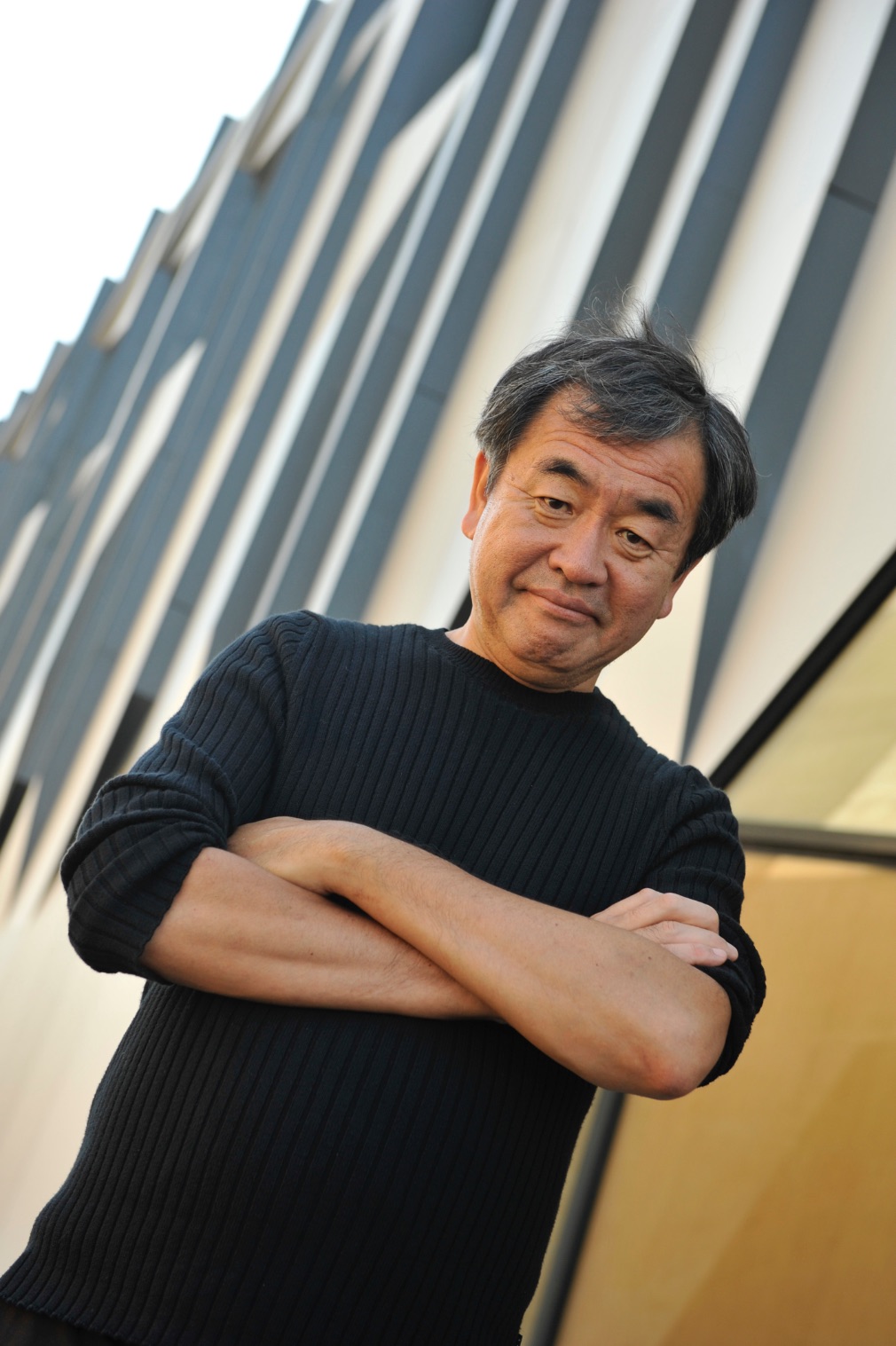
“Azabu Juban is Tokyo’s intersection between tradition and the future. I wanted to create a symbol for this district of ‘fluctuations’ around its crossroads. Combining panels of varying sizes with different heights, thicknesses, and textures expresses the district’s diversity and energy. I wanted the building to blend in as part of the ‘fluctuations,’ as well as create a small 3D city which itself has ‘fluctuations’ […]”
We look forward to seeing how this new landmark and symbol of Azabu Juban brings together the traditional and the futuristic.
Information
MAXPLAN AZABU10
Building Site: 4-1-1 Azabu Juban, Minato Ward, Tokyo
Access: 1-minute on foot from Azabu Juban Station (via Tokyo Metro Namboku Line and Toei Oedo Line)
Grand Opening: October 2020 (subject to change)

